MATHEMATICSStudents were briefed about the importance of mathematics in today's life. They were also provided with information about the career options available in mathematics and its interdisciplinary subjects, in order to help them understand the relevance of studying mathematics further. April Chapter: Statistics and Probability Students were introduced to the topic of probability by building on their previous knowledge of the subject and then leading them to higher applications of probability. Additionally, students had already learned about the statistical concepts of mean, median, and mode in grouped data, and further in this grade, they were introduced to ungrouped data. They learned about its application in real life. May Chapter: Real Numbers, Polynomials, Surface Area and Volume Students embarked on a journey through the number system, discussing real numbers, LCM, HCF, and the relationship between numbers and their LCM and HCF. They learned how to determine if a number is irrational. They learned how to check the number of zeros of a polynomial on a graph and about the relationship between the coefficients of a polynomial and its zeros. Additionally, they were taught about the surface area and volume of three-dimensional spaces. They interconnected the topic with architecture and development. SDG 9 was discussed during this concept. The students attempted their UT-1. ENGLISHLiterature: Students explored the themes in the poems "Fire and Ice" and "Dust of Snow" by Robert Frost, appreciating Frost's thematic concerns about humanity's fate and revisiting their knowledge of literary devices. Thematic concerns discussed in the poem "Fire and Ice" relate well to SDG 13: Climate Action. They also delved deeper into the chapters "A Triumph of Surgery" (SDG 3: Good Health and Well Being), "The Thief's Story," "The Midnight Visitor," "A Letter to God" (SDG 1: No Poverty, SDG 2: Zero Hunger), "Nelson Mandela: Long Walk to Freedom" (SDG 10: Reduced Inequalities), "A Question of Trust," and "From the Diary of Anne Frank" (SDG 16: Peace, Justice and Strong Institutions). By identifying and applying literary devices to understand the author's expression and intention, they developed their own analytical interpretations of these chapters. Additionally, students actively took notes and created mind maps for quick reference. Writing: Students practised different types of the Formal Letter, namely Letter to the Editor, Letter of Inquiry and Letter to Place an Order. Grammar: Students revised the rules of converting direct speech into indirect speech. SOCIAL SCIENCEHISTORY: “Nationalism is a cruel epidemic of evil that is sweeping over the human world of the present age,” ― Rabindranath Tagore Chapter 2: Nationalism in India At the onset of the chapter on nationalism in India, students engaged in a role-playing simulation of a historical event, such as a meeting of the Indian National Congress or a protest against British policies. They were encouraged to assume different roles, immersing themselves in the perspectives and motivations of various stakeholders. This interactive activity aimed to capture students' interest from the outset and provide a tangible context for understanding key concepts such as colonialism, resistance, and identity. The educator emphasized that by immersing themselves in the simulation, students would develop a deeper understanding of the intricate dynamics of historical events and the diverse array of viewpoints involved. Through embodying the experiences of individuals from the nationalist movement era, students cultivated empathy and honed critical thinking skills as they grappled with the challenges and decisions encountered by their assigned characters. Subsequent discussions allowed students to reflect on the significance of their roles and consider broader implications for India's quest for independence. This immersive experience served as a compelling introduction, paving the way for deeper exploration into the impact of nationalism on Indian society and its enduring legacy. The students also practiced several HOTS questions, competency-based questions, reasoning-based questions, and MCQs based on the concepts to assess their learning for UT-I. CIVICS Chapter 1: Power Sharing To initiate the class's exploration of power-sharing, a thought-provoking cartoon was presented, offering a visual introduction to the intricacies of power dynamics, particularly within the political landscape of Pakistan. This served as a springboard for students to express their perspectives on the prevailing situation in Pakistan, as well as the Russia-Ukraine war, fostering a platform for informed discussion and exchange of ideas. Subsequently, attention turned to a comprehensive case study analysis, featuring Sri Lanka and Belgium, meticulously elucidated through a visually engaging PowerPoint presentation. By delving into the unique socio-political contexts of these nations, students gained valuable insights into the diverse manifestations of power-sharing mechanisms. Central to the discourse were the foundational concepts of accommodation and majoritarianism, elegantly illustrated through a meticulously crafted flowchart. This visual aid served as a pedagogical tool to facilitate conceptual clarity, enabling students to grasp the nuances of these pivotal concepts with precision and depth. Through this multifaceted approach, students were not only equipped with a nuanced understanding of power-sharing dynamics but were also encouraged to critically evaluate real-world scenarios and engage in thoughtful dialogue. By fostering a culture of inquiry and analysis, this chapter laid the groundwork for students to navigate complex socio-political landscapes with acumen and insight. SDG-16 Peace, Justice and Strong Institutions ECONOMICS Chapter: Development During this chapter on development, students embarked on a comparative journey among countries, analyzing various facets of their socio-economic landscapes. They were prompted to reflect on their understanding of nations and encouraged to discern differences and similarities across a spectrum of parameters. In a bid to foster introspection, students were prompted to articulate their personal aspirations and goals. Through an activity emphasizing the theory of "Different people and different goals," they were tasked with delineating both short-term and long-term objectives for their lives. This exercise not only encouraged self-reflection but also facilitated an appreciation of the diversity in individual ambitions among peers. The notion of development was explored comprehensively, encompassing a range of domains pertinent to societal progress. Through illustrative examples, the class delved into the multifaceted nature of development, dissecting its parameters and discerning disparities between developed and developing nations. By engaging in critical analysis and reflection, students gained a deeper understanding of the complexities inherent in the pursuit of development. Through comparative analysis and personal introspection, they were empowered to navigate their own aspirations within the broader context of societal progress. SDG -4 Quality Education ,SDG-8 Decent Work and Economic Growth and SDG-11 Sustainable Cities and Communities GEOGRAPHY "Exploring India's Rich Tapestry: Teaching Resource and Development" Chapter - Resource and Development The students started with a Nature Walk and understood the relationship between nature, the institute, and technology. Students then began making a list of items present in their surroundings and identifying the ecological challenges they are facing. Learners grasped the importance of resources in economic development and sustainable livelihoods, recognizing their role in shaping human societies and environments. Learners comprehended the role of technology and human intervention in resource management and conservation, and they proposed strategies for sustainable resource utilization and conservation. Students were able to understand the importance of sustainable resource management, recognize the impacts of resource depletion, and develop strategies to reduce waste and promote conservation. They also demonstrated awareness of environmental stewardship and a commitment to preserving resources for future generations. Students acquired a comprehensive understanding of soil as a resource and the diverse soil types present in India. They grasped the pivotal role of soil in ecosystems and human activities, emphasizing the significance of conservation and sustainable land use practices. Students identified and described major soil types found in India, including alluvial, black, red, and laterite soils, comprehending their agricultural implications and regional distributions. This knowledge equipped them to appreciate the complexities of soil management across various contexts. The students also practiced several HOTS questions, competency-based questions, reasoning-based questions, and MCQs based on the concepts to assess their learning for UT-I. SCIENCEPHYSICS Light The concept of real and virtual images was explained so the students understood the differences between them. An activity was performed to show the importance of the intensity of light in image formation. Students focused on a deep understanding of the behavior of light after regular and irregular reflection. Students were taught the theory of image formation and understood the formation of images by a plane mirror. They practiced questions based on images formed by a plane mirror to understand the properties of these images. Students understood and applied the theory of image formation in spherical mirrors. They practiced drawing ray diagrams for images formed by concave and convex mirrors. They explained the characteristics of the images formed in different positions of an object. The mirror formula and its uses were explained to the students, and they practiced many numerical problems for better understanding. They practiced a worksheet and discussed it to check their preparation for the UT. The concept of refraction and its cause was introduced and discussed with the students. They understood the differences between the refractive index and the relative refractive index, and the application of the refractive index to determine the velocity of light in a medium. CHEMISTRY Chapter: Chemical Reactions and Equations Chemical and physical changes were classified through discussions. An activity in the chemistry laboratory was conducted where students observed the burning of a magnesium ribbon in air and concluded that a new substance is formed through chemical change in chemical reactions. They also inquired about the various gases evolved and how they are detected. Students were assigned an Edpuzzle video for self-assessment. In groups, students discussed and analyzed various indicators of a chemical reaction. The characteristics of chemical reactions were explained based on the discussion. Experimental activities were conducted to demonstrate the evolution of gases such as hydrogen and carbon dioxide. Other characteristics of chemical reactions were explained through various reactions in the chemistry laboratory. Students listed the characteristics of chemical reactions along with examples. A Quizalize game was provided for topic revision. Students understood the law of conservation of mass and the importance of balancing chemical reactions. A quiz was conducted in class to determine stoichiometric coefficients in balanced chemical reactions. Homework was assigned using the Topworksheet app for self-assessment. Balancing of chemical equations using fractional methods and the use of symbols in chemical reactions were also understood through the quiz. A balancing of chemical equations worksheet was assigned in MS Teams. Different types of chemical reactions were discussed with everyday life examples. Students prepared a flowchart of various types of decomposition reactions. The process occurring at various electrodes during the electrolysis of water was explained through an activity. The reaction of an iron nail in copper sulfate solution and the formation of a yellow precipitate by adding potassium iodide to lead nitrate were illustrated through a video for experiment-based learning. Students learned about the reactivity series and displacement reactions. They were able to distinguish between displacement and double displacement reactions. Redox reactions, oxidation, reduction reactions, and the corrosion of metals were also understood. Methods to prevent corrosion were discussed. BIOLOGY "Everything is theoretically impossible until it is done" The students started the session with recapitulating about all the processes going on in a living organism. By discussing real-life examples, students listed the characteristics of living things. Students understood the detailed process of photosynthesis and different types of heterotrophic nutrition with the help of concept maps and PowerPoint presentations. They understood the primary role of the circulatory system and functioning of the heart. They also conducted breathing exercises to understand the mechanism of inhalation and exhalation. [Inter disciplinary with sports] Furthermore, the students jogged in the classroom to understand why athletes faced muscle cramps and correlated it with aerobic/anaerobic respiration. [Inter disciplinary with sports] They understood that different organisms follow different modes of excretion such as kidney, lungs, skin and eyes depending on their habitat and food habits. Thus, the students developed the skill of drawing diagrams, observation and inquiry. They also practised several HOTS Questions, Reasoning-Based Questions and MCQs based on the concepts to assess their learning for UT-I. Lab. Test: Students did an activity to observe the stomata on the undersurface of a leaf. They also performed an experiment with lime water to prove that carbon dioxide is more in concentration in exhaled air than in inhaled air. Both activities helped to test and validate the concepts learnt in Chapter 1- Life Processes. HINDIपाठ्य पुस्तक के पाठ - बड़े भाई साहब को कराने का उद्देश्य स्पष्ट करते हुए पाठ का वाचन कराया गया | पाठ की संपूर्ण व्याख्या कराने के पश्चात पाठ से संबंधित प्रश्नावली पर चर्चा की गई | पाठ के अन्य महत्त्वपूर्ण प्रश्न भी कराए गए | प्राचीन शिक्षा प्रणाली और वर्तमान शिक्षा प्रणाली के बारें में छात्रों की राय पूछी गई और अनुभव से उत्पन्न ज्ञान और किताबों को पढ़ने से प्राप्त होने वाले ज्ञान में से छात्र किसे ज़रूरी समझते हैं , इस पर चर्चा की गई | पाठ में आए मुहावरे , उनका अर्थ कराया गया | कबीर जी का परिचय देते हुए उनकी रचित साखियों को कराने का उद्देश्य स्पष्ट किया गया और प्रत्येक साखी से मिलने वाली सीख के बारें में विस्तार से चर्चा की गई | साखियों पर आधारित अति लघु प्रश्न कराए गए | साखियों से संबंधित अन्य महत्त्वपूर्ण प्रश्न भी कराए गए | मीरा जी का परिचय देते हुए और उनकी श्रीकृष्ण के प्रति अनन्य भक्ति और दास्य भाव को दिखाते हुए मीरा जी का परिचय दिया गया | पदों के कठिन शब्दों के अर्थ बताते हुए विस्तृत व्याख्या कराई जाएगी | पदों के आधार पर अति लघु और लघु प्रश्नों के उत्तर कराए गए | श्रीकृष्ण जी ने किस प्रकार अपने भक्तों का उद्धार करने के लिए अलग - अलग रूप धारण किए और उन पर आने वाले संकटों से उन्हें मुक्त कराया - इसके बारें में विस्तृत जानकारी छात्रों को दी गई | पदों को कंठस्थ करते हुए उसका सस्वर वाचन कराया गया | व्याकरणिक विषय - समास की परिभाषा , उसका हिंदी व्याकरण में उपयोग आदि के बारें में बताते हुए समास के भेदों से परिचित कराया गया | प्रत्येक भेद की परिभाषा , उसका नियम और उसकी पहचान बताई गई | समास विग्रह और समस्त पद बनाना सिखाया गया | इसको कराने का उद्देश्य स्पष्ट करते हुए इससे संबंधित उदाहरण कराए गए | इकाई परीक्षा -१ में आने वाले विषयों का मौखिक और लिखित अभ्यास कराया गया | छात्रों के मन में आई दुविधाओं को भी शांत किया गया | देश की आज़ादी के आन्दोलन में हिस्सा निभाने वाले राज्यों में कलकत्ता की भूमिका का वर्णन करते हुए पाठ - डायरी का एक पन्ना पढ़ाया गया | पाठ को कराने का उद्देश्य स्पष्ट करते हुए पाठ का वाचन कराया गया | पाठ की व्याख्या कराने के बाद पाठ की प्रश्नावली पर चर्चा की गई | पाठ के अन्य महत्त्वपूर्ण प्रश्न भी कराए गए | पाठ से संबंधित गतिविधि भी छात्रों को करने को दी गई | रचनात्मक लेखन के विषय - अनुच्छेद लेखन का लिखित और मौखिक अभ्यास कराया गया | समाज में रिश्तों का महत्त्व स्पष्ट करते हुए पूरक पुस्तिका संचयन के पाठ - हरिहर काका को कराने का उद्देश्य स्पष्ट करते हुए पाठ का वाचन कराया गया | पाठ की संपूर्ण व्याख्या कराने के पश्चात पाठ की प्रश्नावली पर चर्चा की गई | पाठ से संबंधित अन्य महत्त्वपूर्ण प्रश्न भी कराए गए | ICTThe IT lessons commenced with a discussion of the IT syllabus and the collation of practical tasks. Students were asked to create a folder in OneDrive to save their practical tasks organized by month. The students then proceeded to create a pamphlet on SDG Goal 16: Peace, Justice, and Strong Institutions. They utilized the styling features of Apache OpenOffice Writer and inserted graphics to enhance the appearance of their pamphlets. They also had the opportunity to learn about additional features of Apache OpenOffice Writer such as templates, tables of content, and mail merge. The IT class continued with LibreOffice Calc, where students learned various calculations and explored features like consolidate, grouping sheets, and goal seek. Through these activities, students gained an understanding of the importance and functionality of OpenOffice software. SANSKRITसंस्कृत – अव्ययशब्दों का सम्यक ज्ञान प्रदान कर पदपरिचय में निपुणता प्राप्त कराई गई । कारक-विभक्ति – उपपद विभक्ति , संधि - वर्गस्य प्रथमवर्णस्य तृतीयवर्णे पंचमवर्णे च परिवर्तनम् पाठाधारित समास - अनु उप सह निर प्रति यथा आदि को तालिका द्वारा अभ्यास कराते हुए समास का उपयुक्त ज्ञान प्रदान कराया गया । हलंत शब्दरुपाणि - सकारान्त , तकारान्त , नकारान्त, अजंत शब्दरुपाणि - अकारान्त , आकारान्त, इकारान्त , ईकारान्त , उकारान्त ऋकारान्त - मातृ – पितृ का लिखित और अनुप्रयोगात्मक अभ्यास कराया गया । पाठ १ – ‘वाङ्मयं तपः ‘के माध्यम से पद्यांशावबोधन भाव पक्ष के साथ- साथ छात्रों ने स्वजीवन में सुभाषित श्लोकों से सामंजस्यीकरण करते हुए भाषिककार्य और मूल्यपरक प्रश्नों पर चर्चा की । पाठ: २ – नास्ति त्यागसमम् सुखम्’ पाठवाचन , श्रवण कौशल , भाषिक कार्य और गद्यांशावबोधन कार्य करने की योग्यता प्रदान की गई । पाठ: ३ – रमणीया सृष्टिरेषा’ पाठाधारित PBL- श्लोक आधारित तालिका कराते हुए भित्तिपत्र तैयार कराया । साहित्यिक कल्पनाशीलता और सृजनात्मकता की योग्यता का विकास का मौलिक ज्ञान प्रदान किया गया। संघर्षपूर्वक कठिन परिस्थितियों का साहस से सामना कर जीवन में प्रेरणाप्रद लक्ष्य प्राप्त करना । अंतर्विषयक- (संगीत और साहित्य) संवेदनशील होना , साहस से परिस्थितियों का सामना करना सहयोग, आत्मसम्मान और सद्भावना जैसे मानवीय गुणों की समझ को विकसित करना आदि। FRENCHThe class began its sessions by establishing essential agreements within the classroom. They recapped the grammar topic of the simple future tense and continued with the future perfect tense. The usage of compound relative pronouns was explained with the help of a PowerPoint presentation to enhance students' understanding. In addition to grammar, the class covered informal letter writing, message writing, and curriculum vitae for creative writing. Comprehensions were practiced using the textbook, workbooks, and additional study materials to develop good comprehension skills. Dialogue reading activities were conducted to help students understand the tenses. To reinforce the topics covered, workbook exercises were completed, along with lessons on culture and civilization. The students performed well in Unit Test 1, and there was a successful Parent-Teacher Meeting. As a simple practice, students were given the 2020 board paper to practice comprehension and creative writing. SPANISHThe month of April began with discussions about daily routines using reflexive verbs and impersonal "se." The class recalled the preterit tense conjugation for regular verbs and immersed themselves in irregular forms to be able to talk about past actions. The students attempted exercises from the workbook "Repaso 2," completed reading comprehensions, and elaborated their own question and answers on a given paragraph. Grammar topics such as direct and indirect object pronouns were discussed and practiced in class. A new past tense, "pretérito perfecto," was introduced in class. The class discussed its use and grammar and attempted exercises in the workbook. The life and work of famous authors like José Camilo Cela and Mario Vargas Llosa were discussed in class. More grammar topics, such as comparatives, superlatives, conjunctions, and gerunds, were discussed and practiced in class. With the help of the book "Aula 2," the class explored blogs and articles related to Latin American geography and culture. GERMANIn April and May, the class continued exploring the theme of Food and Health. The students eagerly embraced the opportunity to learn about the traditional cuisine of various German states and enthusiastically prepared a menu card in German. Additionally, they delved into the grammar of the chapter, focusing on two main topics. First, the students learned the usage of the conjunction "ob," enhancing their ability to form complex sentences. Second, they covered the use of adjectives with their endings, which enabled the students to construct sentences that effectively state advantages and disadvantages. This comprehensive approach helped students gain a deeper understanding of both the language and cultural aspects of German cuisine. PHYSICAL EDUCATIONBadminton: Outdoor Practice: Practicing footwork and movements without a shuttlecock, wall hitting, shuttle juggling, and knocking with partners. Gymnastics: Terminology terms like vault, beam, floor exercise, uneven bars, and pommel horse were discussed, which are apparatuses used in gymnastics. Judo: Osotogari (the technique for throwing) all fall; Ushiro Ukemi; Mae Ukemi; and Yuko Ukemi. Cricket: Basics of Cricket- Understanding the objectives and equipment used in the game of cricket, including bats, balls, and wickets. Friendly matches among students. Basketball: Dribbling: Learning to control and move the basketball using right-hand and left-hand dribbles. Defensive rebounding and passing while on the move. Football: friendly matches among students. Shooting (Grade 5 and Above): Holding dumbbells with one hand, body balance exercises related to balance, i.e., planks, squats, front planks, side planks, and one leg balance. Live fire with pellets and target paper. INDIAN DANCEIn their Indian Dance lessons, the students learnt: The power of Deva Shree Ganesha, destroy all your sorrows, enhance your happiness, and create goodness all around you. Lord Ganesha bless you with worldly bounties. Keep you protected from obstacles at all times, with this thought we at Suncity started the new session with a beautiful Ganesh Vandana. Students learnt beautiful postures, mudras and body balancing along with Kathak basics- Tatkaar, Hastak, Shringar ras and body movements. Song: Hey Ganraya Dance style: Kathak WESTERN DANCEIn their Western Dance lessons with Shree Ram, the students learnt: 1. The dance form: Contemporary 2. A brief overview of the process of creation in contemporary dance by using tools of improvisation like directions, levels (0,1&2) and source of the movement technique. 3. Techniques of Contemporary Dance such as Bum roll, Swishes and Stomach Roll. 4. Creation Technique (Construction and De-construction) – A dance routine was taught in the class and using this technique students had to break the pattern of the given sequence and then had to reconstruct any possible permutation and combination. INDIAN MUSICअप्रैल - मई माह में छात्र छात्राओं द्वारा की गई गतिविधिया: गायन अभ्यास: शुद्ध स्वर अलंकार । राग,गीत - लोक गीत माएरी । प्रयोग हुए वाद्य: तानपूरा, ऑडियो ट्रैक । गायन तकनीक: गायन के अभ्यास की बुनियादी तकनीक, प्रतियोगिता में प्रस्तुति के महत्वपूर्ण बिंदु इंवेस्टीचर कार्यक्रम मे चयनित छात्र छात्रों ने राग केदार मे कृष्णा गीत का प्रदर्शन किया वाद्य - कांगो , बोंगो एवं तबला का प्रारंभिक परिचय , हस्तमुद्रा (तीन ताल ) एवं भजनी WESTERN MUSICSong-"Fight Song" and "Sleeping Child" by MLTR. Students will be able to learn pitch skipping, tonality, and singing in unison, individually, or in groups.Learning the time signature,arpeggious along with the melody and different chord changes Instruments used:guitar,piano,drums and congo. VISUAL ARTSStudents were introduced to the Pattachitra painting from Orissa. Discussion on style of painting. Children learn to create lord jaggannath in Pattachitra artform by using elements and principles of art.
0 Comments
MathematicsGrade X students have done a revision of Preboard-1 examination. They have learned about time management to attempt the full CBSE board Mathematics Paper. They also prepared important notes and revision worksheets for important topics like trigonometry, Application of Trigonometry, Quadratics, Linear Equations, Triangles along with sample papers of past year board exams. EnglishPreparations for the pre-board examinations began in December. Students conscientiously submitted their final projects, a crucial component of their Assessment of Speaking and Listening (ASL) projects. Doubt-clearing sessions for all chapters were diligently conducted, offering students the opportunity to engage in discussions and delve into various questions, with a particular emphasis on specialized six-markers. A mock sample test was administered to assess their level of preparedness leading up to the pre-board examinations. Social ScienceFollowing a detailed chapter-wise revision, a doubt-clearing session was conducted to address any lingering uncertainties. Subsequently, a comprehensive Economics test was administered to gauge the students' proficiency in the subject. To further enhance their analytical skills and encourage collaborative learning, students were grouped into pairs. Within these pairs, they were tasked with both formulating and reframing questions, fostering a deeper understanding of the subject matter through active participation and teamwork. ScienceBiology : The preparation for Pre-board Exams started in December. The students submitted the Worksheet Assignments and Google Form as part of their Multiple Assessments. Students were divided into groups for the preparation of the Question Banks as part of Subject Enrichment Activity. A small lab session was conducted for students, and binary fission and budding were demonstrated in the class for recapitulation. A Doubt Clearing Session on all the chapters was held. A mock sample test was administered to assess the progress and improvement of students. The Pre-Board science assessment results were shared with the parents in the PTM. Physics: The preparation for Pre-board Exams started in December. The students submitted the Worksheet Assignments as part of their Multiple Assessments. Students were divided into groups for the preparation of the Question Banks as part of Subject Enrichment Activity on the basis on their revision. Additionally, personalized revision sessions are conducted individually, addressing each student's unique requirements to guarantee a thorough understanding. Chemistry: Students have been equipped with chapter highlights to enhance their revision, promoting a clearer grasp of crucial concepts. Classroom sessions involve a comprehensive review of diverse topics, complemented by thought-provoking questions that prompt students to actively participate and strengthen their comprehension. Additionally, personalized revision sessions are conducted individually, addressing each student's unique requirements to guarantee a thorough understanding. To gauge progress and enhancements, a mock revision test has been administered. Doubt Clearing Session on all the chapters was held. A mock sample test was administered to assess the progress and improvement of students. Hindiपूर्व बोर्ड परीक्षा की तैयारी कराई गई | छात्रों के मन में आ रही दुविधाओं को दूर किया गया | व्याकरणिक विषयों का लिखित अभ्यास कराया गया | रचनात्मक लेखन के विषयों का मौखिक और लिखित अभ्यास कराया गया | I.C.TThe students completed their practical files and class tests were conducted- Employability Skills, Digital Documentation, Web application and Database Management System. Blue print and sample papers were discussed for pre board exam. Sanskrit"द्रुतगति प्रश्नोत्तरी" के माध्यम से अभ्यास कराते हुए अनुप्रयोगात्मक अभ्यास और मूल्यांकन किया गया। । पत्रलेखन, अनुवाद, चित्रवर्णन संशोधनकार्य ,समास , प्रत्यय , उपपदविभक्ति और अनुवाद के अंतर्गत , उदाहरण प्रत्युदाहरण द्वारा स्पष्टीकरण कराते हुए अभ्यासपत्र द्वारा बोर्डपूर्व परीक्षा -१ के लिए पुनरावृत्ति कराई गई। FrenchOur Grade 10 students are well-prepared to face the upcoming pre-board exams with confidence. A combination of revision sheets, class tests, and small assessments has been employed to fortify their understanding of key concepts. The revisions served as invaluable resources for quick reviews and focused study. Beyond academics, motivational talks and counseling aim to boost students' confidence, fostering a positive mindset. SpanishAs a preparation for the Pre-board paper 2, revision sheets and extra worksheets have been shared with the students to enforce their knowledge and bring confidence and motivation mast required for a successful assessment . GermanGrade 10 student prepared for the Pre-board paper. A combination of revision sheets, class tests, and small assessments were practiced. Physical EducationNo class due to Mock Examinations
MathIn the ever-evolving landscape of mathematics, certain branches stand out as pillars of understanding and problem-solving. One such dynamic duo is trigonometry and circles. As we delve into the realms of revision and application, we uncover the profound impact these mathematical concepts have on both theoretical understanding and real-world scenarios. Revision of Trigonometry and its application: In November month, students recall and revisit all the topics of trigonometry and its application to strengthen their basics and calculation skills while dealing with ratio, angles, conversion and identities. Revision of Circles: In this month students also worked on integration of circles and trigonometric topics. The concept of radians, an alternative angle measurement system based on the radius of a circle, further solidifies the connection between circles and trigonometry. It allows for a seamless integration of circular motion concepts into trigonometric functions, providing a more natural and intuitive framework. EnglishIn November, students embarked on a fascinating journey through "Glimpses of India." This module provided them with a kaleidoscopic view of the diverse cultural tapestry of our nation. From the panoramic beauty of nature to the vibrant traditions, students delved into the heart of India's rich heritage. The literary exploration continued with an in-depth focus on "The Proposal." This humorous play not only entertained but also offered valuable insights into the nuances of effective communication in relationships. Students engaged in lively discussions, exploring the comedic elements and the subtle messages embedded in Chekhov's work. As part of their academic journey, students delved into Practice Assessments for UT II, honing their skills for the upcoming Pre-Board Examinations. The emphasis on critical thinking persisted, with specialized questions on speech, diary, and dialogue. Model responses using the PEEL approach, along with 3-marker and 6-marker analyses, provided students with a robust foundation for their upcoming assessments. Social SciencesGeography- Ch-Manufacturing Industries Manufacturing Industries play a pivotal role in the economic development of a country. Students delved into the intricacies of this crucial sector. Students explored the significance of these industries in generating employment, fostering economic growth, and contributing to a nation's Gross Domestic Product (GDP). Key concepts within this topic included the factors influencing the location of manufacturing industries, such as proximity to raw materials, labor availability, and transportation infrastructure. Environmental concerns and sustainable practices in manufacturing are also integral aspects discussed in Class 10 Geography. In summary, the study of Manufacturing Industries provided students with insights into the economic, social, and environmental dimensions of industrialization, fostering a holistic understanding of this fundamental aspect of a nation's development. Economics- Globalization and the Indian Economy The exploration of Globalization and its impact on the Indian economy commenced with a practical exercise, wherein students traced the manufacturing origins of everyday items. This led to the revelation that a significant portion of these goods is not produced within India but remains readily accessible in the country. To elucidate the interconnectedness of production on a global scale, a detailed flow chart was presented. This visual aid served as a guide to comprehend the intricate networks that link manufacturing processes across different countries. Further clarification on the concept of Multinational Corporations (MNCs) was provided through a case study focusing on Ford Motors. This real-world example offered insights into the operations and implications of MNCs. The discussion expanded to Indian MNCs, with a focus on entities such as TATA, unraveling the dynamics of their global business endeavors. This comprehensive approach aimed to provide students with a nuanced understanding of the multifaceted aspects of globalization and its profound influence on the Indian economic landscape Civics- Outcomes of Democracy The outcome of democracy was elucidated by examining the correlation between democratic governance and economic growth. This connection was further reinforced through a comprehensive analysis of graphs depicting the interplay between government structures and the economic trajectories of various countries. In addition, the concept of social inclusion within a democratic framework was expounded upon, drawing on real-life case studies to illustrate its practical implications. To enhance comprehension, a question-and-answer session was conducted in the classroom, providing students with an opportunity to actively engage with the material and seek clarification on any aspects of the democratic processes and their outcomes. History- "Print Culture and the Modern World" The exploration of "Print Culture and the Modern World" commenced with a brief recapitulation of prior knowledge, laying the foundation for understanding the multifaceted nature of print and its cultural significance. The class advanced into the topic by immersing students in a video showcasing the intricate process of printing newspapers, emphasizing their crucial role in our daily lives. This real-world connection allowed students to relate theoretical concepts to practical scenarios, fostering a deeper understanding. Various facets of the chapter were then elucidated using a multimedia approach, incorporating both a video (https://www.youtube.com/watch?v=DnDAuhgNHp4) and a PowerPoint presentation. This multimedia engagement aimed to cater to diverse learning styles, providing a comprehensive overview of the topics discussed. Introducing the concept of censorship added a layer of complexity to the discourse, prompting discussions on writings from the 18th and 19th centuries. The conversations delved into the suppression of these writings, driven by critical opinions of common people about British rule and the global exertion of British control. This historical context enriched students' perspectives on the socio-political dynamics of that era. Post the chapter exploration, a detailed question-and-answer session was conducted, allowing students to engage in a reflective dialogue. To reinforce learning, revision worksheets were assigned and collaboratively discussed, ensuring a thorough grasp of the chapter's key concepts. Science Biology- The November month started with recapitulation of Biology chapters with the help of Revision worksheets, Kahoot Quiz and Sample Papers. Students gave weekly tests to practice for the upcoming UT-II and Pre- Board Examination. The Grade X students also did the lab activities. They observed the slides of the binary fission and budding for understanding the asexual reproduction. Chemistry- November kicked off with a thorough review of Carbon and its compounds via Peer Teaching assessments. Students revisited the material using revision worksheets, a Kahoot Quiz, and sample papers, ensuring comprehensive preparation for the upcoming UT-II and Pre-Board Examinations. As an engaging practical component, Grade X students also had the enjoyable experience of creating soap during a laboratory activity. Physics- Topics: Electricity and Magnetic Effects of Current With the help of activity and discussion, students understood the significance of magnetic effect of current. With the help of circuit diagram and compass needle students understood the factors effecting the magnetic effect of current:- amount of current and direction of flowing current. With the help of stimulation video, students understood the magnetic effect of current due to a straight conductor and circular coil. By using the sight hand thumb rule and cork screw rule students were able to find the direction of current flowing through the circuit. In addition, students understood the force experienced by a current carrying coil placed in a magnetic field. By using Fleming's left hand rule, students understood the concept of direction of force experienced/motion of coil due to magnetic field. Students discussed about households circuits- the types of wire used ( Live, Neutral and Earth wire), the switch boards ( 5A & 15 A) used in normal household circuits, fuse & its types and MCB. With real life examples, students were able to differentiated between overloading and short-circuiting. In addition, students revised unit test syllabus using different worksheets. Hindiछात्रों को स्पर्श पाठ्य पुस्तक के पाठ - तीसरी कसम के शिल्पकार शैलेंद्र के बारें में बताते हुए पाठ की विस्तृत व्याख्या कराई गई | पाठ को कराने का मुख्य उद्देश्य छात्रों को यह बताना था कि एक फिल्म बनाने में फ़िल्मकार को कितनी परेशानियों का सामना करना पड़ता है और उसे अपना सब कुछ दाँव पर लगाना पड़ता है तब जाकर फिल्म तैयार होती है | पाठ - झेन की देन और गिन्नी का सोना को पढ़ाने का उद्देश्य स्पष्ट करते हुए इन पाठों को विस्तारपूर्वक पढ़ाया गया | बाल मनोविज्ञान से एकीकृत करते हुए उन्हें पाठ से संबंधित गतिविधि कराई गई , जिसमें छात्रों को शुद्ध सोना और मिलावटी सोने की पूर्ण जानकारी दी गई | पाठ की प्रश्नोत्तरी कराने के बाद पाठ से संबंधित अन्य महत्त्वपूर्ण प्रश्न कराए गए | पूरक पुस्तिका के पाठ - टोपी शुक्ला को पढ़ाते हुए उससे मिलने वाली सीख को स्पष्ट किया जाएगा | हिंदू और मुस्लिम एकता और मित्रता को स्पष्ट करते हुए पाठ को विस्तारपूर्वक समझाया गया | पाठ की प्रश्नोत्तरी पर चर्चा कराई गई | ICTStudents engaged in a comprehensive exploration of two vital themes: Entrepreneurial Skills. The sessions were dedicated to honing entrepreneurial instincts, teaching innovative thinking, problem-solving, and effective communication—all essential components of fostering an entrepreneurial mindset. Simultaneously, students delved into the significance of green skills, gaining insights into sustainable practices, environmental consciousness, and responsible resource management. Embark on a journey through IT essentials as Akash Sir navigates the intricacies of networking, emphasizing the importance of hands-on experience. Simultaneously, Andre from Portugal unveils the complexities of Database Management Systems, AI, and chatbot creation. In a parallel track, entrepreneurship takes center stage, defining its societal significance, exploring entrepreneurial qualities, debunking myths, and encouraging students to reflect on the potential of entrepreneurship as a career option. Join us for a day of discovery, practical learning, and discussions led by seasoned experts, offering a unique blend of technical insights and entrepreneurial wisdom. Sanskritसाहित्यपाठ:- साधुवृत्ति: समाचरेत् ‘ के विषय में जानकारी प्राप्त कर व्यावहारिक और जीवन में नैतिक सार्थकता को समझना। "द्रुतगति प्रश्नोत्तरी" के माध्यम से अभ्यास कराते हुए अनुप्रयोगात्मक अभ्यास और मूल्यांकन किया गया। सप्ताहांत अभ्यासपत्र द्वारा पुनरावृत्ति कराई गई । शब्दकोश में वृद्धि करते हुए शब्दों के वैज्ञानिकी रूप को जानना । कक्षा परीक्षा के माध्यम से मूल्यांकन कार्य कराया गया । अनुप्रयोगात्मक पुनरावृत्ति: - संशोधनकार्य- शब्दरूप – समास , प्रत्यय , उपपदविभक्ति और अनुवाद के अंतर्गत , उदाहरण प्रत्युदाहरण द्वारा स्पष्टीकरण कराते हुए अभ्यासपत्र द्वारा चित्रलेखन की पुनरावृत्ति कराई गई। FrenchIn November, our students delved into an intensive review of grammar concepts, comprehension skills, and message writing in preparation for the upcoming Pre-Board examinations. A noteworthy addition to the curriculum included listening exercises where students engaged with two audio clips, followed by questions related to the dialogue. This innovative approach not only enhanced their listening skills but also fostered effective comprehension. We are optimistic that these efforts will contribute to their success in the upcoming examinations. As we transition into December, we encourage students to persist in their dedicated efforts and approach their studies with a positive mindset. SpanishIn November, students begin by preparing for UT2 exams. Subsequently, they delve into the revision of indefinite pronouns and review the rules of imperatives, including formation and exercises. The present Subjunctive mood was introduced and studied in class. Classroom discussions also involve question and answer sessions on diverse topics. Finally, students shift their focus to preparing for the impending preboard examinations. https://arche-ele.com/presente-de-subjuntivo-conjugacion-gramatica GermanIn the month of November, the student was introduced to the theme engagement in social causes. Advanced grammar topics were practised in making sentences and writing an E-Mail. The revision sheet for UT 2 was discussed in class. Language skills were honed by practising grammar exercises from Get Ready Workbook. Physical EducationInter-house events for the various games were organized during the PE lessons: Track and field events: 50m, 4x50m mixed relay race, 100m, 200m, 400m, 4x100m mixed relay, long jump, shot put, and medicine ball throw, Obstacle race, Judo ,Gymnastics and Yoga practice. SPORTS DAY PRACTICE Indian DanceDiwali, the festival of lights, is mainly celebrated in honour of Lord Ram's return to his kingdom in Ayodhya, after staying in exile for 14 years. On this occasion Suncitizens learnt a beautiful dance, an amalgamation of the east meeting the west fusion, demonstrating Ram- The Warrior. DANCE FORM: Kathak & Russian classical Ballet SONG: Ramam Raghavam Western DanceIn their Western Dance lessons, the students learnt: 1. The combination steps of Bhangra Dance: Shoulder movement, leg taps, leg raise, side shuffle taps 2. Full body strengthening warm-up routine to keep one injury free and strong 3. Choreography was done keeping the essence of full movement intact and add the contemporary elements to make the art form interesting. DANCE FORM: Bhangra SONG: Jogiya by Surjeet Bindarakhia Indian Musicनवंबर माह में छात्र छात्राओं द्वारा की गई गतिविधिया: गायन अभ्यास: शुद्ध स्वर अलंकार । राग,गीत - राम भजन राम आएंगे गीत,नानक आया शबद , लोक गीत राग , रवींद्र संगीत - मेगहेर खोले गीत । प्रयोग हुए वाद्य: तानपूरा, ऑडियो ट्रैक । गायन तकनीक: गायन के अभ्यास की बुनियादी तकनीक, प्रतियोगिता में प्रस्तुति के महत्वपूर्ण बिंदु कक्षा ८ नवंबर माह में छात्र छात्राओं द्वारा की गई गतिविधिया: चयनित छात्र छात्रों ने प्रार्थना सभा मे राम आएंगे गीत का प्रदर्शन विभिन वाद्यों (हारमोनियम , तबला ,बांगो,शेकर्स , स्क्रेपर , घुंगरू , मंजीरा एवं ढपली ) के साथ किया। वाद्य - कांगो , बोंगो, बककेट ,टेमरिंड ,कलेप बॉक्स ,कीबोर्ड ,ढोल एवं ढोलकएवं तबला का प्रारंभिक परिचय , हस्तमुद्रा (तीन ताल ) एवं भजनी ठेका । Western MusicIn their Western Music lessons, students learnt: Songs: '10,000 reasons' by Matt Redman Students learnt to sing in solfege scale with different voicing, and breathe control. They sang in groups and individually. They also learnt to create the song in different melodies. Instrument used: Piano, drums, guitar DramaIn their Drama lessons, the students delved into the understanding of story dramatization. Since, a story is a simple narrative, there are certain points to consider when planning to dramatize it. To grasp this concept: 1. Story Selection and Scene Creation: Students began by selecting a story, dividing it into scenes, and writing dialogues. 2. Animal Story Transformation: Students chose an animal story, extracted its moral or lesson, and recreated the narrative in a contemporary context for humans. They performed the adapted story. 3. Scene Recreation: Students were organised into groups, assigning each group a scene from a chosen story. They were provided with the script or scene summary, and they worked collaboratively to recreate and perform the scene. 4. Emphasis on Performance Skills: Encouraged students to concentrate on character development, blocking, and using their voices and bodies to convey the essence of the story. 5. Exploration of Physical Theatre and Body Mechanics: To comprehend physical theatre and body movements, students engaged in an activity discussing machines, their components, and how they operate. They explored the idea that machines consist of moving and non-moving parts, differentiated between simple and complex machines, and acted as components of a machine in groups. This activity highlighted the importance of collaboration, teamwork, and synchronization within their teams. Visual ArtsStudents practised Boho art and minimal landscapes, and were introduced to making landscapes on canvas. Composition: Complimentary and supplementary colours Art Technique: Free hand, colouring, contour outlining Art tools: Pencil, crayons, scale, crayons, oil pastels, pencil colour Learning Outcome: Development of observatory and motor skills. SDG 4: Quality Education Life SkillAppreciating Diversity: This module covered multiple aspects like Interconnectedness, tolerance, perspective taking, cognitive dissonance and learning ways of building postive relationships. The activities were engaging and reflection-based. Activities: 1. Common Thread Activity: Distributed balls of yarn to students and they shared something unique about themselves. After sharing, they passed the yarn to someone else, creating a web that visually represents the interconnectedness of the class. ● This activity promotes a positive classroom environment by emphasizing the value of each student's individuality. ● The visual representation of the web reinforces the idea that the class is a collective group with shared experiences and connections. ● Encourages active listening and engagement as students learn about their peers.
MathematicsCh-8 and 9 (Trigonometry and Application of Trigonometry) Trigonometry is a branch of mathematics that often gets a reputation for being abstract and challenging. However, it's an incredibly powerful tool with real-world applications that extend far beyond the classroom. Trigonometry is not just another mathematical concept to be learned in school, it's a tool that has a significant impact on various aspects of our lives. Encouraging students to explore the practical applications of trigonometry can help them see the real-world relevance of this subject and spark their interest in mathematics. Students of grade X learnt about the different concepts of trigonometry including ratios, values and identities. They also applied these concepts in finding the height of a tree during the field activity. By doing this activity, they strengthen their complex thinking skills. EnglishIn October, students delved into a rich tapestry of learning experiences. They began with a study of "Madam Rides the Bus," which encouraged discussions on independence and determination. "The Sermon at Benares" sparked contemplation about Buddha's teachings and inner peace. The month continued with a focus on "The Proposal," a humorous play that highlighted the importance of clear communication in relationships. "The Tale of Custard the Dragon" transported students to an imaginative world, celebrating bravery and storytelling. In addition to literary exploration, students honed their analytical skills through various types of analytical paragraphs, including problem/solution, suggestion-based, argument-based, map-based, and diagram-based analyses. These exercises sharpened their critical thinking and communication abilities, equipping them with valuable tools for future literary and analytical endeavors. Social ScienceHISTORY: Chapter 3- "Print Culture and the Modern World" The discussion commenced with a thought-provoking question about the significance of printed materials in our daily lives, prompting learners to share their insights and explanations. Activity- Twisting the Whisper was done to make students understand the need pf printing. The evolution of printing was then detailed through a PowerPoint presentation, featuring images that illustrated the early printing techniques, enabling students to gain a deeper appreciation for the hard work and technological advancements that have occurred over the years. Additionally, information about the first printing machine, created by Johannes Gutenberg, was provided and enthusiastically received by the students. CIVICS: Chapter- Political Parties The functions and objectives of political parties in representing people and forming policies were elaborated upon. Differentiating between national and regional parties, as well as two-party and multi-party systems, was discussed. Challenges in the political party system and the need for reforms were addressed. Real-life case studies were provided as examples to illustrate how political parties operate in different countries. Students were equipped with the knowledge to actively engage in democratic processes. GEOGRAPHY: Chapter- Mineral and Energy Resources Students delved into the world of Earth's treasures, exploring valuable minerals that shape our industries and essential energy resources that power our modern lives. The chapter provided students with a comprehensive understanding of the significance of these resources, their formation, distribution, and the environmental considerations associated with their extraction and utilization. The importance of sustainable resource management in the face of environmental challenges was also highlighted. ECONOMICS: The discussion on the chapter "Money and Credit" commenced with an activity called "Treasure Hunt." This activity aimed to provide students with insights into both the barter system and the monetary system. Students were also shown images depicting the evolution of currency, from punch-marked coins to paper money. Key concepts such as the formal and informal sectors, terms of credit, and collateral were explained through case studies, and real-life connections were established. To foster a deeper understanding, students were tasked with listing the distinctions between the formal and informal sectors, along with the challenges faced by individuals in each sector. The cooperative system and Self Help Groups (SHGs) were introduced to make students aware of the difficulties encountered by the less privileged in society. To inspire and motivate the students, case studies of AMUL and LIZZAT papad were shared. Additionally, information about Mohammad Yunus, the founder of Grameen Bank and a Nobel Prize recipient, was shared with the students. As part of their learning experience, learners were briefed about the government's ban on 2000 currency notes in our country. [SDG - NO POVERTY] SciencePHYSICS: Chapter: Electricity With the aid of circuit diagrams and real-life examples, students grasped the significance of series and parallel combinations of resistors. Using mathematical methods, students derived the formula for the equivalent resistance in both combinations. They applied this concept to solve numerical problems, ensuring their understanding of series and parallel combinations of devices in complex circuit diagrams. Furthermore, through discussions about devices such as heaters, geysers, electric irons, microwave ovens, etc., students gained an understanding of the heating effect of electricity and the factors that influence the heat produced in these devices. As safety is paramount in any electrical task, students also learned about the safety of these electrical gadgets through observations and discussions on the use of fuses and MCBs (Miniature Circuit Breakers) in our homes. Practice Task: Numerical problems on the combination of resistors and the heating effects of current. CHEMISTRY: Chapter 4: Carbon and its Compounds Students were introduced to the concept of carbon and its occurrence in both free and combined states through a video presentation. They recapped their understanding and recorded their insights. A hands-on "Ball and Stick Activity" was conducted, where students created models of carbon allotropes such as graphite, diamond, and buckminsterfullerene under the guidance of facilitators. Additionally, an activity called "Build the Molecule" was carried out, where students prepared molecule cards or lists to work with. The octet rule was clarified, fostering discussions and collaboration within the groups. Multiple bonds and their effects on electron dot structures were discussed. The different types of hydrocarbons were explained using a flowchart, accompanied by relevant examples. An art integration activity was conducted to illustrate the homologous series of alkanes, alkenes, and alkynes on A3 sheets to help students distinguish between them. A quiz game was organized after demonstrating the rules of IUPAC Nomenclature. Students gained hands-on practice with the IUPAC nomenclature system, and the activity was reflected upon. Types of organic reactions, along with examples, were explained using the Ball and Stick Model. Incorporating "Design Thinking," an empathy question was discussed to identify key challenges related to fuel usage and its environmental impact. Students studied ethanol and ethanoic acid through hands-on experiments and discussed soap formation. The significance of soaps and detergents, along with their structure, was explained and reviewed through exercises and in-text questions. BIOLOGY: Chapter - Our Environment Students learned about different concepts related to the environment through a fun activity. Each student used two placards. On the first placard, they wrote one term related to environmental science, and on the second placard, they wrote the meanings of each term in real-life situations. The placards were then collected, jumbled up, and pinned on the back of each student. Now, the students looked around and searched for their buddies by correctly matching up the terms. It was a great and enjoyable way for them to learn the important terms and concepts of this chapter. Students also learned about biological magnification, the ozone layer, depletion of the ozone layer, and its impact with the help of a PowerPoint presentation and a related video link. A short Kahoot Quiz was held in the class to assess their learning. [IT Integration] Furthermore, students brainstormed and suggested how the local bodies (panchayat, municipal corporation, resident welfare association) deal with waste, in line with SDG 12 - Responsible Consumption and Production. Hindiअर्धवार्षिक परीक्षा की उत्तर पुस्तिका दिखाने के बाद और शिक्षक- अभिभावक चर्चा के पश्चात छात्रों को स्पर्श पाठ्य पुस्तक के पाठ - अब कहाँ दूसरों के दुख से दुखी होने वाले पढ़ाया गया | पाठ से मिलने वाली सीख से अवगत कराते हुए उन्हें सतत विकास लक्ष्य - जलवायु कार्रवाई से एकीकृत करते हुए गतिविधि कराई गई | अंग्रेज़ों के शासन काल में हुए अत्याचारों से छात्रों को परिचित कराते हुए उन्हें कारतूस पाठ पढ़ाया गया | पाठ को कराने का उद्देश्य स्पष्ट करते हुए उन्हें पाठ की व्याख्या को मस्तिष्क मानचित्र के माध्यम से कक्षा में लिखने को दिया गया | कविता -आत्मत्राण , पर्वत में पावस कर चले हम फ़िदा के कवि के बारें में बताते हुए उसकी विस्तृत व्याख्या की गई | व्याकरण के विषयों का मौखिक अभ्यास कराया गया | ICTThe students learnt about Web Applications and Security. They explored working with Accessibility options in windows, Instant messaging, and chatting with contact were introduced to the students. They also learnt about maintaining Workplace Safety and Preventing accidents and emergencies, Protect health and safety at work. The students completed their practical files. Sanskritसाहित्यपाठ: ८ तिरुक्कुरल्-सूक्ति- सौरभम् (तिरुवल्लुवर महाकवि:) महाकवि तिरुवल्लुवर के विषय में जानकारी प्राप्त कर आधुनिक जीवन में सार्थकता को समझना। तिरुक्कुरल का निर्माण तिरु और कुरल दो शब्दों को जोड़कर हुआ है, अर्थात तिरु + कुरल = तिरुक्कुरल इत्यादि जानकारी प्रदान करना । गतिविधि – कार्यपत्रिका पर सान्वय श्लोक लिखते हुए उनका अर्थ बताना और श्लोकगायन आधारित प्रस्तुतीकरण कराया गया। "द्रुतगति प्रश्नोत्तरी" के माध्यम से अभ्यास कराते हुए अनुप्रयोगात्मक अभ्यास और मूल्यांकन किया गया। सप्ताहांत अभ्यासपत्र द्वारा पुनरावृत्ति कराई गई । शब्दकोश में वृद्धि करते हुए शब्दों के वैज्ञानिकी रूप को जानना । कक्षा परीक्षा के माध्यम से मूल्यांकन कार्य कराया गया । अनुप्रयोगात्मक पुनरावृत्ति: - संशोधनकार्य- शब्दरूप - संधि: - समय: और अनुवाद के अंतर्गत , उदाहरण प्रत्युदाहरण द्वारा स्पष्टीकरण कराते हुए अभ्यासपत्र द्वारा उपपदविभक्ति और चित्रलेखन की पुनरावृत्ति कराई गई।इकाई परीक्षा की लिखित पुनरावृत्ति कराई गई । FrenchIn October, as part of the preparation for the upcoming Parent-Teacher Meeting (PTM), students engaged in comprehensive activities aimed at improving their academic skills and enhancing their understanding of the curriculum. The focus was on reviewing the answer scripts of the recent half-yearly exams, providing students with valuable insights into their performance and areas of improvement. Additionally, students delved into the topic of Pronoun Possessives and the expression of avoir in grammar, fostering a deeper comprehension of language structures. Regular practice in informal letter writing was emphasized, honing students' communication skills and written expression. To promote active learning, a variety of hands-on activities were integrated into the curriculum. These activities, sourced from both the textbook and workbook, engaging with the material in a dynamic and practical manner. This approach not only enriched their learning experience but also facilitated a more interactive and engaging classroom environment, enabling students to grasp complex concepts with ease. GermanIn October students delved into the grammar topic of usage of conjunctions. The lesson on Multilingualism and language learning helped to expand their reading and understanding of comprehensive texts. Dialogue and E-Mail writing were discussed. To enhance their understanding and promote active learning, students actively participated in hands-on activities. These exercises, drawn from both the textbook and workbook, offered a dynamic approach to education, enabling students to apply their theoretical knowledge practically. The class concluded with presenting a project on the theme"Learning a Foreign Langauge". SpanishIn October, students engaged in a comprehensive review of the Spanish language, delving into the nuances of the Preterito Perfecto, Preterito Imperfecto, and Preterito Indefinido verb tenses. They explored the contrasting features of these tenses, honing their language skills through various interactive exercises. The class review important Q.A. with the purpose of improving the vocabulary and writing skills. Additionally, the month included a fascinating journey into the life and works of renowned author Mario Vargas Llosa. To enrich their cultural awareness, students also delved into the vibrant tapestry of Spanish and Latin American food, immersing themselves in vocabulary, iconic dishes, and the rich culinary traditions that reflect the essence of these regions. Physical EducationInter-house events for the various games were organised during the PE lessons: Individual games: Badminton (based on 11 points Knock-out), Swimming and athletics (heats). Track and field events: 50m, 4x50m mixed relay race, 100m, 200m, 400m, 4x100m mixed relay, long jump, shot put, and medicine ball throw. Indian DanceThe legend associated with Navratri speaks about the great battle between the powerful demon Mahishasura and Goddess Durga. On each day of Navratri, an incarnation of “Goddess Durga” is worshipped to celebrate the day of her victory over Mahishasura, and the ultimate victory of 'Good over Evil.” Students learnt a Durga stuti depicting Mahishasur mardan. DANCE FORM: Classical SONG: Aigiri nandini Western DanceIn their Western Dance lessons, the students learnt: 1. The combination steps of Bhangra Dance: Shoulder movement, leg taps, leg raise, side shuffle taps 2. Full body strengthening warm-up routine to keep one injury free and strong 3. Choreography was done keeping the essence of full movement intact and add the contemporary elements to make the art form interesting. DANCE FORM: Bhangra SONG: Jogiya by Surjeet Bindarakhia Indian Musicअक्टोबर माह में छात्र छात्राओं द्वारा की गई गतिविधिया: गायन अभ्यास: शुद्ध स्वर अलंकार । राग,गीत - राम भजन , लोक गीत राग , रवींद्र संगीत - मेगहेर खोले गीत । प्रयोग हुए वाद्य: तानपूरा, ऑडियो ट्रैक । गायन तकनीक: गायन के अभ्यास की बुनियादी तकनीक, प्रतियोगिता में प्रस्तुति के महत्वपूर्ण बिंदु कक्षा ६,७,८,९- चयनित छात्र छात्रों ने मानसिक स्वास्थ्य सप्ताह प्रार्थना सभा मे शांति मंत्रों का प्रदर्शन विभिन वाद्यों (हारमोनियम , तबला ,पखावज ,शेकर्स , स्क्रेपर , घुंगरू , मंजीरा एवं ढपली ) के साथ किया. कक्षा ७ ,८ - चयनित छात्र छात्रों ने स्पीकमेके कार्यक्रम मे हिस्सा लिया तथा वॉइलें का प्रस्तुतीकरण देखा । कक्षा ९ - मिलान्ज कार्यक्रम मे गीतोपदेश प्रतिस्पर्धा मे गीता के श्लोकों का गायन पखावज के साथ प्रस्तुत किया तथा दूसरा स्थान प्राप्त किया । वाद्य - कांगो , बोंगो, बककेट ,टेमरिंड ,कलेप बॉक्स ,कीबोर्ड ,ढोल एवं ढोलकएवं तबला का प्रारंभिक परिचय , हस्तमुद्रा (तीन ताल ) एवं भजनी ठेका । Western MusicSong: 'Heal the world' The lesson was incorporated with technology Instruments used: Computer, Digital audio workstation DramaUses of Properties in Drama and Theatre: Through various games, activities, and role-play, students gained a deeper understanding of how props serve multiple purposes and significantly enhance storytelling and the overall audience experience. Props are used for: 1. Characterization: 2. Setting and Atmosphere 3. Plot Advancement: 4. Interaction 5. Visual Interest: The following activities were done by the students: 1. Discussion about Types of Set Props: This includes Hand Props, Costume Props, Personal Props, and Symbolic Props. 2. Group Storytelling: Students were divided into groups and provided with 2-3 props for each group. Each group then creates a story centered around these props and performs it. 3. Exploration of Various Uses for Props 4. Creating Prop Advertisements: Students chose a prop available in the classroom and designed an advertisement to promote it. Mélange 3.0“Learning through the arts reinforces critical academic skills in reading, language arts and math, and provides students with the skills to creatively solve problems.” – Michelle Obama Mélange 3.0, the annual inter-school fest at Suncity School 37D, kicked off on October 27th with a flurry of activities focusing on the multiple intelligences integrated with the language arts. Participants eagerly registered for their chosen events, setting the stage for a day of artistic and literary exploration. The inauguration was a grand affair, commencing with the lighting of the traditional lamp and the Shanti Shloka by the school choir. The esteemed guest of honor, acclaimed author and poet, Dr. Ved Mitra Shukla, emphasized the significance of gatherings like Mélange and provided counsel to the students. He encouraged them to actively seek knowledge and urged them to break out of their passive roles. Following this, our principal, Ms. Guneet Ohri, addressed the audience extending a warm welcome to all, expressing gratitude for their presence. Ms. Ohri highlighted the unique strengths and talents possessed by each individual, underscoring the pivotal role of language as a platform for expressing emotions in a diverse array of events. Additionally, she expressed her gratitude towards our distinguished panel of judges, comprising Ms. Hina Madaan, Ms. Deepshika Srivastava, Ms. Priyanka Balhara, Mr. Ashmeet Singh, Ms. Geeta Devi, and Ms. Harpreet Bhatia. A highly anticipated moment was the unveiling of the Mélange teaser, offering attendees a tantalizing glimpse into the creative journey that awaited. With the teaser presentation, Ms. Guneet Ohri officially declared Mélange 3.0 open, ushering in a day of artistic expressions, literary endeavors, and cultural celebrations, all set to leave a lasting impact on the school and its community, celebrating the beauty of linguistic diversity and the richness of human expression. Day 2 of Mélange began with welcoming the Chief Guest, Ms. Manna Bahadur, author and erstwhile Doordarshan presenter who had also made her mark in the All India Radio. Five more exhilarating events were hosted, making the fest more invigorating. The highlight of the day was a panel discussion featuring renowned figures from the literary world. The panel discussion featured luminaries such as Kevin Missal, a celebrated author; Ms. Chander Suta Dogra, an accomplished author and journalist; Ms. Reena Puri, a notable contributor to Amar Chitra Katha. To steer this thought-provoking discussion, we had the privilege of having Ms. Krithika Nair, an esteemed editor and publisher, as the moderator. The final day of Mélange 3.0 was graced by the presence of two members of the school management, Ms. Nandini Singh and Ms. Varsha Jhorar. Following the enlightening panel discussion, the event concluded with an award ceremony, where the deserving victors were honored. The prestigious rolling trophy was clinched by the talented and enthusiastic team from DPS Sector 45, marking a fitting conclusion to an event that had celebrated the beauty of literature, art, and intellectual discourse. We would like to thank, our knowledge partner- Amar Chitra Katha, our title sponsor- Kunzum Books, our co-sponsors- Maker Shala, Safe Xtra and Scholarsmerit, for making our two-day literary extravaganza successful. Life SkillsOur school recently held Wellness Week from October 9th to October 15th, aiming to promote holistic well-being and self-care. Students from Grade VI to VIII actively took part in a range of engaging activities and initiatives. Throughout the week, students created smileys, an appreciation corner, and an emoji chart to express their emotions and encourage open communication. They also learned about World Wellness Day on October 9th. Some highlights of the week included the creation of a "HOPE wall" where students shared uplifting messages and a stress management workshop that concluded with a calming meditation session. The week ended with a vibrant assembly, emphasizing the need for ongoing self-care and mutual support. Overall, Wellness Week was a successful event that brought our school community together and highlighted the importance of well-being.From Mindful Monday to Fun-filled Friday, Sadaya Week made a remarkable impact on our Grades 9-11 students also. Each day brought unique activities and outcomes, resulting in increased self-awareness, reduced stigma, amplified gratitude, enhanced self-esteem, and a rejuvenated perspective on well-being. This transformation nurtured a more compassionate and empathetic school community that prioritizes the paramount importance of mental health. Together, we create a healthier and more mindful school environment! MATHEMATICSIn the month dedicated to geometry, the focus was on two fundamental shapes in mathematics: triangles and circles. Triangles, characterized by their three sides and angles, serve as the foundation for trigonometry, enabling measurements and calculations across various fields. On the other hand, circles, known for their symmetry, hold significant importance in geometry, physics, and engineering. From the elegance of the Pythagorean theorem to the intricate properties of Pi, these shapes reveal the mysteries of the universe. While triangles and circles are distinct geometric entities, they intersect in their ability to inspire awe and enhance our comprehension of the intricate patterns that underlie our world. During this month, students delved into the properties and applications of these geometric topics, equipping themselves to tackle complex questions related to triangles and circles. This not only enhanced their problem-solving skills but also allowed them to visualize the real-life applications of these mathematical concepts. ENGLISHIn August, students delved into a diverse literary landscape, starting with the heartwarming tale of "Mijbil The Otter," fostering empathy and a connection to nature. They then explored the art of observing and identifying "How to Tell Wild Animals" while honing descriptive and analytical writing skills. "The Trees" poem celebrated the beauty and significance of trees in human lives, exploring themes of nature's resilience and renewal. "Fog," another poem, painted a vivid picture of the mysterious and transformative nature of fog, encouraging students to appreciate the enchanting aspects of the natural world. Later, they began with "The Ball Poem," which explored themes of loss and impermanence, prompting reflections on life's fleeting nature. "From the Diary of Anne Frank" introduced them to the harrowing personal account of a Jewish girl during the Holocaust, fostering empathy and historical awareness. In "Bholi," they explored societal perceptions of beauty and the transformative power of education, emphasizing themes of self-acceptance and empowerment. Finally, "The Book that Saved the Earth" offered a humorous and imaginative take on the importance of literature and storytelling, sparking discussions on the significance of preserving knowledge and culture in an entertaining manner. Furthermore, they honed their practical writing skills by mastering the art of writing letters for placing orders and composing letters of complaint, gaining valuable insights into effective communication in real-world scenarios. Moreover, students delved into the realm of data analysis, acquiring the ability to write analytical paragraphs based on various data representations such as bar graphs, pie charts, line graphs, tables, and combined data sets. To wrap up the month's learnings, they focused on grammatical exercises and tests, with a strong emphasis on determiners, tenses, modals, subject-verb concord, and reported speech, encompassing commands and requests, statements, and questions. These comprehensive language exercises enriched their grasp of English grammar and usage, paving the way for effective communication and writing skills. SOCIAL SCIENCEGeography: In Chapter 4, titled "Agriculture," students embarked on a journey to explore the world of farming and cultivation. The lesson commenced with a KWL activity, effectively gauging the students' prior knowledge and uncovering intriguing insights. Surprisingly, the activity revealed facts such as crop pollution and the increasing cost of millets compared to wheat and rice, showcasing the students' awareness of agricultural issues. The lesson proceeded with an in-depth examination of crop classification and distribution, complemented by map work that helped students visualize the geographic spread of various crops. The students skillfully connected the lesson to Sustainable Development Goal 1 (Zero Poverty), deepening their understanding of the critical issue of food security. As the chapter drew to a close, students actively participated in creating a question bank, reflecting their engagement with the subject matter and their preparation for future assessments. Civics: In Chapter - "Gender, Religion, and Caste," students embarked on a profound exploration of societal norms and perceptions. The chapter commenced with an inquiry into the societal ideals of an ideal woman across various domains. This exercise aimed to shed light on the multifaceted expectations and roles imposed on women in different spheres of society. Further delving into the complex topic of gender inequality, the class conducted a thought-provoking debate. The discourse on gender equality was seamlessly linked to Sustainable Development Goal 10 (SDG10), emphasizing the importance of achieving gender balance for a harmonious society. The chapter also unveiled the stark wage disparity between men and women, offering students a clear understanding of this prevalent issue. To provide insights into potential solutions, government initiatives aimed at addressing gender disparities were comprehensively explained. In preparation for the upcoming Half-Yearly examination, the class engaged in a thorough revision, ensuring students were well-prepared to demonstrate their knowledge and understanding. History: The History session on the "Rise of Nationalism in Europe" commenced with an engaging discussion, employing a PowerPoint presentation to provoke students' thoughts on the concept of nationalism. The students actively participated, demonstrating their comprehension of nationalism, drawing parallels to their prior knowledge of Indian nationalism. To provide a visual context, the students were shown video clips illustrating nationalism in European countries through external links, namely: https://www.youtube.com/watch?v=7IV1INg77VU and https://www.youtube.com/watch?v=SHAoC79uiSw. The session encompassed various facets of understanding nationalism in Europe, covering topics such as "The French Revolution and the Idea of the Nation," "Making of Nationalism in Europe," "Age of Revolutions," "The Making of Germany and Italy," "Visualizing the Nation," and "Nationalism and Imperialism." Throughout the session, students were introduced to prominent figures in European history, including Giuseppe Mazzini, Garibaldi, and Chief Minister Cavour. They gained insights into the historical events and ideological underpinnings that sowed the seeds for World War I. SCIENCEBiology: In the chapter "How Do Organisms Reproduce?", the class engaged in a Think-Pair-Share activity to explore the significance of the reproduction function. Students recalled information about two types of reproduction, internal and external fertilization, as well as oviparous animals, viviparous animals, and hermaphrodites. As a math integration exercise, students were assigned a home assignment to create a Venn Diagram for comparing and contrasting asexual and sexual reproduction. Additionally, students crafted a Mind Map in their notebooks, consolidating various methods of asexual reproduction for improved conceptual understanding, incorporating elements of art integration. Furthermore, two lab activities were conducted, involving the dissection of a flower and a kidney bean seed, providing practical insights into the concepts learned. The anatomy of human male and female reproductive organs was thoroughly explained using videos and diagrams, facilitating comprehension through visualization. External resources, including the following YouTube links, were used for supplementary learning: https://www.youtube.com/watch?v=ktWirmb6rQw https://www.youtube.com/watch?v=IA3xaIgW8lc Physics: In the chapter "Electricity," the class embarked on a comprehensive exploration of electrical concepts. Their learning journey began with a visit to the physics lab, where they had the opportunity to reinforce their prior knowledge of electricity and identify the essential components of an electric circuit. By engaging with a functioning electric circuit, students gained a firm grasp of fundamental concepts like current, voltage, and the devices used to measure these quantities within a circuit. An illuminating activity was conducted to demonstrate the significance of Ohm's Law, shedding light on the intricate relationship between current, voltage, and resistance and how it is graphically represented for ohmic conductors. Another enlightening activity aimed to differentiate between a rheostat and a variable resistor while exploring the factors influencing resistance in a circuit. To culminate their learning experience, students practiced solving numerical problems directly related to the topics covered in the class. This hands-on approach to comprehending electricity enabled students to acquire a profound understanding of these concepts and their practical applications. Chemistry: In the chapter "Acids, Bases, and Salts," students engaged in comprehensive discussions about various salts and their practical applications in our daily lives. An Art Integration Activity was thoughtfully incorporated into the class to ensure a thorough understanding of the concepts. The learning experience continued with a role-play activity designed to distinguish between the physical properties of metals and non-metals, including their exceptions. Exploring the chemical reactions of metals and non-metals, students participated in hands-on experiments, deepening their understanding of these fundamental concepts. Ionic bonding came to life as students engaged in an activity involving the transfer of electrons using candies, making the concept tangible and memorable. The class delved into minerals and ores, facilitated by hypothetical models, and the extraction processes of ores were elucidated through a flowchart, akin to real-world industrial practices. The intriguing topic of aqua regia and its applications was explained through the lens of V.U.C.A., shedding light on how aqua regia is employed by goldsmiths. To solidify their understanding, a revision session was conducted, including activities and an oral test to recap Chapter 1. HINDIस्पर्श पाठ्य - पुस्तक के पाठ - तताँरा वामीरों कथा का वाचन कराते हुए उसकी विस्तृत व्याख्या कराई गई | पाठ को कराने का मुख्य उद्देश्य छात्रों को पुरानी रूढ़ियों का विरोध करने और अगर वे हमारे मार्ग में रुकावट बनती हैं तो उनको तोड़ देना ही सही है , इसकी जानकारी देना है | पाठ को समझाने के बाद उसकी प्रश्नोत्तरी पर चर्चा की गई | मनुष्यता कविता के माध्यम से छात्रों को एक अच्छा जीवन जीने और अच्छी मृत्यु पाने की सीख देना है | कविता की संपूर्ण व्याख्या कराने के पश्चात उसकी प्रश्नोत्तरी पर चर्चा की गई और कविता से संबंधित अन्य महत्त्वपूर्ण प्रश्न भी कराए गए | पूरक पुस्तिका संचयन के पाठ -2 सपनों के से दिन को पढ़ाते हुए उसकी व्याख्या कराई जाएगी | पाठ को कराने का उद्देश्य स्पष्ट करते हुए उसकी प्रश्नोत्तरी पर चर्चा की गई | सतत विकास लक्ष्य - गुणवत्तापूर्ण शिक्षा से एकीकृत करते हुए उन्हें अनुच्छेद लेखन कराया गया | व्याकरणिक विषय - रचना के आधार पर वाक्य भेद कराते हुए उसके अनेकों उदाहरण के माध्यम से विषय को अच्छे से स्पष्ट किया गया | पदबंध की परिभाषा देते हुए उसके भेदों की जानकारी दी गई | विषय को और अच्छे से स्पष्ट करने के लिओए एक अभ्यास पत्रिका हल करने को दी गई | रचनात्मक लेखन के विषय - सूचना लेखन और ई मेल के प्रारूप को स्पष्ट किया गया | इसके बाद छात्रों को इसका लिखित अभ्यास कराया गया | ICTAs the volume of data increases, so does the need for a database management system (DBMS). The students learned about RDBMS - Apache Office - BASE. They created tables in different ways - Design, Wizard, and SQL command. They also practiced a few SQL commands to make changes. A practical session on Queries was conducted, helping them search for and compile data from one or more tables. Additionally, they learned about forms and table relationships. SANSKRITअंतर्विषयक- (कला और साहित्य) से समायोजित करते हुए गीता के ज्ञान की मानाव जीवन में उपयोगिता बताते हुए पाठ: - अभ्यासवशगं मन:’ पाठवाचन और विषयवस्तु से उद्देश्य सहित परिचय प्रदान करना कि - ‘मन को अभ्यास द्वारा वश में किया जा सकता है । मन के वश में होने पर मनुष्य को सफलता मिलना संभव हो जाता है। पाठ के माध्यम से छात्रों को पढ़ने , कर्तव्यपथ पर सकारात्मकता के साथ आगे बढ़ाने के लिए प्रेरित करना। चिंतनक्षमता का आत्मविश्वास और संवर्धन करना । शिक्षणोद्देश्य और बहुगुणीय बौद्धिक प्रवीणता - रचनात्मक लेखन के अंतर्गत विचार विश्लेषण की क्षमता प्रदान कर पठन-श्रवण-कौशल और लिङ्ग वचनानुसार गद्यांशावबोधन संबंधी योग्यता प्रदान करना। हलंत शब्दरुपाणि - सकारान्त , तकारान्त , नकारान्त, समयलेखन , संख्या चित्रलेखन और , पत्रलेखन की पुनरावृत्ति कराई गई । FRENCHIn August, our students enthusiastically embraced the usage of 'Pronom Personnel y' and 'en' with the help of engaging audio and video examples. They further solidified their understanding through extra comprehension practice. Exploring French culture in Lesson 6 enriched their linguistic experience. They strengthened their learning by completing textbook and workbook exercises, while an ASL assessment honed their listening skills. To further reinforce their understanding, students diligently worked on workbook exercises related to Lesson 6. GERMANChapter 7, "Die App, die den Dieb findet" In August, the month was planned to cover the following topics: using adjectives in comparative and superlative forms, ensuring accurate use of prepositions, writing formal and informal dialogues, asking and giving directions, understanding relative pronouns, practicing reading comprehension, and honing email writing skills. A discussion on the use of technology, with a focus on the SDG Quality Education, was held. Students learned to express their opinions on the use of various apps and how they can be beneficial in achieving quality education. SPANISHAugust began with students understanding and discussing questions they would practice during the month. Students focused on the composition of their answers, emphasizing vocabulary and grammar concepts. Through this process, students cleared doubts and revisited topics necessary for their writing skills. To deepen their knowledge of Spanish culture, the class learned about important personalities from Spain and Latin America. PHYSICAL EDUCATIONUnder the guidance of their respective teachers/ coaches, students learnt: Badminton: Evaluation of skills, skill demonstration by students, practice with teacher, 11 points match, Knockout matches and match playing. Gymnastics: Basic floor exercises and balancing beam activities, performed on a padded floor mat, involving a combination of forward roll, backward roll, handstand and artistic exercise, walking and balancing on the beam. Judo: Ushiro Ukemi (Backward fall), Mae Ukemi (Forward fall) Cricket: Batting Basics, Front foot defence, Backfoot defence, Bowling basics, Pace bowling, spin bowling, Fielding drills, Running between the wickets, Practice Matches to apply all the knowledge. Basketball: Shooting Layups: A fundamental shot where a player drives to the basket and shoots the ball off the backboard or into the hoop and Free Throws Football: Push pass, In step receiving the ball, Outstep Receiving and Chest pass, Kicking; Drills to teach In step, Out step, Chip shot, Short and long-distance kicking. Heading and Throwing and Defense. Swimming: Basic Strokes: Front Crawl (Freestyle), Backstroke Shooting (Grade 5 and Above): Shooting Techniques (Timed Fire), Fundamentals of the Shoot: Preparation, Aim, Breathing, Trigger control, Follow through, Scoring INDIAN DANCEThe right way to celebrate the occasion of Krishna Janmashtami is to embrace and follow the teachings of lord Krishna from Bhagwat Geeta. The power of Shree Krishna destroys all your sorrows, enhances your happiness, and creates goodness all around. With this thought, in August students learnt a beautiful Krishna Vandana on the song - "Shri Krishna Govinda" in Kathak style along with beautiful postures, mudras and body balancing. WESTERN DANCEMay the festive vibes of Onam inspire you to embrace the goodness of life, share your blessings, and create beautiful memories with those you cherish. The new choreography started with the enthusiastic Onam dance on the occasion of Onam. Using the contemporary tools and feeling of hasya ras, students learnt an energetic South Indian folk dance. Contemporary tools give students the scope to push themselves to build their flexibility and it is one of the best calisthenic exercise. Patriotic choreography was an amalgamation of contemporary movement and folk authentic using vocals as the secondary tool. The choreography was done in modern style keeping the essence of Tollywood intact. INDIAN MUSICअगस्त माह में छात्र छात्राओं द्वारा की गई गतिविधिया: गायन अभ्यास: शुद्ध स्वर अलंकार । राग,गीत - लोक गीत राग सारंग । प्रयोग हुए वाद्य: तानपूरा, ऑडियो ट्रैक । गायन तकनीक: गायन के अभ्यास की बुनियादी तकनीक, प्रतियोगिता में प्रस्तुति के महत्वपूर्ण बिंदु स्वतंत्रता दिवस पर चयनित छात्र छात्रों ने देशभक्ति गीतो एवं विद्यालय गान का प्रदर्शन विभिन वाद्यों (हारमोनियम , तबला एवं बांगो ,ड्रम्स ,गिटार ,बककेट ,टेमरिंड ,कलेप बॉक्स ,कीबोर्ड ,ढोल एवं ढोलक )के साथ किया। वाद्य - कांगो , बोंगो, बककेट ,टेमरिंड ,कलेप बॉक्स ,कीबोर्ड ,ढोल एवं ढोलकएवं तबला का प्रारंभिक परिचय , हस्तमुद्रा (तीन ताल ) एवं भजनी ठेका WESTERN MUSICSongs practised: Fight song, Sleeping child, Thousand reasons Music technology used/ taught: Music notation software which is often used for classical and notation-heavy genres that require accurate and detailed score creation, DAW (Digital Audio Workstation) which is used for capturing live recordings, composing synthetic instrument parts with MIDI, and mixing and mastering audio. DRAMAStudents learnt more about using their voices effectively and engaging in speech-related activities. August is the month when India celebrates its Independence. To mark this special occasion and truly grasp its significance, drama students performed a play called "Tiranga" on 15th of August. Additionally, students enacted important moments from India's struggle for independence in their classrooms. In an effort to understand the value of freedom, students also came up with improvised scenes that depicted the challenges Indians faced before gaining independence. This experience really helped them better understand and appreciate the sacrifices made by those who fought for our freedom. It is because of these valiant individuals that we enjoy our freedom today VISUAL ARTStudents were introduced to Sanjhi art, which is a folk art of Uttar Pradesh. They were also introduced to make sculptures and canvas as a base of their paintings.
MathematicsMathematics, the language of the universe, holds a treasure trove of concepts that shape our understanding of the world around us. Among the most fundamental pillars are real numbers, linear equations in two variables, and arithmetic progressions. Real numbers form the bedrock of numerical reasoning. From counting objects to measuring the universe, real numbers encompass rational and irrational values. They facilitate precise calculations and provide a continuous spectrum represented by the real number line. Whether it's simple arithmetic or complex calculus, real numbers are the foundation upon which mathematical operations thrive. Linear equations in two variables express relationships between two unknown quantities. Solving these equations enables them to determine the unique intersection point of two lines on a graph. This intersection signifies the solution to the system of equations, finding relevance in fields like engineering, economics, and physics, where relationships between variables are common. Arithmetic progressions, a sequence of numbers with a constant difference between consecutive terms, find applications in diverse domains. They found the application of this learnt concept from financial planning to analyzing data patterns, arithmetic progressions pave the way for higher mathematical concepts like series and derivatives. In conclusion, the significance of real numbers, linear equations in two variables, and arithmetic progressions in mathematics cannot be overstated. These concepts not only serve students as building blocks for advanced mathematical principles but also find practical applications in various aspects of life. Embracing these mathematical wonders empowers us to unlock the secrets of the universe and solve real-world problems with elegance and precision. EnglishIn the month of July, students were immersed in diverse literary experiences that enriched their communication and imagination. They honed their skills in crafting formal letters of enquiry, learning to structure their inquiries effectively and employ appropriate language registers. Exploring captivating texts such as "Amanda!" and "For Anne Gregory," students delved into themes of identity, self-discovery, and the essence of beauty, enhancing their critical thinking and poetic expression. Next, they explored "Two Stories about Flying," an anthology featuring captivating tales of flight. They immersed themselves in the narratives of a young seagull overcoming fear and a pilot encountering mysterious guidance in the sky. Through these stories, students delved into themes of courage, trust, and the unknown, sparking engaging discussions and inspiring their own imaginative writing. Social ScienceGEOGRAPHY: Embarking on the expedition through the diverse terrains of knowledge, the chapter "Forest and Wildlife Resources" unfolded, revealing the intricate relationship between forests, wildlife, and the delicate balance of nature. As the journey progressed, the students were introduced to the profound significance of conserving these precious resources, recognizing their pivotal roles in upholding the ecological harmony that sustains India's development journey. The stories of government initiatives and community involvement echoed, painting a collaborative picture of conservation efforts that transcended individual boundaries. With each step, the chapter intricately wove itself into the fabric of Sustainable Development Goal 15 – Life on Land, capturing the essence of safeguarding the planet's terrestrial ecosystems. Transitioning to the chapter "Water Resources," the students delved into the pages of history to unravel the wisdom of traditional water conservation techniques that had sustained societies for generations. These echoes of the past not only served as a bridge between eras but also integrated history into the contemporary narrative of resource management. The journey then meandered into the present, where the students assessed their surroundings, acknowledging the profound value of each droplet of water. Animated discussions on water scarcity danced through the classroom, invoking a collective promise to preserve this precious resource at an individual level. Guided by the chapter's wisdom, the students ventured into the distinction between physical and economic water scarcity, exploring the profound impact of water crises on humanity and the planet. Thought-provoking images cast a poignant shadow, underlining the urgency of the matter and highlighting the interconnectedness of life below water and clean water, resonating with Sustainable Development Goals 6 and 14. ECONOMICS: In the expedition of understanding the intricate fabric of the Indian economy, the chapter "Sectors of Indian Economy" unfolded like a map of economic landscapes, revealing the various sectors that define its contours. The journey began with an interactive activity that saw students sorting activities into clusters based on their underlying similarities, effectively laying the groundwork for the ensuing discussions. As the layers were unveiled, the pivotal role of each sector within the economic tapestry was dissected and deliberated upon. Terms such as GDP, Goods and Service value emerged from the shadows, illuminated by the glow of examples and a captivating case study of India's economic trajectory. The utilization of tabular data, harmonizing the realms of Economics and Mathematics, emerged as a powerful tool to chart the course of the Indian economy across decades. The growth trajectory of each sector emerged like a tapestry woven through time. As the story of the Indian economy unfolded, its limitations took center stage. These challenges were not merely presented but thoroughly dissected, highlighting the nuances that shape each sector's potential and constraints. With the stage set, a chorus of voices contributed their thoughts to the topic of employment challenges within the Indian economy. Ideas flowed, forming a river of innovation and imagination that painted a canvas of strategies to enhance job opportunities in both rural and urban landscapes. The chapter's journey culminated in a bridge connecting the realms of education and economic growth, echoing the Sustainable Development Goal 8 – Decent Work and Economic Growth. The tapestry woven through this exploration highlighted the intricate dance between economic sectors, the heartbeat of growth, and the aspirations that sustain the Indian economy's vibrant melody. CIVICS: Continuing the journey of understanding governance structures, the chapter titled "Federalism" led students into the intricate labyrinth of political systems. Building upon the foundation laid in the previous month, the exploration deepened. A playful twist paved the way as balloons and sticks danced in the classroom, embodying the concepts of Unitary and Federal forms of governance. Through these tangible activities, students witnessed the ebb and flow of power, grasping the essence of centralized versus distributed authority. In the mosaic of linguistic diversity that India embodies, the language policy emerged as a guiding light, illuminating the path towards understanding the contours of state demarcations. The students engaged in thought-provoking discussions, tracing the linguistic boundaries etched within the fabric of the constitution. Decentralization, a principle that anchors federalism, unfolded through the lens of a presentation, each slide revealing layers of administrative dispersal. This visual journey brought clarity to the intricate network of power-sharing, a theme that echoed throughout the discussion. The architectural construct of Indian federalism was then revealed, its tiers and corridors painted in vibrant hues. Recent political events sparked vibrant debates, as the unfolding drama of Maharashtra's state government transformation captured their attention. Through these real-world scenarios, the mechanism of center-state relations came to life, casting a spotlight on the interplay of power and governance. The chapter drew to a close with a glance towards the horizon of Sustainable Development Goal 17 – Partnerships for the Goals. The tapestry of federalism interwoven with SDG 17 showcased the intricate threads that bind governance, cooperation, and aspirations for a better world. ScienceBIOLOGY: Chapter: Control and Coordination The realm of Control and Coordination in our bodies unfolded through relatable scenarios, as students journeyed into the two key systems responsible for this intricate process. The Nervous and Endocrine Systems were dissected through real-world instances, prompting students to delineate the distinctions between these systems via a structured tabulation. Classification of the nervous system emerged as a comprehensible landscape through concept maps and an illustrative PowerPoint presentation. Delving deeper, students embarked on a visual exploration of neuron structure, reflex arcs, and cerebral anatomy, captured vividly in annotated diagrams within their notebooks. The intricate realm of hormonal influence was illuminated as students identified and detailed various glands within the human body. A dynamic PowerPoint presentation and an enlightening video link further enriched their comprehension. [Video Link: https://www.youtube.com/watch?v=YFeJeFaX0HY] The cascading impact of hormone excess or deficiency on the body stirred contemplation. Exploring associated diseases and potential treatments formed the cornerstone of discussions, aligning with SDG 3 - Good Health and Well Being. An engaging Kahoot Quiz punctuated the recapitulation process, seamlessly integrating IT. In a peer assessment activity, students actively evaluated and provided feedback on their peers' work, fostering a collaborative learning environment. Chapter: How Do Organisms Reproduce? The essence of the reproductive function in perpetuating species on Earth took center stage as students engaged in a thoughtful Think-Pair-Share activity. Exploring the landscape of reproduction, internal and external fertilization, oviparous and viviparous animals, and hermaphrodites was accentuated through interactive discussions. Deepening conceptual understanding, students crafted Venn diagrams comparing asexual and sexual reproduction, weaving mathematical integration into their exploration. Conceptualization converged with creativity as students mapped various modes of asexual reproduction in visually captivating mind maps within their notebooks. Laboratory activities enriched understanding, spanning the dissection of flowers and kidney bean seeds. The human reproductive anatomy was demystified through multimedia aids, bridging visualization and comprehension for the students. Video links: https://www.youtube.com/watch?v=ktWirmb6rQw httptube.com/watch?v=IA3xaIgW8lcs://www.you CHEMISTRY: Embarking on a journey into the fascinating realm of "Acids, Bases, and Salts," students revisited the foundations laid before the summer break, igniting the flames of understanding once again. The exploration kicked off with a captivating activity, shedding light on the intriguing world of indicators. Through the lens of phenolphthalein, the concept of effects in acids and bases materialized, unraveling the nuances hidden within. The knowledge was solidified with a dive into the board exam questions, connecting the theory to real-life applications. Properties of bases emerged as the next destination, a landscape of reactions and interactions that echoed in the classroom. The canvas of reactions painted the picture of base properties, offering students a comprehensive snapshot of the topic. Applications of these reactions resonated, underscoring the real-world implications of this theoretical knowledge. The journey ventured into the world of pH, where litmus and pH paper showcased their transformative prowess through a compelling activity. The allure of natural remedies emerged, intertwining the thread of Design Thinking with Sustainable Development Goal 3 – Good Health and Well-Being. A dynamic Quizlet session enriched the recapitulation, seamlessly integrating information technology. Notes took shape as the class proceeded, capturing the essence of each topic covered. Diving deeper, the intricate dance of salts unfolded. The classification of salts based on the strength of acids and bases found its place in student discussions, fostering a dynamic learning environment. The exploration then shifted to "Metals and Non-Metals." A swift recapitulation paved the way for peer discussions, where students exchanged insights on the physical properties of these elements. With each interaction, the distinctions between metals and non-metals became clearer, adding depth to their understanding. As the journey through these chemical realms progressed, the classroom transformed into a laboratory of knowledge, where theory merged with practicality, and concepts breathed life. The echo of exploration resonated as students engaged in art integration, fusing creativity with education to create a lasting impression of the uses and preparations of various salts. PHYSICS: Using an eye model as a guide, students delved into the intricate structure and components of the human eye. They explored the functions of vital elements such as the cornea, iris, pupil, and ciliary muscles. The roles of rods and cones in vision were also thoroughly understood. Engaging in conversation with peers, students delved into the mysteries of corrective eyewear, deciphering the reasons behind the usage of spectacles. This exploration naturally led to an understanding of various eye defects, their impact on vision, causative factors, and methods of correction. Through a captivating lab activity, students witnessed the enchanting dispersion of white light through glass prisms, unraveling the mesmerizing spectrum of VIBGYOR. This comprehension extended to the awe-inspiring phenomenon of rainbows after rainfall. The exploration continued into the domain of atmospheric refraction. The phenomenon behind the twinkle of stars and the steady glow of planets became clear. Animated presentations and hands-on activities seamlessly merged to foster a deep comprehension of light scattering due to multiple refractions in varying atmospheric densities. This foundation laid the groundwork for addressing captivating questions: The enigma of the blue sky. The darkness that engulfs the sky at high altitudes in space. The mystical transformation of the sun into a red hue during sunrise and sunset. These inquiries unfurled the science of light scattering, illuminating the complexities of the sky's appearances and the hues of celestial bodies. Hindiस्पर्श पाठ्य पुस्तक के पाठ- डायरी का एक पन्ना को पढ़ाते हुए उसकी विस्तारपूर्वक व्याख्या कराई गई | पाठ को कराने का उद्देश्य स्पष्ट करते हुए उसकी प्रश्नोत्तरी पर चर्चा की गई | इतिहास विषय से एकीकृत करते हुए कलकत्ता के आज़ादी दिवस में महिलाओं की विशेष भूमिका , अंग्रेज़ी सरकार द्वारा भारतीयों का विरोध , उन्हें रोकने का भरसक प्रयत्न आदि के बारें में बताया गया | व्याकरणिक विषय समास के भेदों से परिचित कराते हुए उसका लिखित अभ्यास कराया गया | वाक्य की परिभाषा , रचना के आधार पर वाक्य भेद और वाक्य - रूपांतरण की जानकारी दी गई | पाठ्य पुस्तक में रचित कविता -मनुष्यता के बारें बताते हुए उसकी व्याख्या कराई गई | कविता को कराने का मुख्य उद्देश्य छात्रों को जीवन में इंसानियत का , मानवता का कितना महत्त्व हैं , इससे परिचित कराना है | अगर हम परोपकार करते हुए मृत्यु को प्राप्त होते हैं तो यह सुमृत्यु कहलाती है | इसी भाव को जागृत करते हुए कविता को समझाया गया | I.C.TSelf-management skills are essential tools that empower students to regulate their thoughts, desires, emotions, and behaviors. This skill set equips them to optimize their productivity and performance, creating a framework for effective self-governance. Venturing into the realm of stress management, students embarked on a journey to explore a spectrum of techniques designed to mitigate stress's impact. Through activities encompassing physical exercise, yoga, meditation, and more, they gained insights into how these practices can harmonize their mental and emotional well-being. Recognizing the significance of skillful stress management, the students unearthed its potential to emancipate them from stress's grip, fostering happiness, health, and enhanced efficiency. The overarching objective emerged as the pursuit of equilibrium—a life well-balanced between work, relaxation, and recreation. Armed with resilience, they would be primed to confront challenges with fortitude. To imbue these lessons with practicality, students immersed themselves in role-play activities, translating theoretical knowledge into real-life scenarios. This immersive experience facilitated a hands-on understanding of the strategies they had explored. As the digital landscape continues to burgeon, the demand for effective data management escalates proportionally. The students ventured into the domain of database management systems (DBMS), recognizing its indispensability. Within this realm, their focus sharpened on Relational Database Management Systems (RDBMS) like Apache Office - BASE. They harnessed this knowledge to craft tables through varied approaches—Design, Wizard, and SQL command—equipping them to organize and manipulate data systematically. This chapter encapsulated the essence of holistic personal development, nurturing students to harness the reins of their mental state, optimize their well-being, and embrace technological prowess. The journey encompassed both the intangible realm of emotion and the concrete terrain of data, empowering students with skills to flourish in the digital age while nurturing their inner equilibrium. Sanskritसंस्कृत – शब्दकोश में वृद्धि करते हुए धातुरुपाणि –सेव् , लभ् , मुद् , शक् , आप् आदि का लिखित और अनुप्रयोगात्मक अभ्यास कराया गया । अंतर्विषयक- (कला और साहित्य) से समायोजित करते हुए पर्यावरण जीव-जन्तुओं की लुप्त होती प्रजातियों पर चिन्ता व्यक्त करते हुए पर्यावरण शुद्धि व स्वच्छता का संदेश देकर शुद्ध पर्यावरण की ओर जनजागरण का बोध और महत्व समझना । पाठ- रमणीया हि सृष्टिरेषा – आधारित पाठवाचन और विषयवस्तु से उद्देश्य सहित परिचय प्रदान करना कि - ‘सभी जीव-जन्तुओं के प्रति समदृष्टि पर बल देती है। समाज में दुर्बल लोगों अथवा सभी जीवों के प्रति समान महत्व यह इस पाठ का अभिप्रेत है। गद्यांशावबोधन भाषिककार्य , चिंतनक्षमता का आत्मविश्वास और संवर्धन कर संवादविधि से वर्णन कराते हुए पठन - अवबोधन कौशल क्षमता प्राप्त करना । पाठ: - अभ्यासवशगं मन:’ पाठवाचन और विषयवस्तु से उद्देश्य सहित परिचय प्रदान करना कि - ‘मन को अभ्यास द्वारा वश में किया जा सकता है । मन के वश में होने पर मनुष्य को सफलता मिलना संभव हो जाता है। पाठ के माध्यम से छात्रों को पढ़ने , कर्तव्यपथ पर सकारात्मकता के साथ आगे बढ़ाने के लिए प्रेरित करना। चिंतनक्षमता का आत्मविश्वास और संवर्धन करना । संवादविधि से वर्णन कराते हुए पठन - अवबोधन कौशल क्षमता प्राप्त करना । नियम तालिका द्वारा तद्धित प्रत्यया: - ठक् , मतुप् , त्व , तल् , स्त्रीप्रत्यय - टाप् , ङीप्। समास - तत्पुरुष: , नञ, , कर्मधारय , द्वन्द्व आदि व्याकरणिक बिन्दुओं से संबंधित अनुप्रयोगात्मक अभ्यास , उदाहरण प्रत्युदाहरण द्वारा स्पष्टीकरण कर अभ्यासपत्र द्वारा पठितपाठ्यक्रम आधारित मूल्यांकन कार्य पूर्ण कराया गया। FrenchAs the curtains lifted on a new academic term, the school's corridors buzzed with the vibrancy of returning students, their vitality and enthusiasm a testament to the rejuvenating power of the summer break. With hearts brimming with energy, they embarked on a journey of exploration and learning. Grammar unfolded its intricate tapestry before them, unveiling an array of linguistic nuances. The enigma of "Plus que parfait," a grammatical facet steeped in the past, was unraveled. In tandem, the spotlight shifted to the intriguing "Pronom personnel 'y' and 'en'," inviting students to navigate the intricacies of these linguistic tools. A thorough understanding of "Demonstrative pronoun" further enriched their linguistic repertoire. Practicality merged seamlessly with theory as workbook exercises became the crucible in which their understanding was reinforced. The amalgamation of theoretical knowledge and practical application fortified their grasp on these grammar topics. However, their journey transcended the realm of language mechanics alone. Diving into the cultural and civilizational nuances of lessons 4 and 5, students gained insight into the societies that shaped the language they were mastering. Creativity was unleashed as they embarked on activities like unjumbling dialogues, infusing life into scripted conversations. Completing paragraphs with the aid of helpful words further honed their linguistic finesse. GermanFor students pursuing the German language at B1 level i.e. for standard X, it is essential to strike a harmonious balance between imparting cultural knowledge and mastering German grammar. Germany is renowned for its contributions to technological advancements, making it an ideal topic to enrich students' cultural understanding while learning the language.Integrating Culture and Grammar, the Dynamic Approach was applied. For instance, when discussing German technological advancements, relevant vocabulary and grammar structures in dialogues or role-playing scenarios were incorporated. Students were encouraged to research and present on German inventors or companies to practice language skills and cultural knowledge. The Topic for the presentation was¨ Favourite Apps”. Further in grammar, topics like Past tense, and prepositions were learnt. Teaching cultural information about Germany's technology and German grammar at the B1 level is a dynamic and rewarding journey for both educators and learners SpanishThe students embarked on a linguistic journey delving into the nuanced realm of language structures. They encountered the intricate realm of the Impersonal Se, a grammatical construct that was illuminated through diverse examples. In-depth discussions ensued, teasing apart its distinctiveness from personal verbs, thereby unraveling its unique essence. Extending their linguistic toolkit, the students delved into "perifrases verbales," multifaceted verbal constructions that enhance expression. Concepts like "Tener que + infinitive," "Deber + infinitive," "Hay que + infinitive," and "Se puede + infinitive" were deftly practiced in a collaborative classroom environment. This linguistic voyage included sharing a compilation of world currencies, fostering a global perspective. Engaging in a comprehensive review, students revisited prior topics, such as the Inmediate Future, nuanced differences between "muy" and "mucho," and the usage of "dolor" and "tener dolor de." Through ample examples and exercises, they solidified their understanding, paving the way for more advanced linguistic pursuits. Progressing in their linguistic mastery, students explored the realm of Imperatives—both positive and negative—unveiling their nuanced application with direct and indirect pronouns. Their engagement was not only theoretical but practical, as they harnessed online exercises to put their understanding into action. The linguistic journey culminated with a revisit to the Preterito Perfecto tense. Regular and irregular verbs came under the analytical lens, as students engaged in comprehensive revision, ensuring a solid grasp of this grammatical facet. Links: https://spanish.kwiziq.com/revision/grammar/using-double-pronouns-with-el-imperativo https://global-exam.com/blog/es/gramatica-espanola-uso-del-imperativo-reglas-ejemplos-y-ejercicios/ Physical EducationBadminton: Racket swing, underarm swing Gymnastics: Basic gymnastics terminology Judo: Forward roll, backward roll Cricket: Basics of cricket – objectives, equipments Basketball: Dribbling – right-hand, left-hand dribble Football: Dribbling – Shots taps, long taps Swimming: Introduction to the pool and its surroundings, basic water safety rules and floating on front and back Shooting (Grade 5 and Above): Introduction to Air Pistol Shooting (Fundamentals and Safety), weapon introduction / safety procedures and range commands Indian Dance“Everybody is talented because everybody who is human has something to express.” Nine Emotions included in Navarasa are Shringara (love), Hasya(laughter), Karuna(kind-heartedness or compassion), Raudra (anger), Veera (courage), Bhayanak (terror), Veebhatsya (disgust), Adbutha (surprise) and Shanta (peace or tranquility). Students enjoyed learning "Navras-Nine emotions". They also practised patriotic dance moves on "Bharat humko jaan se pyaara hai". Western DanceWe salute the brave soldiers who protect our nation’s freedom with their courage and dedication. The new choreography started with the enthusiastic patriotic dance on the occasion of independence day. Using the contemporary tools and feeling of veer ras, students learnt a patriotic dance. Contemporary tools give students the scope to push themselves to build their flexibility and it is one of the best calisthenic exercise. Patriotic choreography was an amalgamation of movement and theatre using vocals as the secondary tool . The choreography was done in modern style keeping the essence of patriotism intact. Indian Musicजुलाई माह में छात्र छात्राओं द्वारा की गई गतिविधिया: गायन अभ्यास: शुद्ध स्वर अलंकार । राग,गीत - लोक गीत राग सारंग । प्रयोग हुए वाद्य: तानपूरा, ऑडियो ट्रैक । गायन तकनीक: गायन के अभ्यास की बुनियादी तकनीक, प्रतियोगिता में प्रस्तुति के महत्वपूर्ण बिंदु अंतर सदनीय देशभक्ति गीत प्रतियोगिता मे चयनित छात्र छात्रों ने देशभक्ति गीतो का प्रदर्शन किया वाद्य - कांगो , बोंगो एवं तबला का प्रारंभिक परिचय , हस्तमुद्रा (तीन ताल ) एवं भजनी ठेका Western MusicStudents learnt different types of software such as DAW for mixing or producing music. Technology has changed how people create music. Students have the possibility of becoming composers and produce film scores from their home studios. DramaFrom enunciating intricate tongue twisters to crafting characters with distinct speech patterns, our journey through voice and speech was both entertaining and enlightening. Students embarked on a quest to master the art of voice throw, exploring the nuances of projection and resonance. They honed their skills in controlling voice pitch, using it as a powerful tool to express a wide range of emotions and personalities. Through captivating exercises, students not only polished their vocal abilities but also cultivated self-confidence and effective communication. As July unfolded, students discovered that the magic of drama lies not only in the scripts and performances but also in the mastery of voice – a skill that resonates far beyond the stage, enriching our daily lives. Visual artsStudents completed the photomontage art using a beautiful colour palette. Students were introduced to different types of sculptures and canvas art in reference to Picasso's Cubist portraits . They finished the first round of Inter-House Art Competition with great enthusiasm.
MATHEMATICSChapter: Probability Students were asked several questions such as: What are the chances of winning/losing when a coin is tossed? What are the chances of getting an even number when rolling a die? Using these oral questions and their prior knowledge, the topic of probability was introduced to the students. Through discussions, students understood the significance of probability and its applications. They also practiced with a worksheet on probability. Chapter: Coordinate Geometry Basic terms related to coordinate geometry, such as axes, abscissa, ordinate, coordinate, origin, and quadrants, were recapitulated using prior knowledge. Using the Pythagorean theorem, students understood the derivation of the distance formula and applied it to solve questions. By using the distance formula, students were able to classify triangles formed by three points as scalene, isosceles, or equilateral. They also grasped the concept of collinear points. Properties of different types of quadrilaterals were used to classify quadrilaterals formed by joining four points and calculating their lengths with the distance formula. The concept of section formula was understood and applied to find the coordinates of a point that divides a line segment in a given ratio, and vice versa. Chapter: Surface Areas and Volumes Different three-dimensional shapes were shown to students, and they were asked about the formulas for surface area and volume to assess their prior knowledge from Grade IX. Combined shapes were drawn on the board, and students were tasked with finding their areas of combination to test their understanding of curved surface area and total surface area. Based on their answers, the concept of curved surface area and total surface area was explained in class, and students applied their understanding to solve application-based questions. Activity: Various shapes like cylinders, conical flasks, or spherical bowls were brought to class, and water was poured into them and measured separately. Then, the shapes were combined in different ways, and the amount of water was measured again. The results were compared, and based on the outcome, the concept of volume of combinations of solid figures was introduced. Students practiced solving questions on this topic. Additional Practice Suggested: Practice the exercises from NCERT Exemplar. ENGLISHIn the months of March and April, students delved deep into the various themes highlighted in the chapters "A Letter to God", "Dust of Snow", "Nelson Mandela: Long Walk to Freedom", "Fire and Ice", and "A Triumph of Surgery." They not only appreciated the thematic concerns of humanity's fate as outlined by Frost, but also reviewed their previous understanding of literary devices. By using these devices to identify the author's expression and intention, they aimed to arrive at their individual analytical understanding of these units. In the month of May, students embarked on a challenging journey of academic assessment and literary exploration. They faced their first unit test, which skillfully evaluated their reading comprehension, writing abilities, and their aptitude for literary analysis and concise expression. Alongside the test preparation, the students revisited the art of crafting formal letters and were introduced to the nuances of formal language registers, enhancing their communication skills. During their study of the supplementary textbook, the students immersed themselves in captivating chapters such as "The Thief's Story," "The Midnight Visitor," "A Question of Trust," "Footprints without Feet," and "The Necklace." In addition to the captivating short stories explored during the month of May, students were also introduced to the mesmerizing poem "A Tiger in the Zoo." These literary adventures exposed them to diverse themes and narrative styles, while also laying the foundation for deeper understanding and interpretation of literature. To hone their analytical prowess, chapter-specific worksheets challenged the students with higher-order thinking questions, encouraging them to delve beyond surface-level comprehension. They honed their ability to craft thoughtful and well-structured responses, developing their critical thinking skills in the process. As the month drew to a close, the students were introduced to the captivating world of irony, a prominent feature in the works of Maupassant. Exploring the three distinct forms of irony ignited their curiosity and enriched their literary repertoire. Moreover, the students received valuable feedback on their performance in the unit test, providing them with constructive insights to further enhance their learning journey. To equip them with a powerful tool for long-form writing, the students were introduced to the P-E-E-L structure, a structured approach that empowers them to craft comprehensive and coherent responses. With their newfound knowledge, analytical acumen, and refined communication skills, the students were ready to embrace the upcoming summer break, confident in their ability to navigate the world of literature and express themselves effectively. SOCIAL STUDIESChapter: Resources and Development The session began with a search for resources in our surroundings, followed by highlighting the availability and importance of natural resources in the country. The students were made aware of the reasons and the importance of understanding the condition of their country in terms of its resources, their classification, and their uses. The classification of resources was explained using a flowchart. The chapter was developed through situation-based analysis, and real-life connections were made. The chapter focused on Land Resources and Land Use Patterns. It highlighted the importance of soil as a resource and discussed its types and uses, considering the chemical composition. The condition and status of soil were emphasized, along with the crisis it faces today, including depletion and degradation. The discussion also touched upon the threat to human existence posed by these issues. Methods and means of soil conservation were explored to address these challenges. Chapter: Development The students were questioned about their knowledge of India and Pakistan, and then they were asked to compare the two countries on various parameters. They were also asked about their personal goals. The development of India in different domains was explained. The theory of "Different people and different goals" was illustrated through an activity where students were asked to write three short-term and long-term goals for their lives. They were encouraged to observe and understand the differences in their goals compared to their peers. The concept of development, parameters of development, and the differences between developed and developing countries were discussed using examples. Chapter 1: Power Sharing A cartoon was shown to introduce the topic of power sharing and the political condition in Pakistan. Students were then asked to share their opinions about the current situation in Pakistan and the Russia-Ukraine War. A case study of Sri Lanka and Belgium was discussed using a PowerPoint presentation. The concepts of accommodation and majoritarianism were explained with the help of a flow chart. SCIENCEBIOLOGY: Chapter: Life Processes [Nutrition, Respiration, Circulation] The students began the session by recapping all the processes that occur in a living organism. Through discussions and real-life examples, the students listed the characteristics of living things. The importance of nutrition and a balanced diet was reflected upon by the students. They understood that photosynthesis occurs in autotrophs. With the help of concept maps and a related YouTube video (https://youtu.be/6nCRODqTngg), the students grasped the different types of heterotrophic nutrition. The students learned that human beings are omnivorous animals with a complex digestive system. They created diagrams to familiarize themselves with the various digestive organs in humans and their roles in digestion. The primary role of the circulatory system and the functioning of the heart were also understood by the students. They performed breathing exercises and watched a related video (https://www.youtube.com/watch?v=HCbpd8WbyLA) to comprehend the mechanism of inhalation and exhalation. To understand why athletes experience muscle cramps, the students jogged in the class and correlated it with aerobic/anaerobic respiration (interdisciplinary connection with sports). The educator demonstrated the process of recording pulse, and the students had hands-on practice in the class. They also viewed images of different respiratory organs to understand the variations in respiration among animals from different habitats. The students grasped different types of respiration with the help of a flowchart and engaged in related activities. They were able to correlate heart rate and pulse. The implications of different blood pressure values and their clinical implications were also understood by the students. High Order Thinking Skills (HOTS) and application-based questions related to these concepts were discussed and completed in class. Study materials were provided to the students for easy revision and recapitulation purposes. Students also gained an understanding of the implications of different blood pressure values and their clinical implications. They learned that different organisms have different modes of excretion, such as through the kidneys, lungs, skin, and eyes, depending on their habitat and food habits. Students drew diagrams of the excretory system, which incorporated interdisciplinary skills with art and related to SDG 3, helping them understand body systems and the importance of maintaining good health. Through this activity, students developed skills in drawing diagrams, observation, and inquiry. Additionally, they practiced several higher-order thinking skills (HOTS) questions, reasoning-based questions, and multiple-choice questions to assess their learning. CHEMISTRY: Chapter: Chemical Reactions and Equations Chemical and physical changes were classified through discussions. An activity in the chemistry laboratory was conducted where students observed the burning of magnesium ribbon in air and concluded that a new substance is formed through chemical change in chemical reactions. Students were assigned an Edpuzzle video for self-assessment. In groups, students discussed and analyzed various indicators of a chemical reaction. The characteristics of chemical reactions were explained based on the discussion. Experimental activities were conducted to demonstrate the evolution of gases such as hydrogen and carbon dioxide. Other characteristics of chemical reactions were explained through various reactions in the chemistry laboratory. Students listed the characteristics of chemical reactions along with examples. A Quizalize game was provided for topic revision. Students understood the law of conservation of mass and the importance of balancing chemical reactions. A quiz was conducted in class to determine stoichiometric coefficients in balanced chemical reactions. Homework was assigned using the Topworksheet app for self-assessment. Balancing of chemical equations using fractional methods and the use of symbols in chemical reactions were also understood through the quiz. A balancing of chemical equation worksheet was assigned in MS Teams. Different types of chemical reactions were discussed with everyday life examples. Students prepared a flowchart of various types of decomposition reactions. The process occurring at various electrodes during the electrolysis of water was explained through an activity. The reaction of an iron nail in copper sulfate solution and the formation of a yellow precipitate by adding potassium iodide to lead nitrate were illustrated through a video for experiment-based learning. Students learned about the reactivity series and displacement reactions. They were able to distinguish between displacement and double displacement reactions. Redox reactions, oxidation, reduction reactions, and the corrosion of metals were also understood. Methods to prevent corrosion were discussed. Students were given revision worksheets 1 and 2 to review the chapter, and the answers were discussed in class. The unit test questions were also discussed with the students to ensure their understanding. The introduction of Chapter 2, "Acids, Bases, and Salts," was conducted as follows: Students were asked about the various acids found in naturally occurring substances such as tomatoes, vinegar, tamarind, lemon, orange, etc. This discussion aimed to help students determine the taste of lemon, which leads to understanding the properties of acids. Students were asked about indicators for testing acids and bases based on their previous knowledge. An introductory activity was conducted where students discussed characteristics using real-life examples. For instance, they considered the taste of different edible items like pickles, tomatoes, sweets, curd, etc., and discussed whether they could differentiate between all these items. Based on the above discussion, students explored alternative methods to differentiate between acids and bases. They also discussed how various naturally occurring acids are essential for good health and well-being, aligning with the SDG-3 goal of promoting good health and well-being. Students discussed the change in the color of litmus paper in acidic and basic solutions. To facilitate better understanding, a PowerPoint presentation was shared with the students through the provided Google Drive link: https://drive.google.com/drive/folders/1OoQnK-b69iOs2XRixv-CIx59-RbZv5CX?usp=share_link PHYSICS: Chapter: Light (Reflection & Refraction) The importance of light was recapitulated through discussions. Students gained an understanding of the reflection of light through an activity. The laws of reflection were comprehended with the help of diagrams and animations. Students performed activities in front of plane mirrors and answered questions regarding the size, distance, nature, and laterality of the images formed. They listed the characteristics of images formed by plane mirrors based on their observations. The concept of spherical reflecting surfaces, such as concave and convex mirrors, and plane mirrors was understood through the spoon activity. Some students visited the restroom to experience the characteristics of the images formed by plane mirrors, while others discussed their observations. Using the spoon activity and ray diagrams, students grasped the rules of image formation due to concave and convex mirrors. They explored how image formation occurs for objects in different positions. Students learned about variables such as u, v, f, R, and m and derived the mirror formula. They solved numerical problems based on the mirror formula to enhance their understanding of the relationship. In the physics lab, students used various apparatus to observe activities related to the propagation of white light through glass, water, and other media. They differentiated between rarer and denser mediums and understood the principles of refraction. The concept of refractive index and its relation to the speed of light in different media were also comprehended through these observations. With the help of lab activities, students gained an understanding of the phenomenon of refraction of light. The lab activities included placing objects such as a pencil or coin in a glass of water and observing them at different angles when light was passed through the water-filled glass. Based on their observations, students concluded that the objects appeared to be bent or uplifted when seen from outside, which helped them understand the concept of refraction. They also traced the path of a ray of light passing through a rectangular glass slab for different angles of incidence, measuring the angles of incidence, refraction, and emergence to interpret the results. Through these activities, students developed an understanding of refraction and the laws governing it. They conducted various experiments in the Physics Lab using different apparatus to observe the propagation of white light through glass, water, and other media, deepening their understanding of refraction. They were able to differentiate between rarer and denser mediums and understand how light propagates in these mediums. Additionally, students grasped the laws of refraction and linked the concept of refractive index with the speed of light in different mediums. Furthermore, students learned about the rules of image formation due to concave and convex mirrors and explored how images are formed in different positions of objects. They understood the meaning of variables such as u, v, f, R, and m and derived the lens formula to establish a relation among them. Solving numerical problems based on the lens formula further enhanced their understanding. In addition to the practical activities, students also dedicated time to revising for their upcoming unit test examination. HINDIपहली कक्षा में वार्षिक परीक्षा में आने वाले विषयों का अंकानुसार विभाजन कराते हुए पेपर का प्रारूप स्पष्ट किया गया | स्पर्श पाठ्य पुस्तक के पाठ -1 बड़े भाई साहब को पढ़ाया गया | पाठ के माध्यम से छात्रों को रटंत शिक्षा प्रणाली के नुकसान और अनुभव जनित ज्ञान का महत्त्व गया | पुराने समय की शिक्षा प्रणाली और वर्तमान शिक्षा प्रणाली के मध्य अंतर स्पष्ट कराया गया | पाठ की प्रश्नोत्तरी पर चर्चा करने के पश्चात पाठ से संबंधित गतिविधि कराई गई | भक्तिकालीन कवयित्रियों में मीराबाई जी का नाम जिस श्रद्धा और आदरभाव से लिया जाता है , उससे परिचित कराते हुए मीरा के पद पढ़ाए गए | मीरा जी की श्रीकृष्ण भक्ति और उनकी सेवाभाव को स्पष्ट किया गया | कविता की शब्दावली और मुहावरों का परिचय देते हुए कविता के प्रश्नोत्तर कराए गए | कबीर जी की अंधविश्वासों का विरोध करने की आदत और भगवान के प्रति आदरभाव और श्रद्धाभाव के बारें में बताते हुए कबीर द्वारा रचित साखी कराई गई | साखियों का अर्थ स्पष्ट करते हुए उसकी प्रश्नोत्तरी कराई गई | व्याकरणिक विषय - समास के बारें में जानकारी देते हुए उन्हे समास के भेदों का परिचय दिया गया | औपचारिक पत्र - लेखन का प्रारूप स्पष्ट करते हुए उसका लिखित अभ्यास कराया गया | पूरक पुस्तिका संचयन पाठ -१ हरिहर काका को पढ़ाते हुए उसकी प्रश्नोत्तरी पर चर्चा की गई | इस पाठ को कराने का मुख्य उद्देश्य छात्रों को समाज में बदलते रिश्तों के स्वरूप से परिचित कराना है | पाठ के आधार पर अन्य प्रश्न भी कराए गए | समास के अन्य भेदों से परिचित कराया गया | इकाई परीक्षा -१ की मौखिक और लिखित पुनरावृत्ति कराते हुए परीक्षा ली गई | ICTThe IT lessons commenced with a discussion of the IT syllabus and the collation of practical tasks. Students were asked to create a folder in OneDrive to save their practical tasks organized by month. The students then proceeded to create a pamphlet on SDG Goal – 16: Peace, Justice, and Strong Institutions. They utilized the styling features of Apache Office Writer and inserted graphics to enhance the appearance of their pamphlets. They also had the opportunity to learn about additional features of Apache Office Writer such as templates, tables of content, and mail merge. The IT class continued with Apache Office Calc, where students learned various calculations and explored features like consolidate, grouping sheets, and goal seek. Through these activities, students gained an understanding of the importance and functionality of Open Office software. SANSKRITअप्रैल- मई , 2023 कक्षा – दशमी संस्कृत – अव्ययशब्दों का सम्यक ज्ञान प्रदान कर पदपरिचय में निपुणता प्राप्त कराई गई । कारक-विभक्ति – उपपद विभक्ति , समय: , स्वर-व्यंजन संधि - वर्गस्य प्रथमवर्णस्य तृतीयवर्णे पंचमवर्णे च परिवर्तनम् , मोऽनुस्वार , तुकागाम , अव्ययीभावसमास - अनु उप सह निर प्रति यथा आदि को तालिका द्वारा अभ्यास कराते हुए समास का उपयुक्त ज्ञान प्रदान कराया गया । हलंत शब्दरुपाणि - सकारान्त , तकारान्त , नकारान्त, अजंत शब्दरुपाणि - अकारान्त , आकारान्त, इकारान्त , ईकारान्त , उकारान्त ऋकारान्त - मातृ – पितृ का लिखित और अनुप्रयोगात्मक अभ्यास कराया गया । पाठ १ – ‘वाङ्मयं तपः और पाठ: ५- अभ्यासवशगं मनः’ पाठाधारित PBL- श्लोक आधारित तालिका कराते हुए भित्तिपत्र तैयार कराया । साहित्यिक कल्पनाशीलता और सृजनात्मकता की योग्यता का विकास का मौलिक ज्ञान प्रदान किया गया। के माध्यम से पद्यांशावबोधन भाव पक्ष के साथ- साथ छात्रों ने स्वजीवन में सुभाषित श्लोकों से सामंजस्यीकरण करते हुए भाषिककार्य और मूल्यपरक प्रश्नों पर चर्चा की । पाठ: २ – नास्ति त्यागसमम् सुखम्’ पाठवाचन , श्रवण कौशल , भाषिक कार्य और गद्यांशावबोधन कार्य करने की योग्यता प्रदान की गई । संघर्षपूर्वक कठिन परिस्थितियों का साहस से सामना कर जीवन में प्रेरणाप्रद लक्ष्य प्राप्त करना । अंतर्विषयक- (संगीत और साहित्य) संवेदनशील होना , साहस से परिस्थितियों का सामना करना सहयोग, आत्मसम्मान और सद्भावना जैसे मानवीय गुणों की समझ को विकसित करना आदि। IBL - " तालिका में समास रेल " आधारित रोचक भित्तिपत्र द्वारा द्वारा भाषिक योग्यता प्रदान की गई। FRENCHThe new session started with a discussion on essential agreements. Students reviewed and reaffirmed the expectations and rules to create a positive learning environment. As a recap, students revisited the three types of verbs - action verbs, linking verbs, and helping verbs - which they had learned in the previous year. They also reviewed various grammar topics covered in the previous year, including comprehension passages, to enhance their reading skills. Furthermore, students learned about informal letter writing, proverbs, and nominal forms of verbs. They also revisited the five different tenses - present, past, future, present continuous, and past continuous - to strengthen their understanding of verb usage in different contexts. To broaden their global knowledge, students delved into the educational systems of France and India, exploring the similarities and differences between the two countries. This helped them gain a deeper understanding of the cultural and educational contexts of both nations. Students completed the exercises in the workbook, specifically focusing on Lessons 1 and 2, and also explored the cultural and civilization aspects of the curriculum. GERMANThe new session started with essential agreements in the class. The students did a recapitulation of past vocabulary. The following topics were covered: Reading: Global understanding of an invitation. Analyzing and understanding how to write an email and invitation. Writing subordinate clauses using "wie" and "ob". Using nominative and accusative case without article. The following goals were met during the month of April: writing an email to a friend accepting or rejecting an invitation, writing a recipe using the vocabulary learned, and being able to give their opinions. In the month of May, the chapter "Magst du grüne Bohnen" was completed. The following objectives were achieved: essential language skills to express ideas about healthy eating, creating a recipe, and making a presentation on "should schools have cooking lessons in school". Students learned to apply grammar rules in their speech and writing. The SDQ quality education was achieved by discussing and understanding the importance of healthy eating and responsible food use. Students learned to analyze the importance of consumption and management using German, along with additional vocabulary. SPANISHThe new session started with a discussion on essential agreements. Students reviewed and reaffirmed the expectations and rules to create a positive learning environment. As a recap, students revisited the three types of verbs - action verbs, linking verbs, and helping verbs - which they had learned in the previous year. They also reviewed various grammar topics covered in the previous year, including comprehension passages, to enhance their reading skills. Furthermore, students learned about informal letter writing, proverbs, and nominal forms of verbs. They also revisited the five different tenses - present, past, future, present continuous, and past continuous - to strengthen their understanding of verb usage in different contexts. To broaden their global knowledge, students delved into the educational systems of France and India, exploring the similarities and differences between the two countries. This helped them gain a deeper understanding of the cultural and educational contexts of both nations. Students completed the exercises in the workbook, specifically focusing on Lessons 1 and 2, and also explored the cultural and civilization aspects of the curriculum. PHYSICAL EDUCATIONBadminton: Racket swing, underarm swing Gymnastics: Basic gymnastics terminology Judo: Forward roll, backward roll Cricket: Basics of cricket – objectives, equipment Basketball: Dribbling – right-hand, left-hand dribble Football: Dribbling – Shots taps, long taps Swimming: Introduction to the pool and its surroundings, basic water safety rules and floating on front and back Shooting (Grade 5 and Above): Introduction to Air Pistol Shooting (Fundamentals and Safety), weapon introduction / safety procedures and range commands INDIAN DANCEThe power of Deva Shree Ganesha destroys all your sorrows, enhances your happiness, and creates goodness all around you. Lord Ganesha blesses you with worldly bounties, keeps you protected from obstacles at all times, with this thought we at Suncity started the new session with a beautiful Ganesh Vandana - "Ganesh Raja" by Kailash Kher. Along with Kathak basics students learnt beautiful postures, mudras and body balancing in Kathak dance style. WESTERN DANCEThe new session started with the enthusiastic Bhangra dance on the occasion of Baisakhi festival. Bhangra being one of the most energetic dance forms, it gives students the scope to push themselves to built their stamina and it is one of the best calisthenic exercise. Bhangra choreography was an amalgamation of rhythmic footwork and broad hand movements. The choreography was done in modern Bhangra style keeping the essence of the folk element intact. INDIAN MUSICअप्रैल - मई माह में छात्र छात्राओं द्वारा की गई गतिविधिया: गायन अभ्यास: शुद्ध स्वर अलंकार । राग,गीत - लोक गीत माएरी । प्रयोग हुए वाद्य: तानपूरा, ऑडियो ट्रैक । गायन तकनीक: गायन के अभ्यास की बुनियादी तकनीक, प्रतियोगिता में प्रस्तुति के महत्वपूर्ण बिंदु इंवेस्टीचर कार्यक्रम मे चयनित छात्र छात्रों ने राग केदार मे कृष्णा गीत का प्रदर्शन किया वाद्य - कांगो , बोंगो एवं तबला का प्रारंभिक परिचय , हस्तमुद्रा (तीन ताल ) एवं भजनी ठेका WESTERN MUSICStudents explored different instruments and practised different ways to play an instrument with time signature, meter, tempo, syncopation, accents, vocal pitch practice in different pitch and recognizing different pitches. The song practised was : "Sleeping child" DRAMAApril-- The new session started with great enthusiasm, and with the creative introduction and ice-breaking activities for the students. Students were acquainted to some focus and concentration activities to improve their attentiveness. May-- In the month of May, the students were introduced to two very important tools of drama: Observation and Imagination. Observation is a crucial trigger for imagination. It helps actors and students become more aware of their surroundings and notice even the smallest details. Furthermore, it develops their sense memory data bank, enhances the power of imagination, and ultimately enables them to convincingly create and transform into a character from a script. Activities such as sound observation, animal observation, and observation of human behaviour in different situations have improved the observation and imagination skills of the students. Imagination, being a powerful brain-booster, allows individuals to think in unconventional ways. It can help in finding solutions and enables the creation of scenarios that effectively solve problems. VISUAL ARTGrade X- Students were asked about their future career options. They made drawings of themselves wearing different attires. They later pasted paper on it to give it a 3D look.
MathematicsThe students were asked to make labelled right angle triangles on the class note book and tell the names of different sides such as perpendicular, base and hypotenuse. They acquired the knowledge about Trigonometric Ratios, Trigonometric ratios of specific angles and trigonometric identities. Competency based Learning .They were asked to calculate the length of the broken part of the tree which had broken due to heavy storm. Mnemonics to remember T- ratios “P”and it “B”adri “P”rasad “H”ari “H”ari “B”ole “S”ona “C”handi “T”olo OR “Some people have curly brown hair turned permanently Black”. After learning the Mnemonics, the students were eager to complete the NCERT questions based on T-ratios. The students were able to recall the Trigonometric ratios of an acute angle of a right-angled triangle, given one Trigonometric ratio, to find the others and to evaluate an expression, to derive the values of the trigonometric ratios of 0,30, 40, 60 & 90, understand the relationships between the ratios, to be able to make the table of values of the six trigonometric ratios of the angles and to apply them to verify the result and evaluate the expression. They were able to acquire the knowledge about Trigonometric Ratios, Trigonometric ratios of specific angles and trigonometric identities. https://bit.ly/3wG7H5C https://bit.ly/3tI16FW https://bit.ly/3Nl2iqr The students were able to apply the T-ratios in their real life situations. EnglishThe difference between ordinary and extraordinary is that little “extra.” Each Suncitizen tried to put in that little ‘extra’ during their Mid Term Examinations which began in the month of August 2022. They then commenced their journey of furthering their syllabus with the chapter ‘Footprints without Feet’. The introduction to the chapter was given with the reference to a Hollywood movie ‘The Hollow Man’ based on the same theme and the book 'The Invisible Man'. The story was read, explained and discussion of character analysis, elements of the story, the morality of the protagonist [Value Education Integration] because of which he was categorized into a brilliant scientist and but a lawless person was done. [SDG 3: Good health and well-being] The students were then explained the techniques to attempt HOTS and value-based questions. The concept of the poem 'Amanda!' was initialized with reflective discussion on parent child relationship. The students gave vast insight about their personal lives. The poet and the poem were then introduced to the students and after a thorough explanation of the contents of the poem, the learners were able to develop a philosophical approach to this most important relationship of human existence. [Integration: Philosophy] Elements of the poem, its rhyme scheme, significance of the repetition of the name Amanda after each line, tone, theme, message, literary devises, Q&A, etc. were discussed. The students were eager to read the story titled, ‘Mijbil the Otter’ being unusual in name. They were introduced to the story by a class discussion where all shared their views on owning unusual pets, their pros and cons. [SDG 15: Life on Land] They were excited to learn that the species in the story was named Maxwell's otter after the author Gavin Maxwell. The chapter was read, difficult vocabulary understood and pronounced, and NCERT exercises done. The students began the next story by discussing how curiosity among children leads to various discoveries. 'Madam Rides the Bus' was read with much interest and inquisitiveness and the chapter took its time to complete while the students discussed among themselves how things happen around us without our knowledge and how life teaches in its own time about life and death [SDG 3: Good health and well-being]. The story was brought to conclusion with the discussion of value-based Q&A and the question in the CBSE question bank. The 'Making of a Scientist' invoked the interest among students to know more about Richard Ebright being a fairly young scientist who made a science breakthrough with his cell theory. The students viewed for themselves the images of Monarch and Viceroy butterflies, trying to distinguish between the two. The chapter was then read, understood and exercises done. The educator also tried to motivate the students by highlighting the achievements of the scientist at such a young age and the hard work it necessitated. [Life Skill Integration] Diksha Weblink: https://diksha.gov.in/ncert/play/content/do_31319481201825382412055?contentType=Resource The struggles in the life of the American poet John Berryman, his troubled life due to he as a boy being a witness to his father’s suicide and ultimately he himself committing suicide at the age of 57 moved the students to a better understanding of his famous poem ‘The Ball Poem’. The students understood the emotions involved in the poem of a boy who loses his favourite toy and realizes his sense of responsibility metaphorizing both the boy and his toy with the poet and his father. The students recognized the epistemology of loss, the material world where things would get lost in future and there would be no one to help. [Life Skill Integration] The elements of the poem, the message conveyed by the poet along with Q&A were discussed. Diksha Weblink: https://diksha.gov.in/ncert/play/content/do_313075373947486208110744?contentType=ExplanationResource The learners took a break from literature and practiced their writing skills by understanding the nuances of writing a Formal Letter of Enquiry. A revision of the Formal Letter format (already understood in the past months) was done along with the discussion of the life situations when such letters were necessitated to be written. [Life Skills Integration]. A sample letter was discussed and practice question given. Assessment of Speaking & Listening Skills (ASL): The students appeared for their 'Listening Skill CBSE practical for English' via Audio clip and worksheet. Finally, the month ended with the revision for the Half Yearly Examination via worksheets and MS Forms [IT Integration]. Social ScienceHistory - Chapter- 3- Print Culture and the Modern World The topic Print and its culture, when started, was discussed to recall the previous knowledge of it. The class was taken ahead with the help of a video on printing newspapers and their important role in our daily lives. The students could relate this to the real life situation and developed a better understanding of the concept. Different topics in the chapter were explained with the help of a video https://www.youtube.com/watch?v=DnDAuhgNHp4 and a PPT. A new term like censorship was introduced to the students. They discussed about the writings of the writers during the 18th and 19th century and the ban on these writings due to reasons like critical opinion of the common people about British and how they brutally exercised their control world wide. After the end of the chapter, questions and answers were discussed. Revision worksheets were assigned and discussed. Civics - Chapter-Democracy and Diversity The chapter was carried forwarded from the last month. Diversity, differences and divisions in the society were explained.Their consequences on the society were explianed with real life examples. The students were asked to analyze the real life scenario where they have observed the differences causing divisions in the society. The effect of the difference and divisions in the politics of India were explained with examples of different political parties and their approch towards ticket distribution during the elections. Chapter-Gender, Religion and Caste The students were asked about the perception of an ideal woman in the different domains of the society. SDG10 Gender Equality and its importance was discussed in order to have a balanced society. Disparity in the wages given to men and women was explained. Government initiatives were explained in order to understand the initiatives and their impact on the society. Revision was done for the Half Yearly examination. Geography- Chapter 4 - Agriculture was taken up with the students. A KWL activity to test prior knowledge revealed interesting information such as crops are polluted, millet are now more expensive than wheat and rice etc. The lesson continued with classification and distribution of crops and the related map work. The children integrated the lesson with SDG1 - Zero poverty and understood more about food security. The Lesson concluded with the creation of a question bank by the student and attempting of a quiz online. SciencePhysics - Chapter : Electricty With the help of prior knowledge the students discusse the basic components of an electric circuit such as key, switch, wire, cell, battery, bulb, etc. Integration with Chemistry: With the help of motion of electrons during the formation of cation and anion, the students understood the meaning of free charge particles which can move and constitute current in the circuit. The students also undertood the mathematical formulae for current and unit of current. After the discussion on current, the students concluded that current is a scaler quantity. They understood how an ammeter should be connected in a circuit to measure the current flowing in a circuit. They also understood the relation between the charge of one electron and the number of electrons in one column. With the help of a real-life example of flow of water, the students understood the concept of potential different and movement of charge particles from higher potential to lower potential and connection of voltmeter in the circuit to meansure the voltage drop across a particular resistor in circuit. With the help of lab activity using mannau connections of components as well as kit, the students observed the change in behaviour of current and potential in a circuit and listed the observations and drew their conclusion on a graph paper. On the basis of this lab activity, the students understood the idea behind Ohm's law. "Curiosity is mother of all inventions" After the lab activity the students were more curious about the resistance of a wire or other compnent so they studied about the factors affecting resistance and drived mathematical relation as well for lentgh of conductor and area of cross-section of wire. On the basis of resistance, the students were able to differentiate between insulators, conductors and semiconductors. With the help of circuit diagrmas, students understood the combination of resistance in series and parallel and practiced the numericals on the combination of resistors in class. Chemistry- Chapter: Metals and Non-Metals With the help of prior knoweldge, the students discussed the physical properties of metals and non-metals. During the discussion, the students listed some of the exception where some physical properties are not applicable. On the basis of several reactions involved in the chapter Chemical equations and reactions and Acids, bases and salts, the students understood the following chemical properties of metals: 1. Reaction of metals with acids and bases 2. Reaction of metals with oxygen (conclusion : metal oxides are basic in nature, there are some metals oxides which show both acidic and basic behaviour known as amphoteric oxides, different metals react in different manner and at different rate with oxygen) 3. Reaction of metals with water (Cold water, hot water and steam): Different metals react with water in different manner- some react with cold water whereas some react with hot water. 4. Reaction of metals with salt solution of other metals (A highly reactive metal can displace a low reactive metal only) 5. Reaction between metals and non-metals to form ionic compound. Electron dot structure of NaCl, MgCl2 etc. 6. Properties of Ionic compounds In addition to the properties, the students also discussed and learnt about the occurance of metals in earth crust and their extraction process from their ores (impure metal form). They learnt the process of roasting, calcination and electrolytic refining to extract metals of low recativity series, medium recativity series, high recativity series respectively. Biology - Chapter: Heredity and Evolution “Genetics is where we come from. It’s deeply natural to want to know.”- Ellen Ullmann Heredity and Evolution are the most essential and fundamental branches of biology and are linked to each other through inheritable traits. In this chapter, the students learnt about the rules of heredity, the mechanism by which variations are created and how the accumulation of these variations leads to evolution. The students researched about Gregor Johann Mendel who is known as the ‘Father of Genetics’ and his work on pea plants to understand the concept of heredity. This helped the students to appreciate the contribution of both Mendel and Darwin in understanding the foundational principles of inheritance. A class activity was held where students were asked to count the number of children with blue and brown eyes in the given class and to reason out the low frequency of blue-eyed children. This activity helped them understand the concept of dominant and recessive traits. https://www.youtube.com/watch?v=cWt1RFnWNzk Recapitulation of Half-Yearly Syllabus was done through Google Forms Assessment [IT Integration]. Several Revision Worksheets were practiced to ensure holistic learning of the topics. The class tests were also conducted to prepare the students for the Half Yearly Examinations. Hindiमास का प्रारंभ छात्रों की पूर्व सत्रीय परीक्षा से हुआ | छात्रों को परीक्षा में हुई त्रुटियों के बारें में जानकारी देते हुए शुद्ध रूप से लिखने का अभ्यास कराया गया | इतिहास विषय से एकीकृत करते हुए छात्रों को स्पर्श पाठ्य - पुस्तक के पाठ ' डायरी का एक पन्ना पढ़ाया गया | राजनीति विज्ञान और इतिहास से एकीकृत करते हुए पाठ से संबंधित गतिविधि कराई गई | व्याकरणिक विषय - पदबंध की परिभाषा और उसके भेदों से परिचित कराया गया | मास के अंत में रचनात्मक लेखन के पाँचों विषयों और व्याकरण के विषयों का लिखित अभ्यास कराया गया | पाठ्य - पुस्तक के प्रश्नों का मौखिक अभ्यास कराया गया | IctAs the volume of data increases, so does the need for a database management system (DBMS). The students learnt about RDBMS - Apache Office -BASE. They created tables by different ways -Design, Wizard and SQL command. They also practiced few SQL commands to make changes. They also did a practical of Queries which helped them in searching for and compiling data from one or more tables. They also learnt about forms and table relationship. Sanskritपाठ: - सुभाषितानि और पाठ- शिशुपालानाम् (पद्यांशावबोधनम् , गद्यांशावबोधनम् , अभ्यासप्रश्ना: , शब्दार्था:, अन्वय: , भाषिककार्यम्, अन्वय: , भावार्थादय:) अभ्यासपत्र द्वारा स्पष्टीकरण कराया गया । पत्रलेखन का अनुवाद विधिपूर्वक अभ्यासपत्र द्वारा स्पष्टीकरण सहित अभ्यास कराया गया । संधि , समास अवयय, कारक आदि व्याकरणिक उपविषयों की विकल्पात्मक रूप से पुनरावृत्ति कराई गई । समय: - प्रपत्रात्मक गतिविधि द्वारा समझाया गया। FrenchThe month of August started with learning new concepts. Culture & civilisations as in lesson 6 & 7 were completed along with text book reading. A new topic of grammar was also introduced- Pronom possessif with extra exercises from workbook and extra study material . Recap of letter writing with specific topics was done. As part of revision, message writing with different options of answering was also done. A separate revision worksheet was solved during the class for half yearly examination. GermanThe month began with the revision of the grammar topics of all four cases (i.e., nominative, accusative, dative and genitive) with definite, indefinite and negative articles. The student was further introduced to the grammar topic of “Adjektivendungen ohne Artikeln’ and work was assigned in the Get Ready Practice book for German Part-1. The student solved the unseen comprehension in the Get Ready Practice book for German Part-1. He was asked to frame sentences on his trip to Ranikhet in order to practice past tense. E-Mail writing was practiced in the notebook. Physical EducationWarm Up exercises Badminton: Scissor kicks, Gripping (forehand & backhand) Basketball: Shooting, Rebound, Offensive and Defensive skills. Football: Heading & throwing, Defense, Offense skills Self-Defence: Neck grab, Hair grab, Punch Gymnastics: Front roll, Back roll, Jump and stand position. Cricket: Orthodox catches, Underarm throw and catch, Wicket keeping, Running between the wickets Indian DanceDance has health benefits from increasing stamina, relieving stress, and body sculpting to name a few. But it's also great for mental and emotional health. Dance brings people together and provides them with a sense of community with people that have the same interests and passion. Students learnt Ganesh Vandana choreography in semi-classical style on 'deva shree ganesha' song.Through the dance they learnt various mudras like -- Pataak, ardh-chandra and expressed emotions through shringar ras and veer ras. Western Dance"When you dance, your purpose is not to get to a centain place on the floor; it's to enjoy each step along the way." The session began with a new dance style- Freestyle on a Krishna song embibing the spirit of love and devotion. We used freestyle body movements along with hand gestures and rhythmic foot movements to create a new choreography. They were also taught the basic levels of body like plie and releve. It is a good exercise for mind and body coordination, it also improves the body posture. Indian Musicअगस्त माह में छात्र छात्राओं द्वारा की गई गतिविधिया: गायन अभ्यास: शुद्ध स्वर अलंकार राग, गीत - लोक गीत कजरी बुंदन बुंदन, वन्दे मातरम प्रयोग हुए वाद्य: तानपूरा, ऑडियो ट्रैक गायन तकनीक: गायन के अभ्यास की बुनियादी तकनीक, प्रतियोगिता में प्रस्तुति के महत्वपूर्ण बिंदु छात्र छात्राओं ने इंटर स्कूल गायन प्रतियोगिता मे हिस्सा लिया तथा बहुत ही अच्छा प्रदर्शन किया एवं स्वतंत्रता दिवस कार्यक्रम मे वन्दे मातरम गीत की प्रस्तुति की Class X अगस्त माह में छात्र छात्राओं द्वारा की गई गतिविधिया: शास्त्र, क्रियात्मक- तानपूरे का विस्तृत अध्यन , तिलवाड़ा ताल राग भूपाली की परिचय एवं बोल राग, गीत – सरगम गीत, ,राग सारंग आरोह अवरोह बंदिश प्रयोग हुए वाद्य: तानपूरा, ऑडियो ट्रैक गायन तकनीक: गायन के अभ्यास की बुनियादी तकनीक, प्रतियोगिता में प्रस्तुति के महत्वपूर्ण बिंदु सन्दर्भ वीडियो लिंक: https://www.youtube.com/watch?v=L8hv1rrYV8M Western MusicUP IN THE BLUE SKY-- A traditional western classical composition which indulges different flavours of classical symphonies and how music becomes the mode to communicate through different melodies and rhythms was done in the Western Music lessons. Drama / TheatreMirroring Activities where students follow the teacher in various actions & postures were conducted. Body Sculpting - An activity in which students are divided into teams of two where one becomes the sculptor while the other becomes a model and they make things (living/non living) and then their roles are switched. Visual ArtsCreative Composition- 75 years of Indian Independence for ABHIVYAKTI 1.0 Exhibition on 15th August- Students were asked to make a composition on 75 years of independence/ their expression on the definition of India. This was done as a group work (a group of 4 students) on half imperial size paper using acrylic/ poster colours. Students learnt the use of space, line, lay outing, balance and colour. Selected works were displayed in the exhibition, at the school's reception on 15th August. MATHEMATICS Some triangles were prepared in advance and the students were asked to quickly cut them, at the start of the lesson, without the use of rulers or protractors. They were then asked to classify the triangles in any way they see fit and justify their choices. Following the activity, the learners discussed in class, the Congruent and Similar Triangles and then were able to state and prove the theorem of "Thales (BPT)" as an application based learning. They were able to decide and select the most appropriate condition to apply in a given situation. The students were able to, • Acquire the knowledge about similarity • Acquire the knowledge about the similarity of triangles • Understand the conditions for similarity of triangles • Understand the criteria for similarity of triangles • Understand the Thales theorem and its application • Understand the Converse of Thales theorem • Understand the Areas theorem • Understand the Pythagoras theorem • Apply the theorems in daily life situations • Develop the skill of applications of theorems in new situations NCERT (TEXT BOOK) questions were discussed in the class. SCIENCE BIOLOGY "Everything is theoretically impossible until it is done" Lab. Test: The students did an activity to test the presence of Starch in the leaf with Iodine Solution. They also performed an experiment with lime water to prove that carbon dioxide is more in concentration in exhaled air than in inhaled air. Both these activities helped them to test and validate the concepts learnt in Chapter 1- Life Processes. Chapter: Control and Coordination The students were introduced to the two systems in our body that are responsible for Control and Coordination through several real life examples. They tabulated the differences between Nervous and Endocrine Systems. The students understood the classification of the nervous system through concept maps and PowerPoint presentation. They learnt about the structure of neurons, relax arc and parts of the brain by drawing labelled diagrams in their notebooks. [Art Integration]. The learners identified the different hormonal glands in the human body and tabulated the function of each of them with the help of creative PowerPoint presentation and related video link. https://www.youtube.com/watch?v=YFeJeFaX0HY The excess or deficiency of hormones has a harmful effect on our body. The students discussed about few of such diseases and their probable treatment plans. [SDG 3- Good Health and Well Being] The students participated in an engaging Kahoot Quiz for recapitulation [IT Integration]. They also did Peer Assessment Activity on the topic for evaluating and providing feedback on the work of their peers. Chapter: How Do Organisms Reproduce? The class did a Think-Pair-Share Activity to discuss the importance of Reproduction function in the continuation of species on the planet. The students recalled about two types of reproduction, internal and external fertilization, oviparous animals, viviparous animals and hermaphrodites. They were given a Home Assignment, to draw a Venn Diagram to compare and contrast asexual and sexual reproduction [Math Integration]. Students made the Mind map consolidating all the different ways of asexual reproduction in their notebook for better conceptual understanding [Art Integration]. Lab. Activity- Two activities were conducted based on the concepts learnt: 1. Dissection of Flower 2. Dissection of Kidney Bean Seed The anatomy of human male and female reproductive organs was explained in detail with the help of videos and diagrams. This helped in easy understanding through visualization. https://www.youtube.com/watch?v=ktWirmb6rQw https://www.youtube.com/watch?v=IA3xaIgW8lc PHYSICS Chapter: Human Eye The students discussed the importance and use of an eye as a precious part of Human body. In addition, they understood the parts of the human eye like: Cornea, Iris, pupil, cilliary muscles, Eye lens, aquous humor, vitreous humor, retina (rods and cons) and also learned their functions. The students understood the function of the human eye. Based on the discussion on the functions of the human eye, the students also understood the important function of cilliary muscles to adjust the focal length of human eye and power of accommodation. Based on the discussion "why sone students use eyeglasses or spectacles and what is the cause of the problem", the students discussed the defects of vision in human eye such as Myopia, hypermetropia, presbyopia, cataract, etc. They understood the meaning, cause, change in vision and correction of eye defects. Observing the beautiful phenomenon is the speciality of eye, to admit this, the students observed the dispersion of light through a triangular glass prism in different positions and understood the formation of a rainbow. Light has several phenomenon hence taking it further, the students understood the concept of atmospheric refraction and scattering of light. Every phenomenon has its influence on life so the learners understood the applications such as, 1. Blue color of the sky 2. Reddish color of the sun at sunrise and sunset 3. Dark color of the sky at high altitudes 4. Recombination of white light Chapter: Electricity Based on prior knowledge, the students discussed and explained the basic terms related to electricity like switch, circuit, cell, battery, etc. They understood the physical significance of electric current and its mathematical formulae. In addition, they understood how to measure the electric current and potential difference with the help of the lab experiment on OHM's Law. Lab Activities: To verify OHM'S Law. CHEMISTRY Chapter: Acids, Bases and Salts With the help of chemical reactions and lab activities, the students understood the chemical properties of acids and bases like: 1. Reaction of Acids and bases with metals 2. Reaction of acids and bases with metals oxides and non-metal oxides 3. Reaction of acids and bases with common substance 4. Distinguish the acids and bases into conductors and insulators 5. Reaction between Acids and Bases 6. Dilution of Acid and method to dilute Also, with the help of change in color of pH paper in different substances like curd, lemon juices, sanitizers etc., the students after observing the different colors were able to distinguish the acids from the bases. They discussed about the importance of pH in everyday life such as acid rain, amount of acid/base in soil, use of bases for safety of teeth, uses of bases in the case of insect/ant/bee bites etc. "Everything is so salty" - The students understood about the following salts using the information - common name, chemical name, chemical formula, chemical reactions, uses of salts and other properties of salts. 1. Sodium Hydroxide 2. Baking Soda 3. Bleaching Powder 4. Washing Soda 5. Plaster of Paris 6. Gypsum 7. Water of Crystallisation SOCIAL SCIENCE HISTORY Chapter 2 - Nationalism in India The lesson was carried forward from the last month with recap through an oral quiz. Civil disobedience movement, Dandi March, Hindustan socialist Republic association and their contribution in Indian history were discussed. Detailed information about the events were given using a PPT. The contribution of revolutionaries was shared and appreciated by the students. The idea of collective belonging was understood by them by using examples of the National Anthem, the National song, the National flag etc. Reflection was done through a chronological activity. The students were divided into groups and were given to arrange chronologically, some chits with the names of important events of Indian history. Peer checking was done to strengthen collaborative learning. Chapter 3 - Print Culture and the Modern World The topic was introduced by asking thought provoking question about the importance of printed material in our lives. The learners were quick enough to list many of the reasons with explanations. The evolution of printing was explained with the help of the PPT. The students were shown images of early printing techniques to appreciate the hard work and the technological advance over the years. Information about the first printing machine by John Gutenberg was given and well taken by the learners. GEOGRAPHY Water Resources The students were exposed to the various traditional water conservation techniques followed from ancient times bringing integration with History. They also analyzed the current water situation around them and came to the conclusion that every drop counts. They promised to save water at their own individual level. They also watched the ppt on water scarcity and were able to understand the difference between Physical and Economic water scarcity. Thought provoking images were shown to emphasize the looming water crisis. In order to prepare well for the Midterm exams, revision was done with the help of MCQs and map work. ECONOMICS Chapter 2 - Sectors of Indian Economy The topic was introduced by categorizing activities by giving an example of the journey of wheat to the factories as different products. Importance of each sector in the economy of our country was discussed in detail. Terms like GDP, Goods and Service value were explained using examples and case study of India. Tabular data was used to compare the GDP of different decades. The students were able to understand the growth of Indian economy and the difference in the growth of each sector. Notes and question and answers were discussed for better understanding. The limitation of each sector was explained. The students were asked about the employment challenges in the Indian economy. They contributed to the topic by giving numerous ideas to create more job opportunities at the rural and the urban level. CIVICS Chapter 2 - Federalism The topic was taken forward from last month. The recap was done with a board activity where students listed key features of Federalism. The language policy of Indian constitution was discussed in order to understand the linguistic boundaries of states. The policy of decentralization was explained with the help of a PPT. The hierarchy of Indian federalism was explained. The students were asked about the recent political instability and change of state government in Maharashtra and the center-state mechanism was explained. INFORMATION TECHNOLOGY Self management skills help students to control thoughts, wants, feelings and actions. It allows to maximize the productivity and performance. The students thus explored different stress management techniques- Physical exercise, yoga, meditation, etc. They understood the importance of effective stress management skills which helps to break the hold stress has on life, so that they could be happier, healthier and more productive. The ultimate goal is a balanced life; with time for work, relaxation and fun, the resilience to hold up under pressure and meet challenges head on. The students did a role play activity and went for a nature walk. The IT lessons also included the advanced topics of Open Office Calc. The students learnt using the macro recorder how to create a simple macro and use a macro as a function. They also learnt to work in multiple sheets and creating references. The students them performed the practical of What-if Analysis Tools - Scenarios, Goal Seek and Solver. ENGLISH As it is said, "A little progress each day adds up to BIG RESULTS". The learners began the month of July by recapitulation of the previously done chapter of 'Two Stories about Flying' They then moved forward in their journey of being laureates in English Literature by critically analyzing the poem 'How to Tell Wild Animals'. The concept was initialized by a class discussion on wild animals [SDG 15: Life on Land]. After a thorough read and explanation of the contents of the poem, the learners were able to develop a reflection and were able to express and form an individual opinion and deeper understanding of the wild animals mentioned, identify and relate the animals on the basis of their characteristics as expressed by the poet and appreciate the humour, style and theme of the poem. They then identified the poetic devices and discussed the Q&A, HOTS and value based questions. The chapter, 'From the Diary of Anne Frank' was introduced to the students by checking their pre knowledge on Holocaust, Nazis, German Invasion, World War II, etc. [SSc Integration] The students learned about Anneliese Marie ‘Anne’ Frank, a German–born Jewish girl who wrote about her life in her personal diary while in hiding with her family and four friends in Amsterdam during the German occupation of the Netherlands in World War II [SDG 16: Peace, Justice and and strong institutions]. The chapter was read, explained and the Q&A done. Weblink: Documentary on Anne Frank- https://www.annefrank.org/en/anne-frank/diary The learners took a break from literature and practiced their writing skills by understanding the nuances of writing a Formal Letter of Complaint. A revision of the Formal Letter format (already understood in the past months) was done along with the discussion of the life situations when such letters were necessitated to be written. [Life Skills Integration]. A sample letter was discussed with the students who concluded the topic by writing some practice letters of their own. From their MCB: First Flight, the students were exposed to their country's diversity of people and places through the chapter 'Glimpses of India'. They were excited to learn that apart from the British, the Dutch and the French, the Portuguese also played a part in the history and culture of our country. 'A Baker from Goa' gave an insight to the baking tradition inherited by the Goans and its importance in their day to day lives. Where 'Coorg' and 'Tea from Assam' revealed which parts of India grow coffee and tea respectively. [SDG 11: Sustainable cities and communities] The students enhanced their creative and critical skills by transcoding information from a given graph, chart, map, report, line graph, histogram or a cue to writing it in the form of an Analytical paragragh. [Math/Statistics Integration] The grammar topic of Reported Speech was refreshed by the learners by revisiting the basic rules and concepts and understanding the usage of the reported speech. A general discussion on detective stories gave a suitable platform to the next chapter. The students thoroughly enjoyed reading the suspense story 'The Midnight Visitor' and then analysed the character of the witty, brave, clever and never more than a whisker away from adventure secret agent Ausable. They visualized the difference between the secret agent characters showcased in the cinema world as against the one in real life [Psychologhy Integration]. The chapter was brought to conclusion with the discussion of Q&A, the HOTS and the value bases questions. The next chapter 'A Question of Trust' was introduced in the class with a GD on trust especially among thieves. The students discussed the importance of morals such as trust, honour, judgement, justification of one's deeds, etc. [Life Skills/Value Education Integration]. The learners read the comprehension, interpreted the text, enriched their vocabulary, and communicated their thoughts, ideas, views and opinions verbally. [Speaking Skills] Finally, the month commenced with the revision for the Mid Term Examination. HINDI ग्रीष्मकालीन गृहकार्य पर चर्चा करते हुए छात्रों को स्पर्श पाठ्य - पुस्तक के पाठ - तोप को पढ़ाते हुए उसे पाठ्यक्रम में रखने का उद्देश्य स्पष्ट किया गया | प्राचीन वस्तुओं को धरोहर की तरह से सँभालकर रखना चाहिए -इस बात को उन्हें समझाया गया | सतत विकास लक्ष्य - गुणवत्तापूर्ण शिक्षा से एकीकृत करते हुए गतिविधि कराई गई | पूरक पुस्तिका के पाठ हरिहर काका का मौखिक वाचन कराते हुए पाठ की संपूर्ण व्याख्या कराई गई | पाठ को कराने का मुख्य उद्देश्य छात्रों को रिश्तों के बदलते स्वरूप पर जानकारी देना था | मनुष्य धन की लालच में इस कद्र डूब जाता है कि वह पाप करने से भी नहीं हिचकिचाता | इस बात से छात्रों को अवगत कराया गया | अभिनय और जीवन मूल्यों से एकीकृत करते हुए छात्रों को अभिनय कला का प्रदर्शन करने को कहा गया जिसे वे अपनी परीक्षाओं के बाद प्रस्तुत करेंगे | रचनात्मक लेखन के विषय सूचना लेखन और लघु कथा लेखन का प्रारूप स्पष्ट करते हुए इन विषयों का लिखित अभ्यास कराया गया | छात्रों को परीक्षा की तैयारी कराई गई | SANSKRIT पाठ: -५ जननी तुल्य वत्सला – पाठवाचनम् गद्यांश-पद्यांशावबोधनम् , अभ्यासप्रश्ना: , शब्दार्था:, अन्वय: , भाषिककार्यम्, अन्वय: , भावार्थादय: अभ्यासपत्र द्वारा स्पष्टीकरण कराया गया । 1) व्यंजनसंधि – मोऽनुस्वार, तुकागाम, वर्गस्य प्रथमवर्णस्य तृतीयवर्णे पंचमवर्णे च परिवर्तनम् । 2) विसर्गसंधि – विसर्गस्य उत्वम्, रत्वम् , विसर्गस्यलोप: , विसर्गस्य स्थाने स् श् ष् । 3) समास - द्वन्द्व: , अव्ययीभाव: - अनु उप सह निर प्रति यथा स्त्रीप्रत्यय - टाप् , ङीप्। 4) कारक – उपपदविभक्ति: - अनुवाद (अशुद्धिसंशोधनम्) अव्ययशब्दा: , अनुवाद – चित्रलेखनम् पठितावबोधनम् पत्रलेखनम् आदि कार्य अभ्यासपत्र द्वारा स्पष्टीकरण कराया गया । उपर्युक्त संधि और समास दोनों व्याकरणिक पाठ्यवस्तुओं को तालिका के द्वारा और पाठ: -५ जननी तुल्य वत्सला से अनुप्रयोगात्मक रूप से अभ्यास कराया गया । FRENCH The students were introduced to many grammar topics- Plus que parfait, Pronom personel"y, en", Demonstrative pronoun. To enhance the topic, they solved many exercises in the workbook. Culture & civilization of lesson 5 and 6 were discussed and solved during the class. A revision sheet [CBSE format] was shared with them to help them prepare for the mid term examination. Topics like unjumble the dialogue, complete the paragraph with help words, Proverbs, recap of informal letter, message were done to help students practice .They performed the famous Prévert’s poem « L’accent grave » It is about a funny skit between a professor and a student. GERMAN The month commenced with the revision of the phrases learned earlier to present a topic. The student then learned to talk about eating habits with a quick recapitulation of grammar and vocabulary learned earlier. The students further read three blogs and answered the questions asked. The students then learned to form past participle with the help of the infinitives and revised the present perfect tense with regular and irregular verbs. This was followed by a revision of the conjugation of irregular and separable verbs. The students also revised imperatives and an exercise to practice the phrases learned to introduce a topic was also done. A revision sheet based on CBSE format was also shared to help the students prepare for the mid term examination. The month was concluded with a presentation on Hamburg, followed by a song to revise present perfect tense and to introduce simple past tense. PHYSICAL EDUCATION Students practiced: • Warm-up exercises like on-the-spot jogging, jumping and running. • Agility exercises like modified zig-zag running with cones. The students of Grade III, IV, V, VI, VII, VIII, IX & X were equally distributed in different sports. They explored all the sports mentioned below: BADMINTON: Ready Position: Sidestep, Chase, Moving front & back, Lunge BASKETBALL: Ball handling, Dribbling, Passing CRICKET: Batting & Bowling, Fielding & Wicket Keeping FOOTBALL: Ball control & dribbling, Passing & Receiving, Shooting & Kicking SELF DEFENCE: Wrist Grab - Technique 1 (Same hand & Opposite hand, From behind same side hand) GYMNASTICS: Basic gymnastic skills in simple routing - floor, mats & other gymnastic equipment. Understanding the role of strength & flexibility, technique & fitness, safety for self & others. INDIAN DANCE "I enjoy the freedom of modern dance as well as the constraints of classical dance." The month began with a choreography on a patriotic song in fusion dance style. Students enjoyed learning various gestures and postures with the peppy rhythmic song- "Satyamev Jayate". WESTERN DANCE "When you dance, your purpose is not to get to a certain place on the floor; it's to enjoy each step along the way." The session began with a new dance style- Freestyle on a patriotic song imbibing the spirit of love and respect towards the nation. We used lines and curves (tools) to create a new choreography. They were also taught the basic levels of body like plie and releve. It's a good exercise for mind and body coordination, it also improves the body posture. DRAMA Students learnt how to coordinate and function as a cohesive group through the Random Alphabet exercise. They were also taught about characterization and given the task of coming up with 5 characters with unique character traits and quirks. INDIAN MUSIC जुलाई में छात्र छात्राओं द्वारा की गई गतिविधिया: गायन अभ्यास: शुद्ध स्वर अलंकार राग, गीत - लोक गीत कजरी बुंदन बुंदन प्रयोग हुए वाद्य: तानपूरा, ऑडियो ट्रैक गायन तकनीक: गायन के अभ्यास की बुनियादी तकनीक, प्रतियोगिता में प्रस्तुति के महत्वपूर्ण बिंदु छात्र छात्राओं ने इंटर स्कूल गायन प्रतियोगिता मे हिस्सा लिया तथा बहुत ही अच्छा प्रदर्शन किया। Class X जुलाई माह में छात्र छात्राओं द्वारा की गई गतिविधिया: शास्त्र, क्रियात्मक- द्रुपद ,धमार , तराना ,ठुमरी , तिलवाड़ा ताल राग भूपाली की परिचय एवं बोल राग,गीत – सरगम गीत, ,राग भूपाली आरोह अवरोह बंदिश प्रयोग हुए वाद्य: तानपूरा, ऑडियो ट्रैक गायन तकनीक: गायन के अभ्यास की बुनियादी तकनीक, प्रतियोगिता में प्रस्तुति के महत्वपूर्ण बिंदु सन्दर्भ वीडियो लिंक: https://www.youtube.com/watch?v=Hj9ZnkCyoNA https://www.youtube.com/watch?v=L8hv1rrYV8M WESTERN MUSIC In their Western Music lessons, the students got a wider introduction to the world of Bucket Drumming, Indian Classical Tabla and Classical Upright Piano. Different playing patterns, the art of Improvisation, different Time Signatures were the core essence of these lessons. VISUAL ART
Landscape/ seascape - using non linear perspective The students learnt how to use oil pastels, non-linear perspective and picture composition using warm & cool colours. Creating colour gradient Non Linear Perspective - Perspective: a technique used to show 3D depth on a flat 2D picture plane. Five Types of Non-Linear Perspective: Overlapping, Size, Placement, Detail, Color. Overlapping- one object covers the second-the first appears closer. Large objects appear closer-small objects appear far away. This skill was taught through an integration with SSt- Agriculture (sunflowers). Landscape- Vincent Van Gogh’s sunflowers (Style - Neo-impressionism) in oil pastels The students learnt how to use oil pastels, non-linear perspective and picture composition using warm & cool colours. Non Linear Perspective - Perspective: a technique used to show 3D depth on a flat 2D picture plane. Five Types of Non-Linear Perspective: Overlapping, Size, Placement, Detail, Color. Overlapping- one object covers the second-the first appears closer. Large objects appear closer-small objects appear far away. This skill was taught through an integration with SSt- Agriculture (sunflowers). Light refraction, [Physics Integration] Painting- 1. Ashokan Lion Capital, 2. Kailashnath Temple, 3. Nature Study in pencil shading |
AuthorClass Educator : Dr.Manisha Verma Archives
December 2023
Categories |































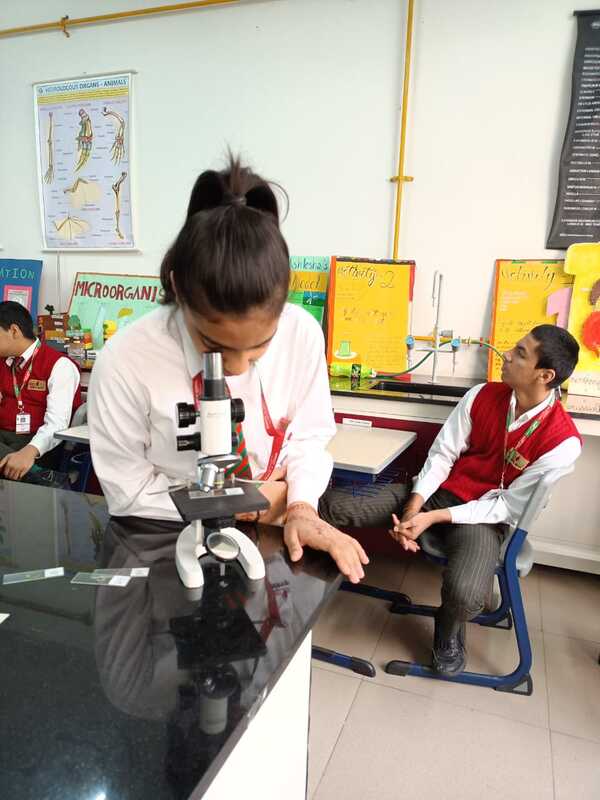
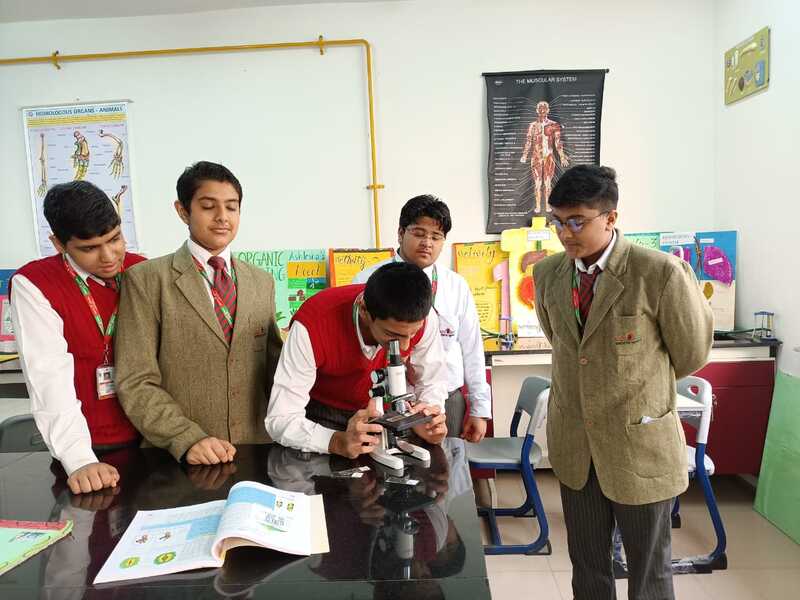
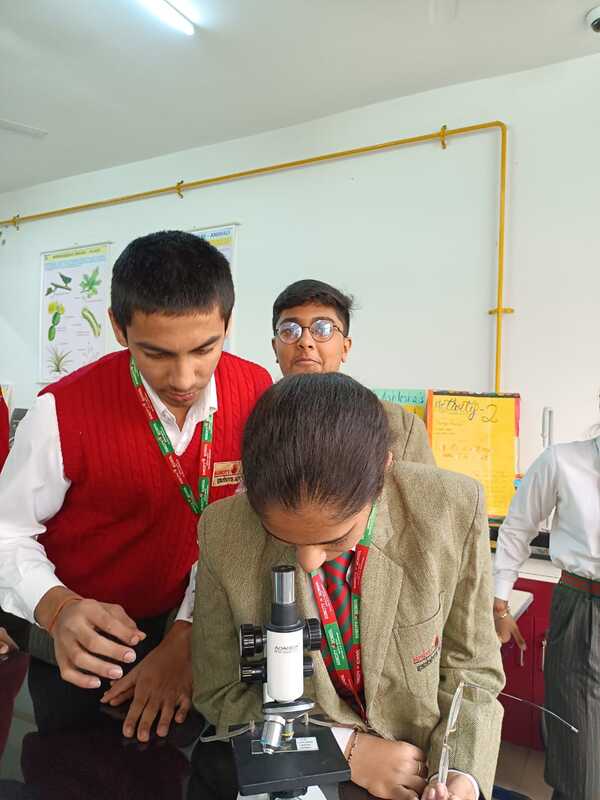
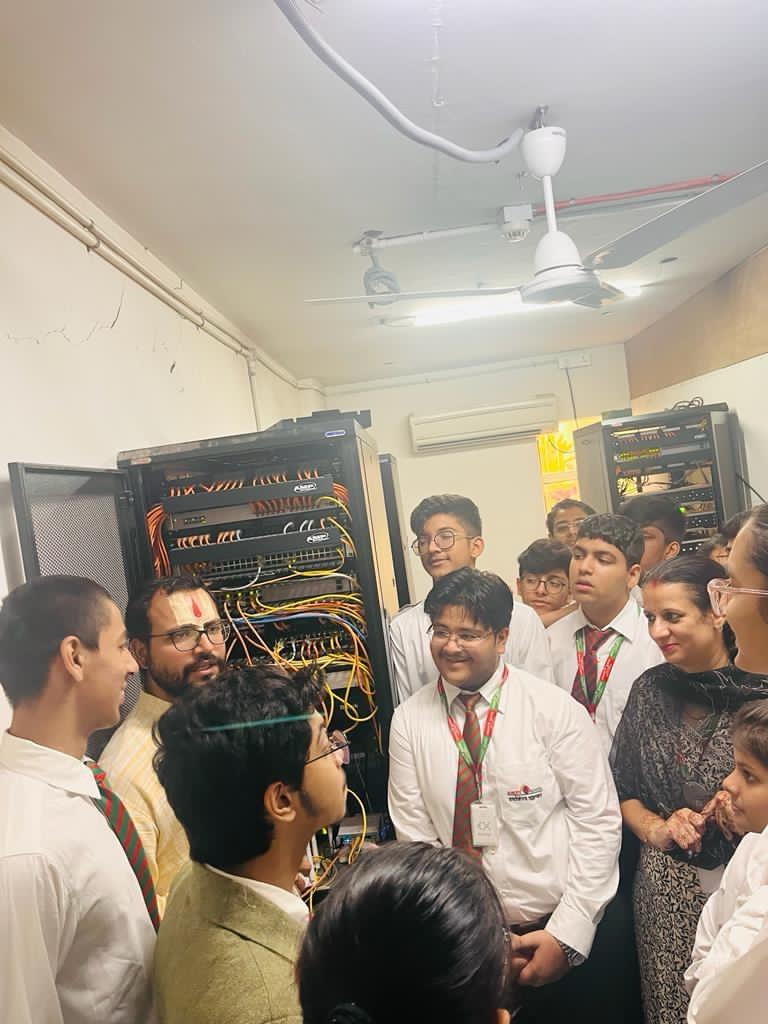
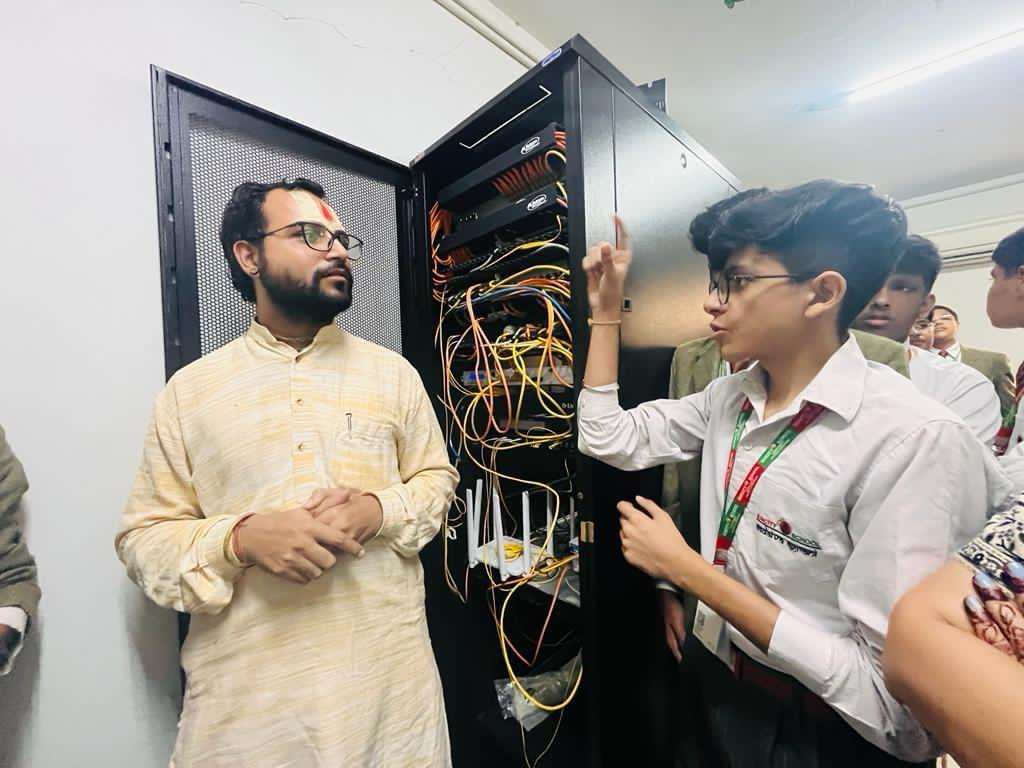
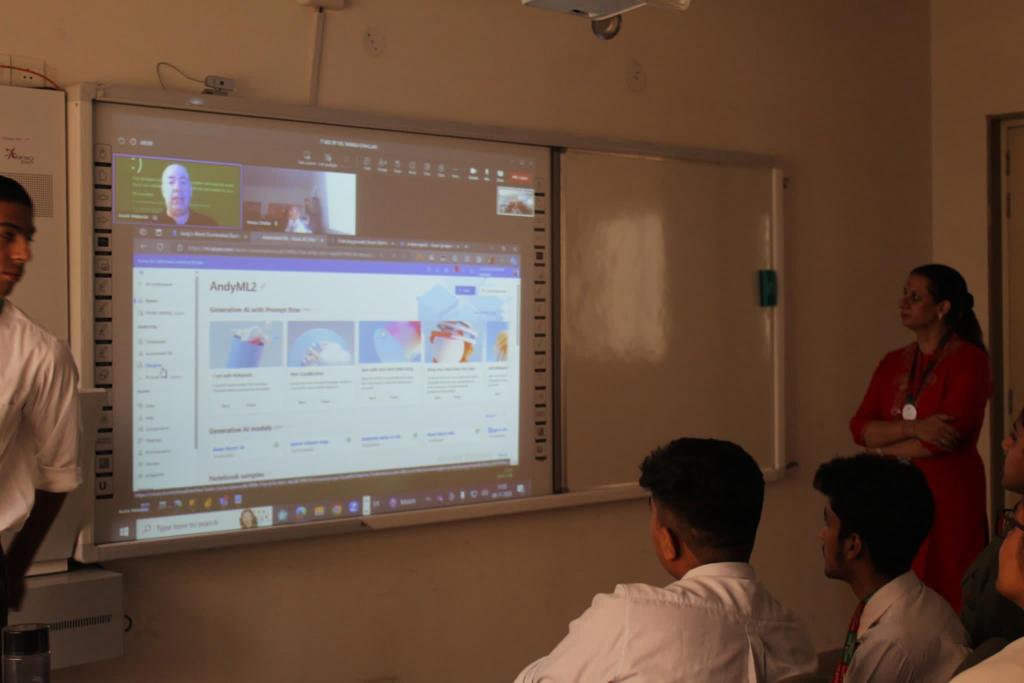
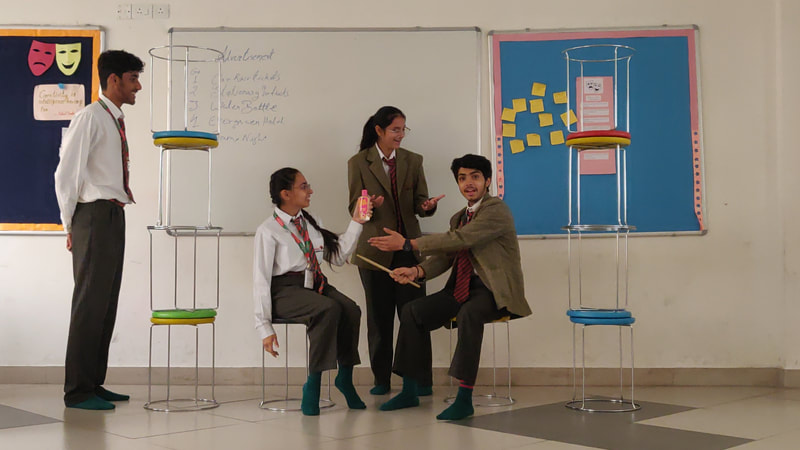
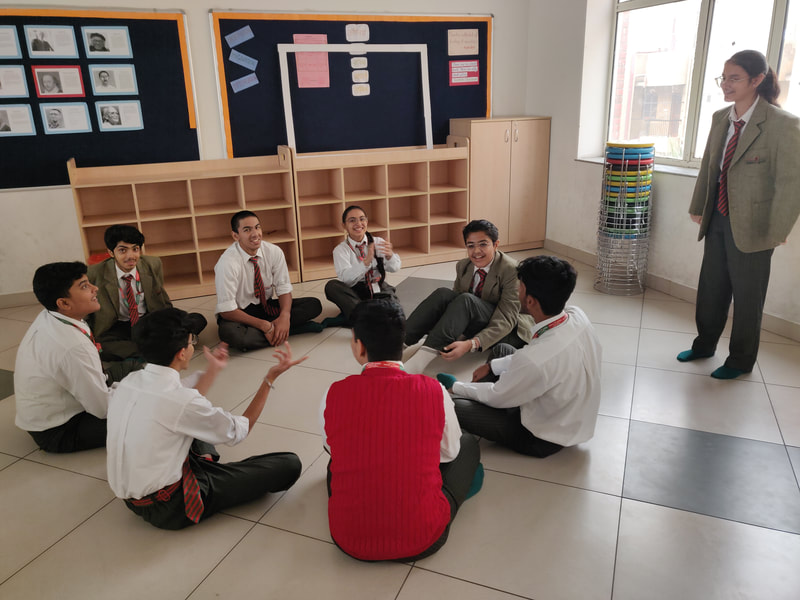
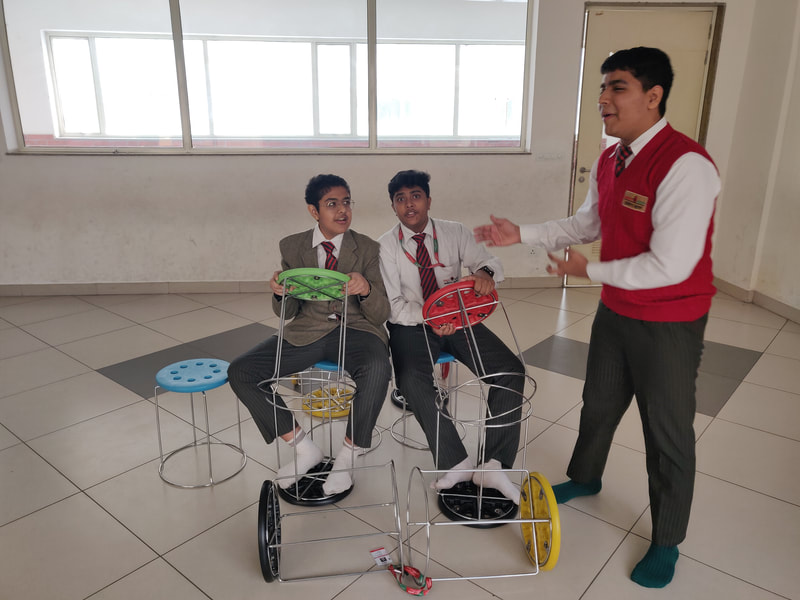
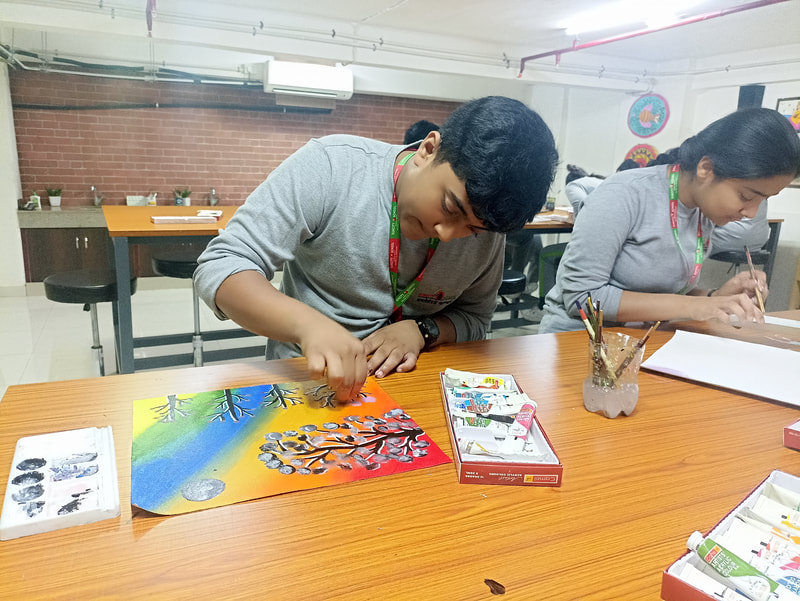
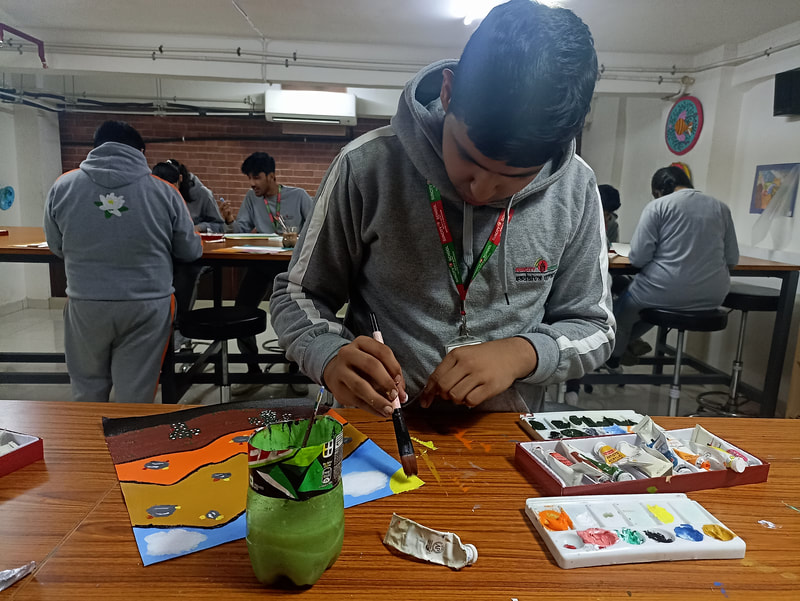
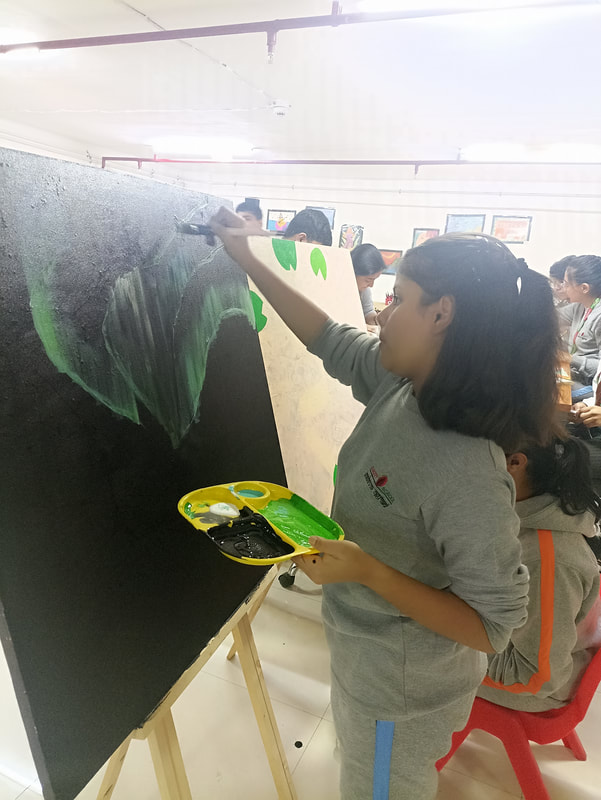
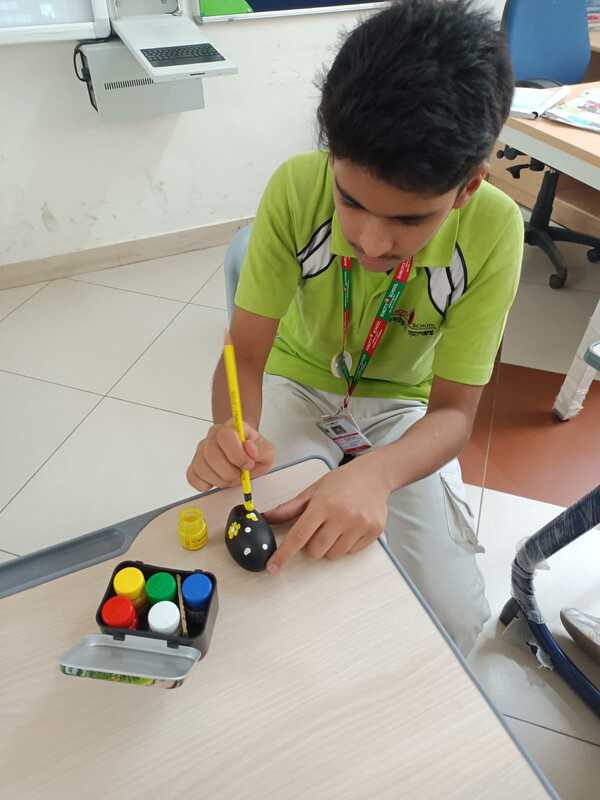
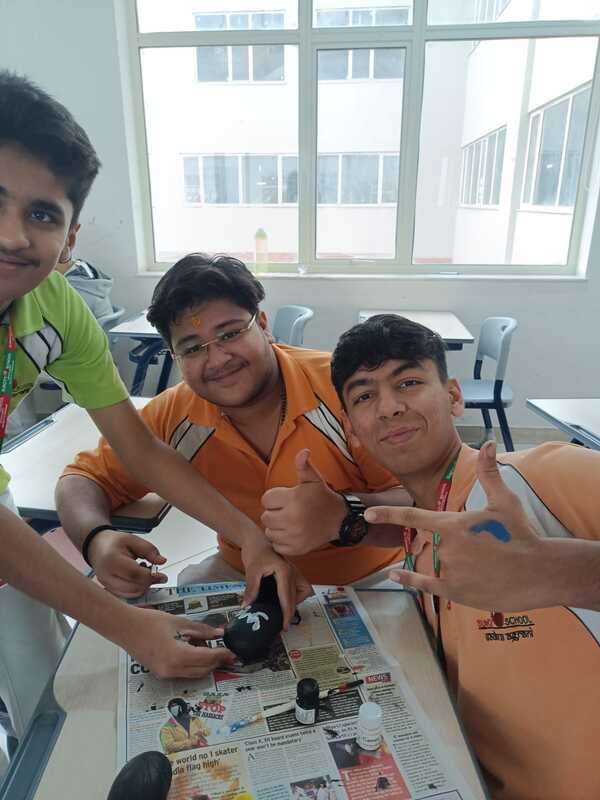
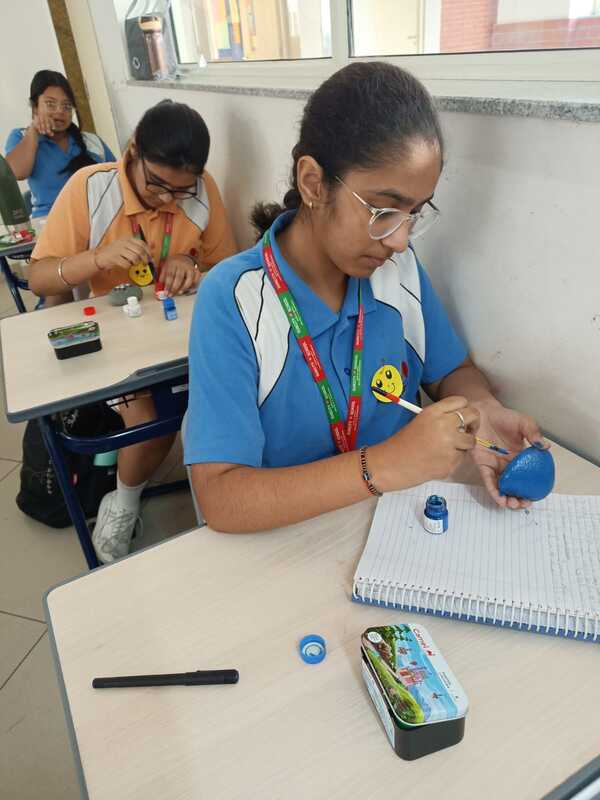
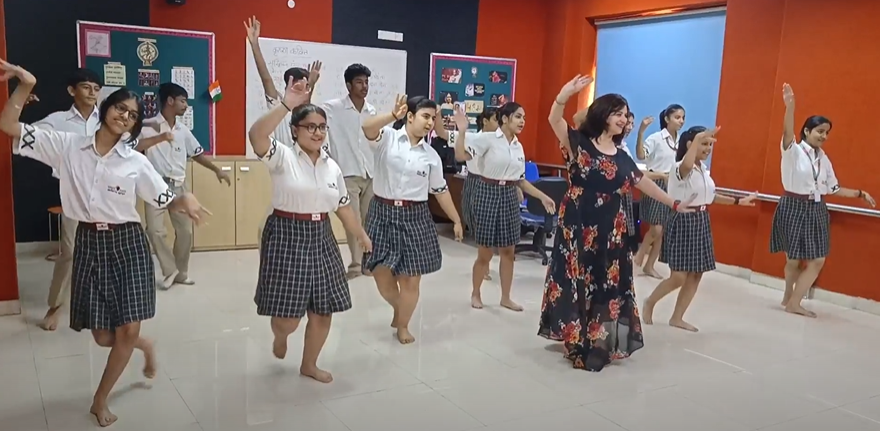
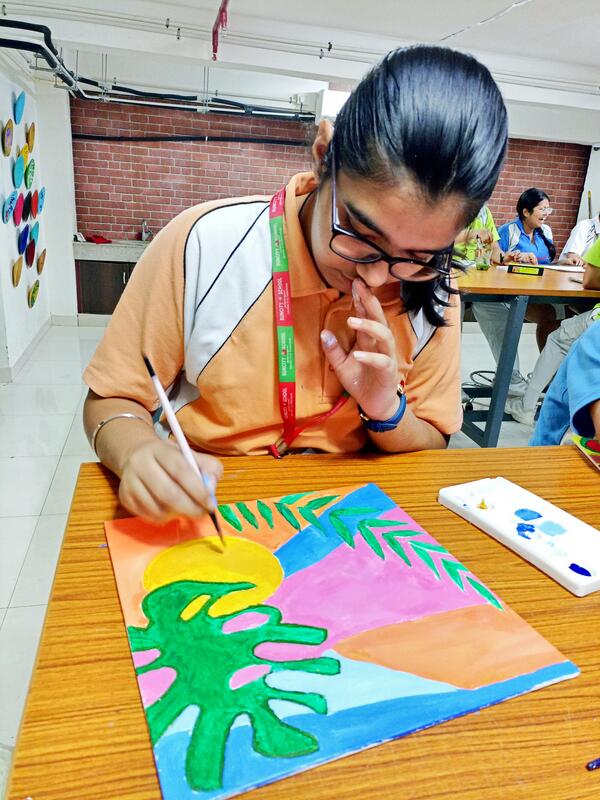
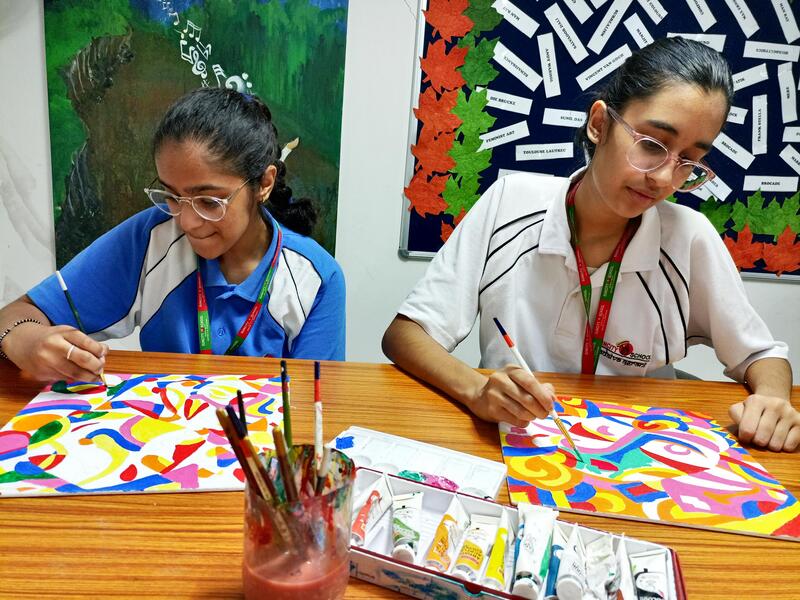
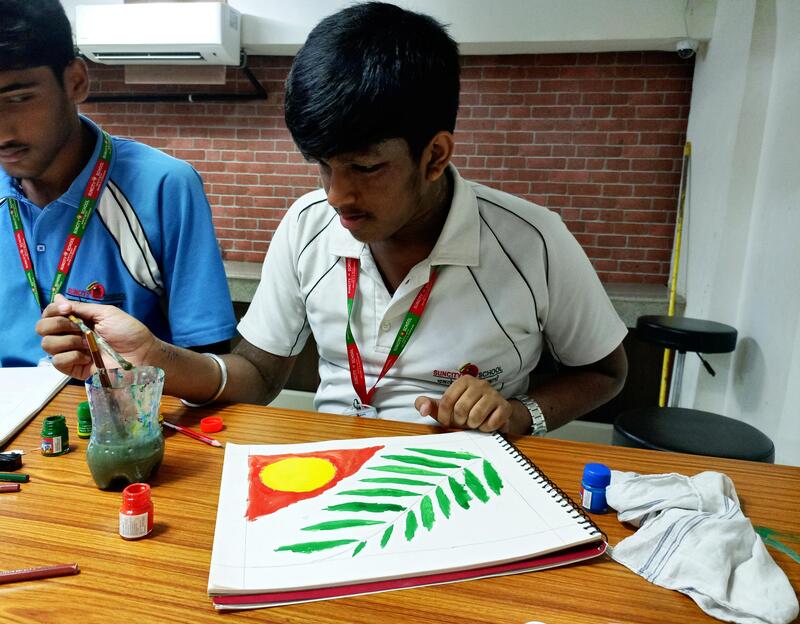
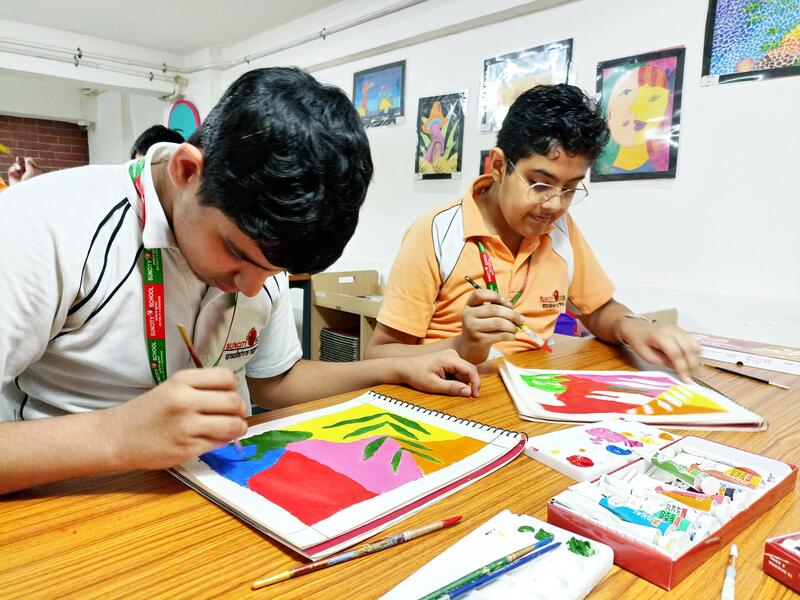
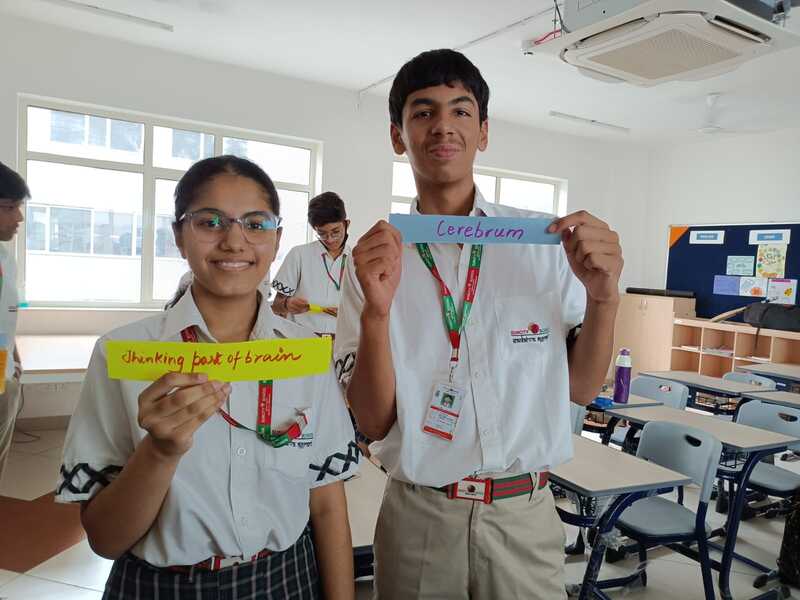
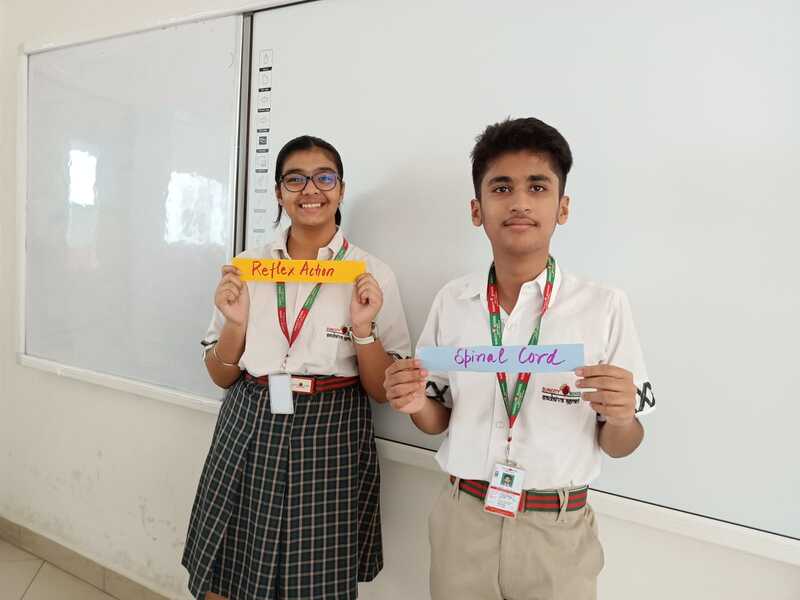
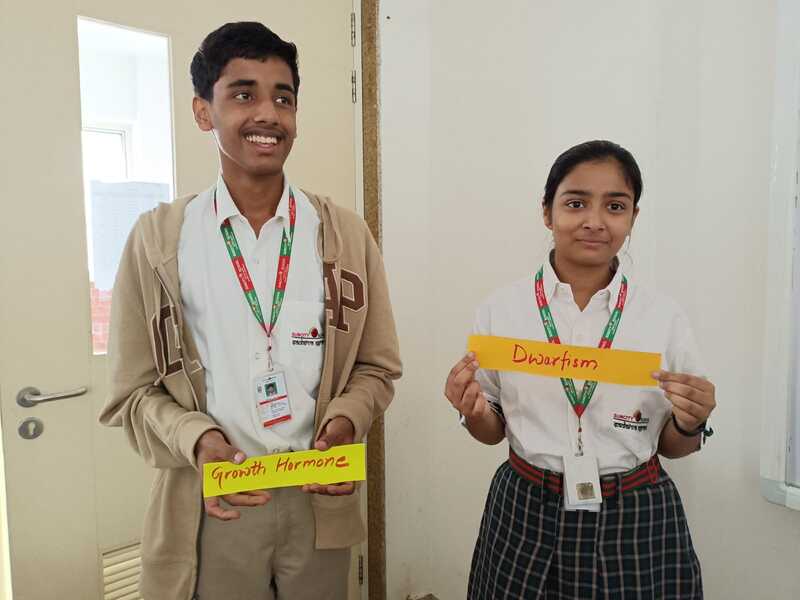
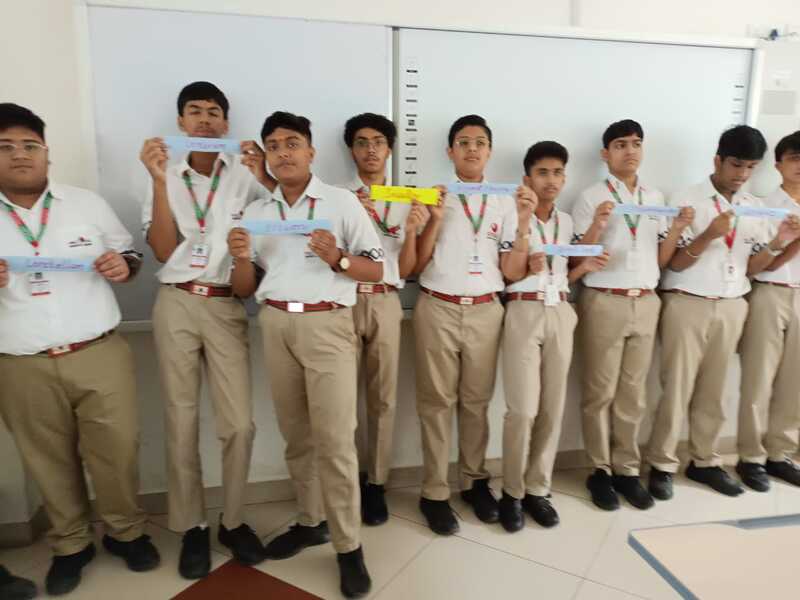
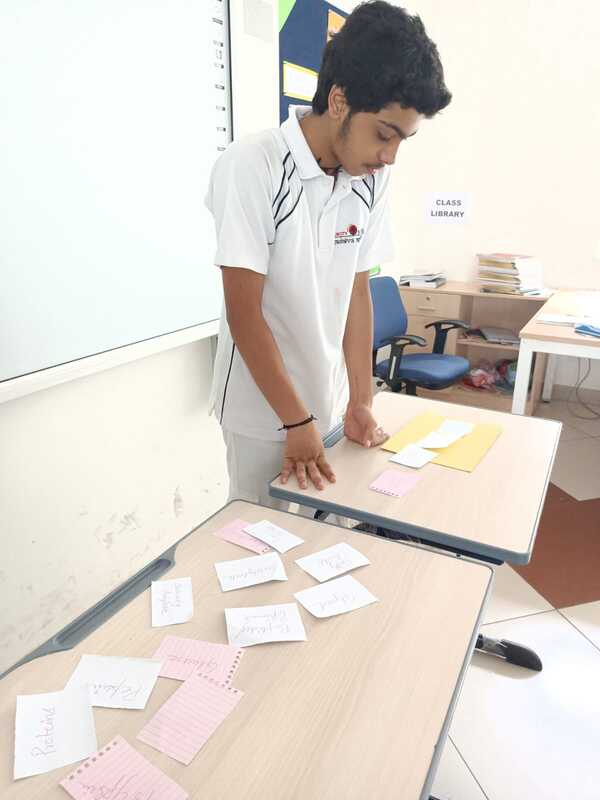
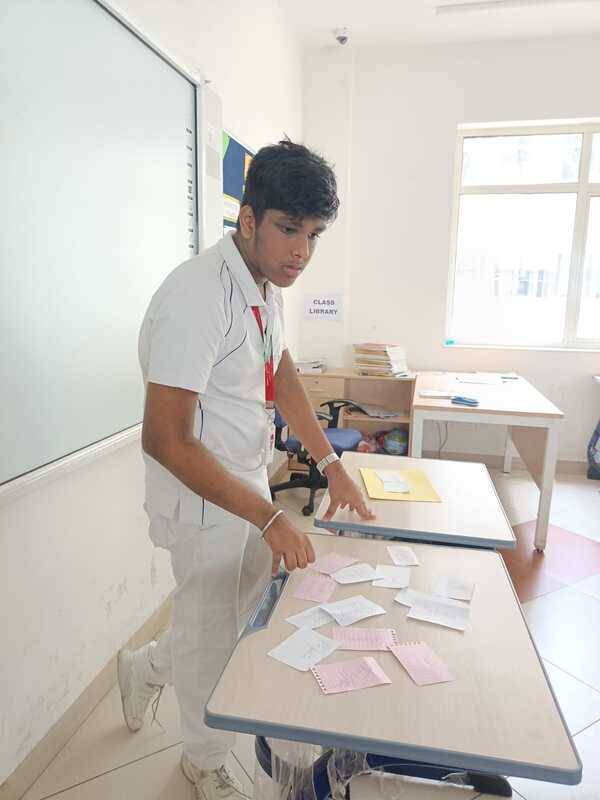
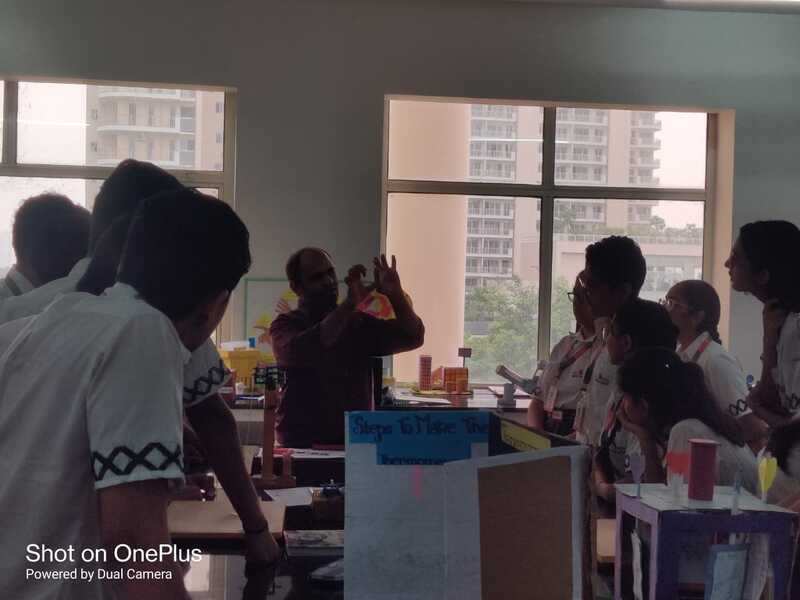
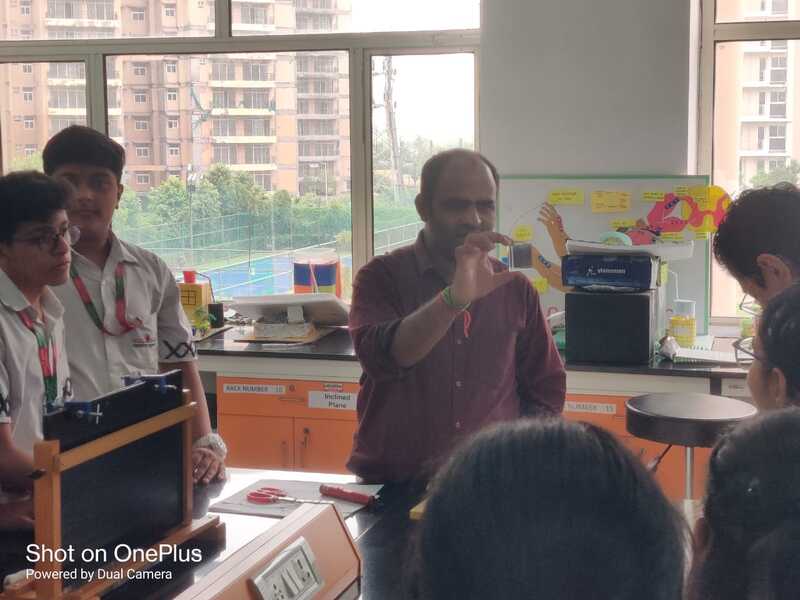
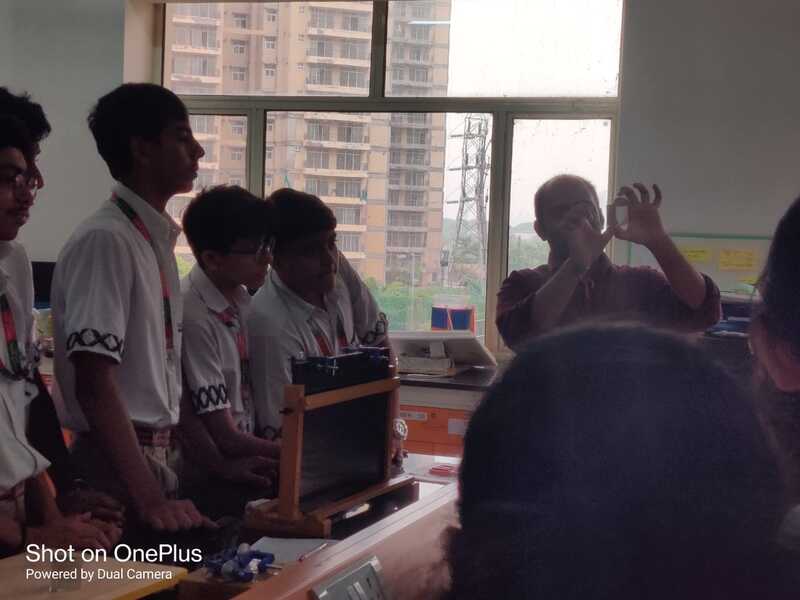
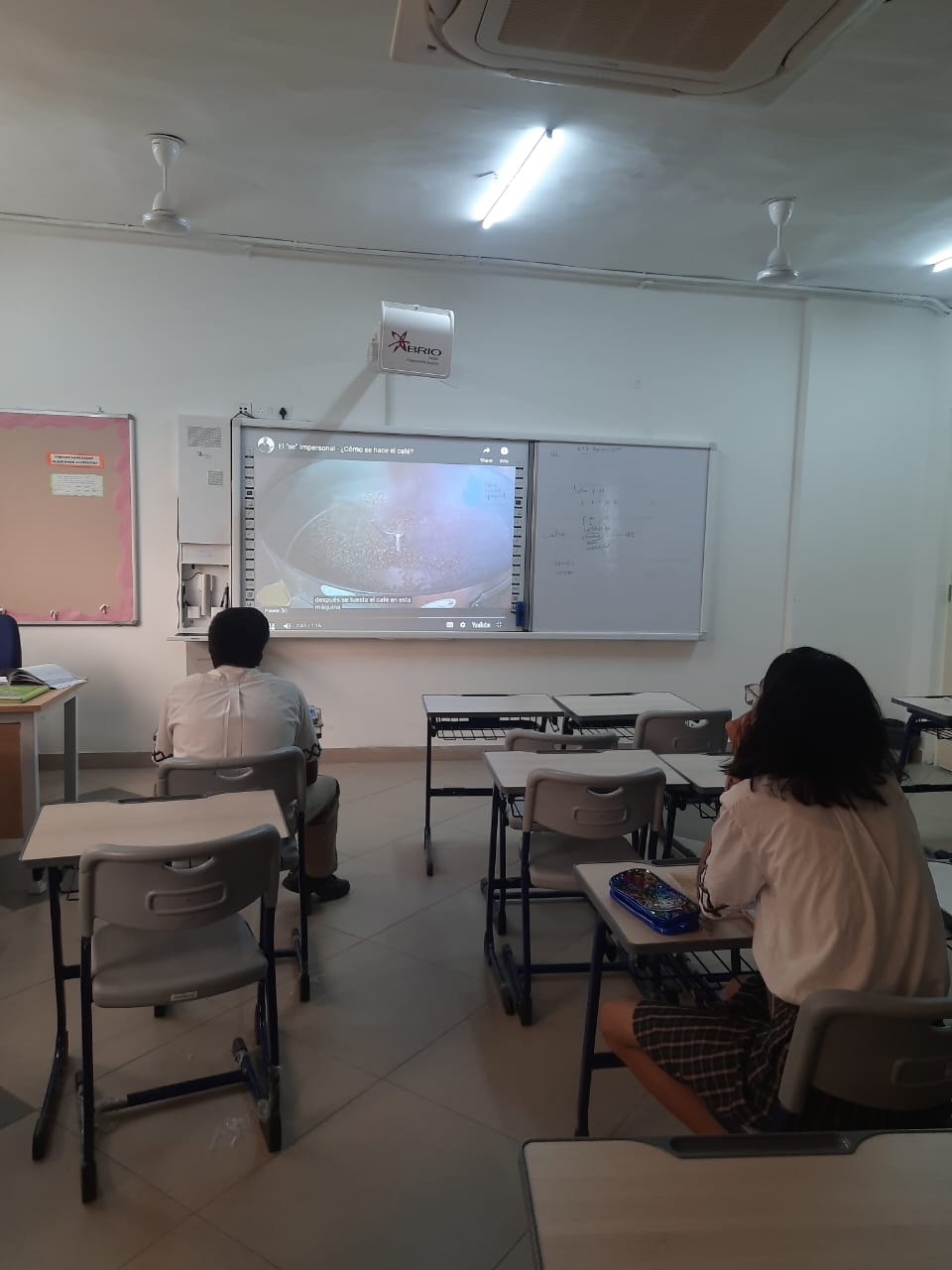
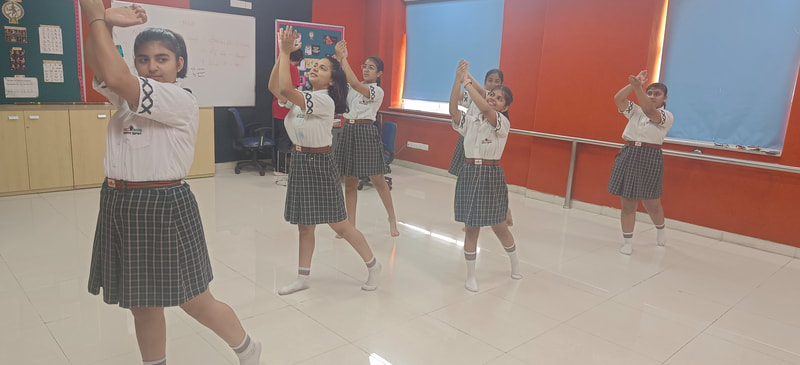
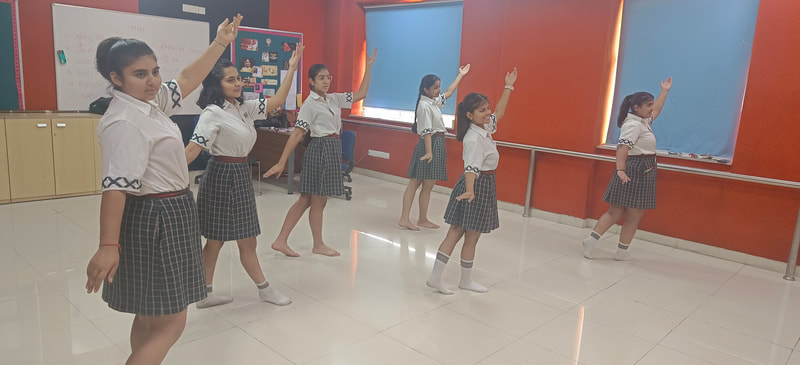
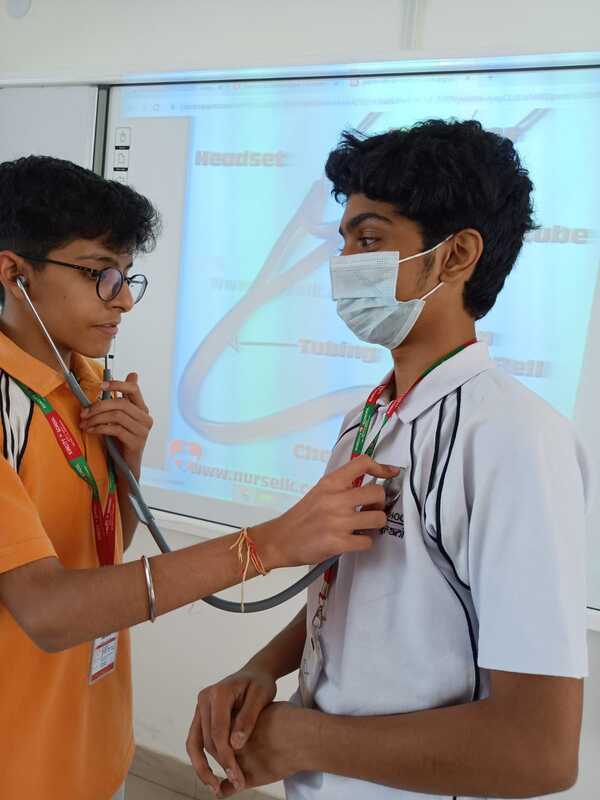
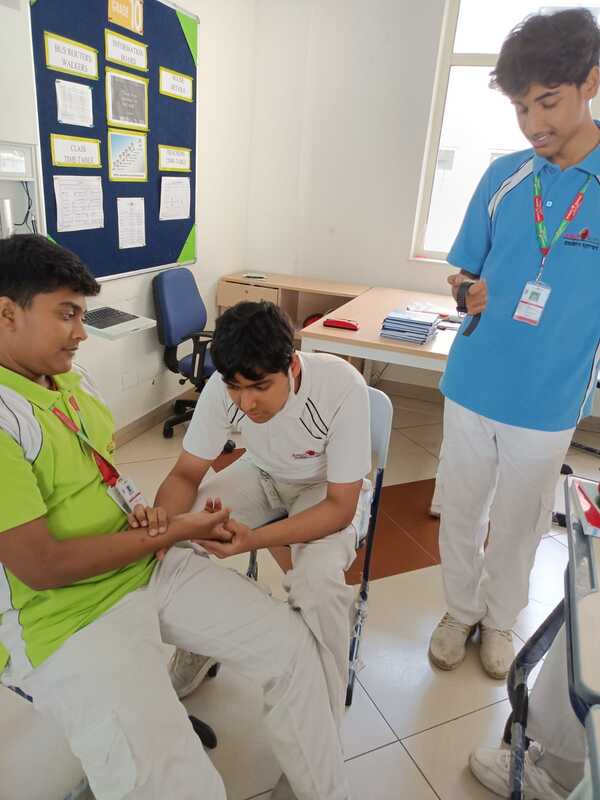
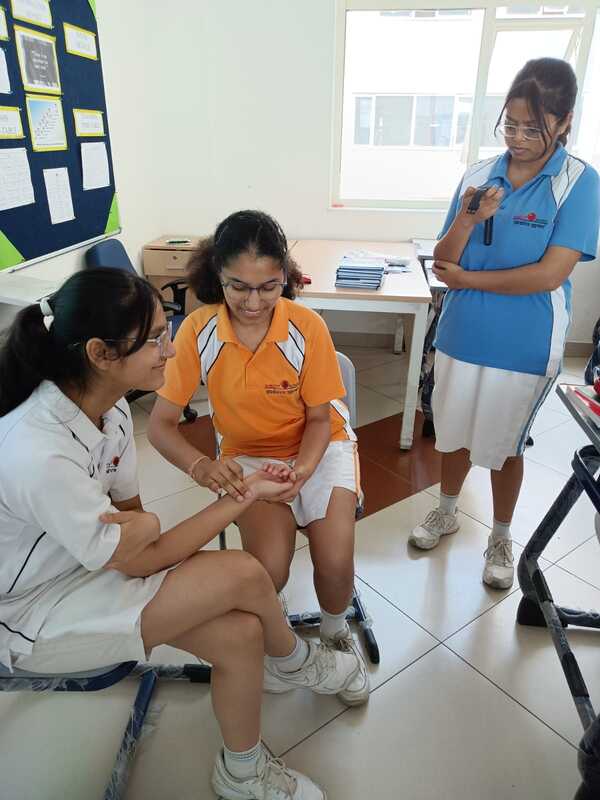

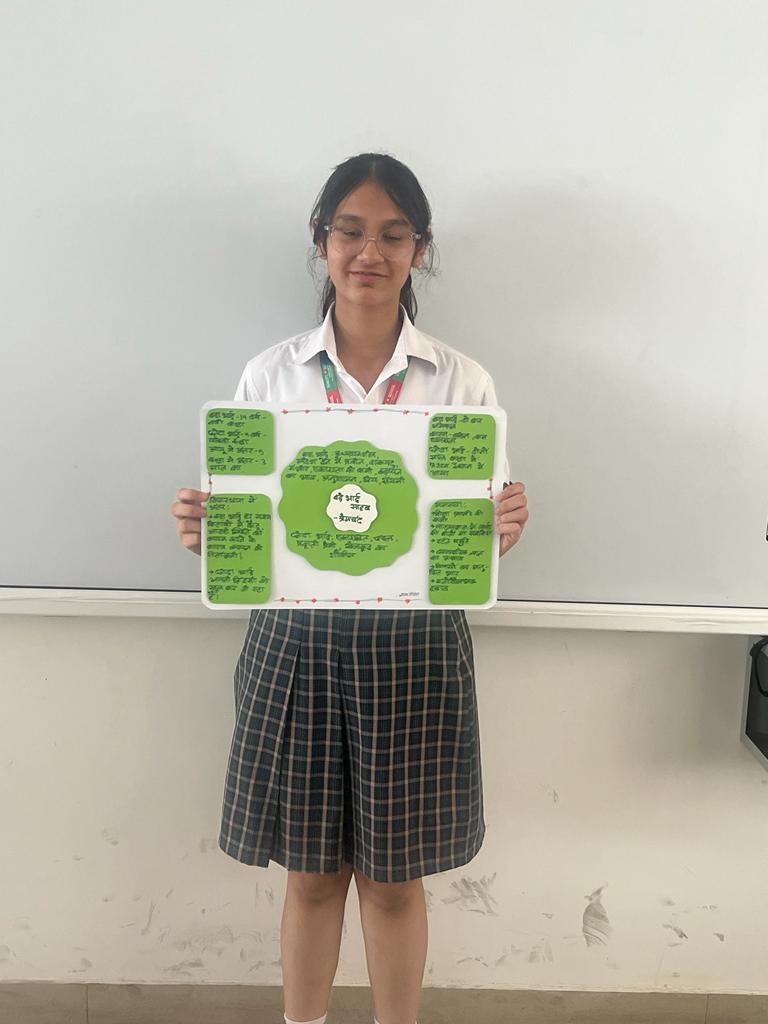
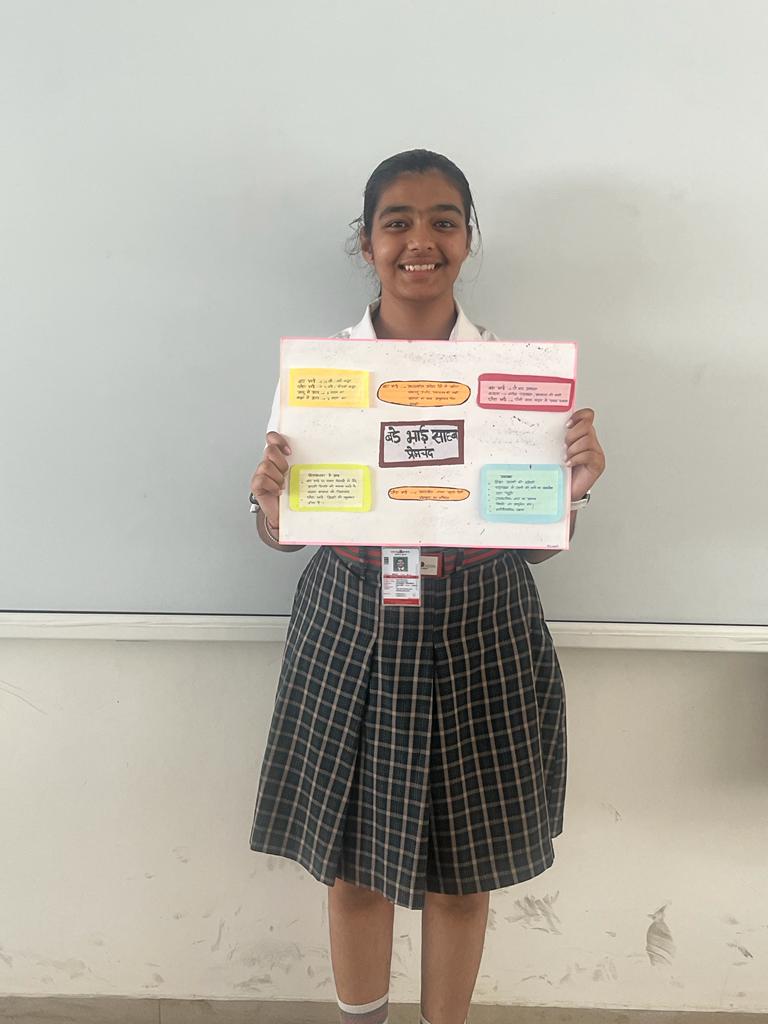
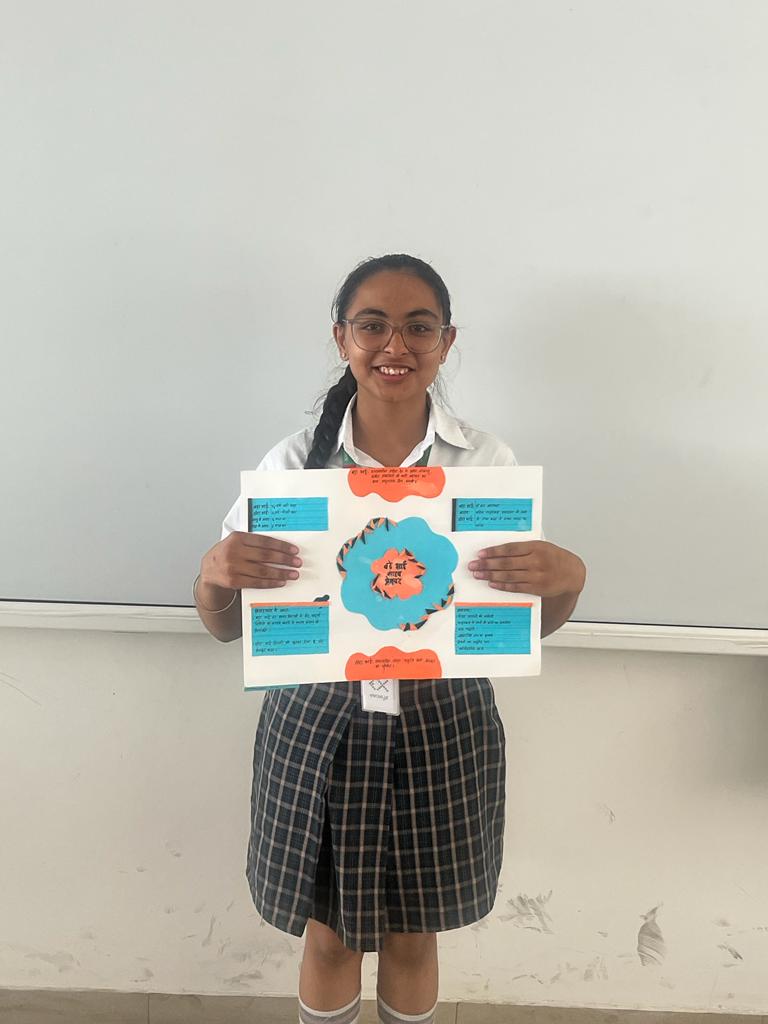
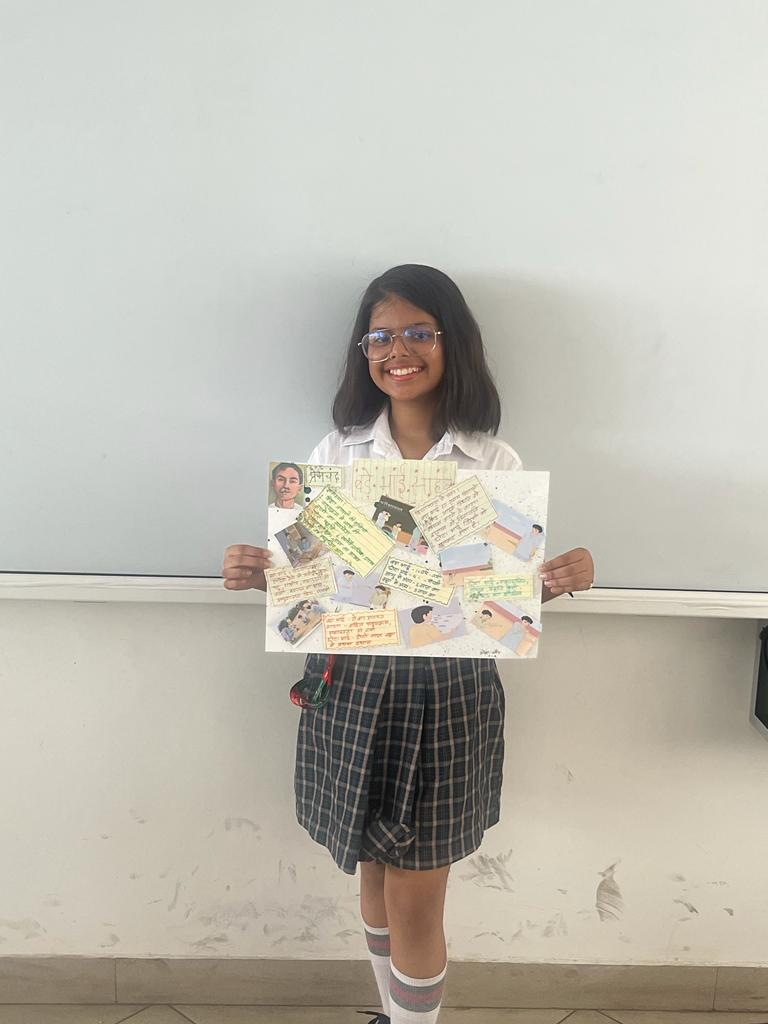
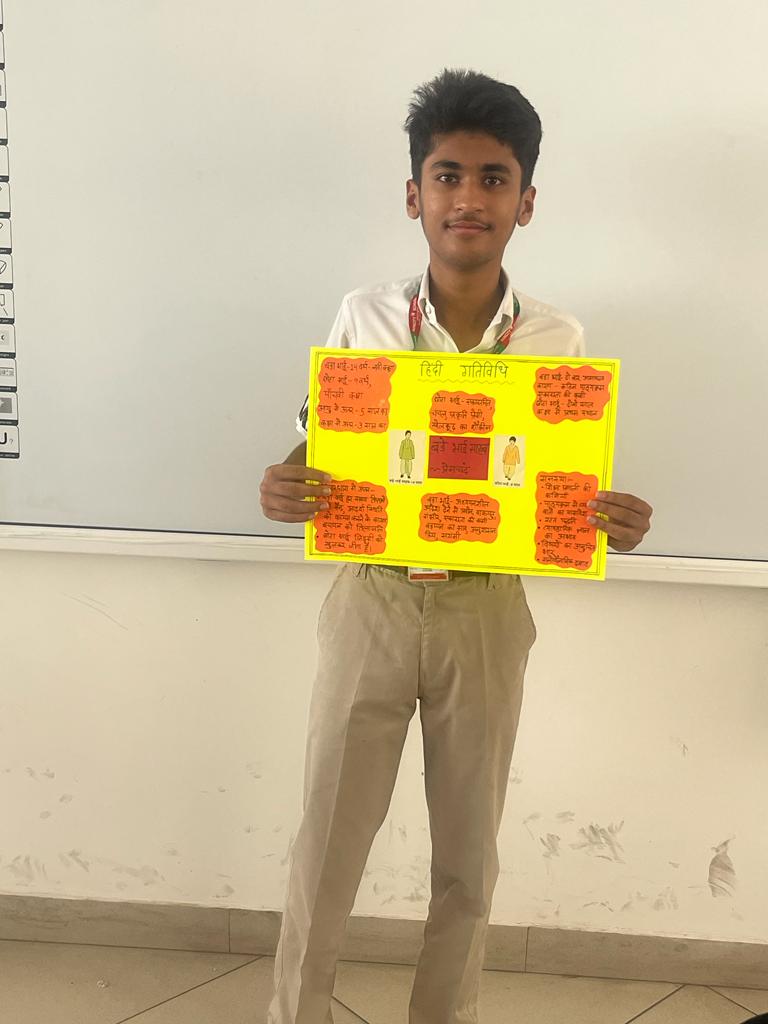
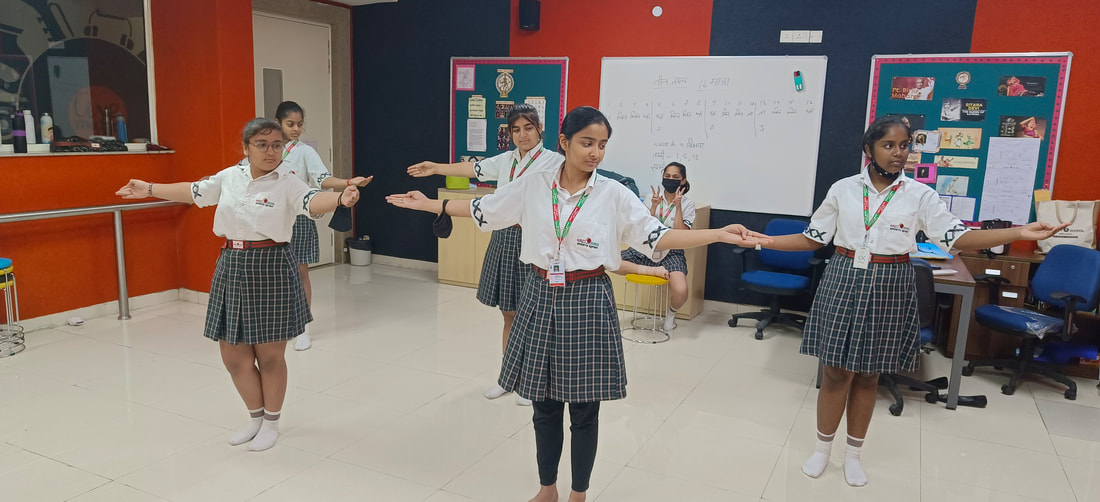
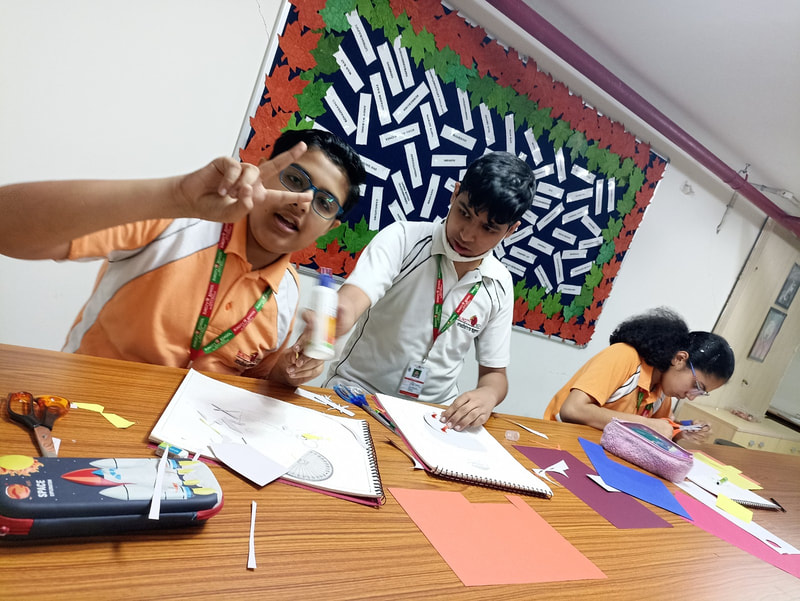
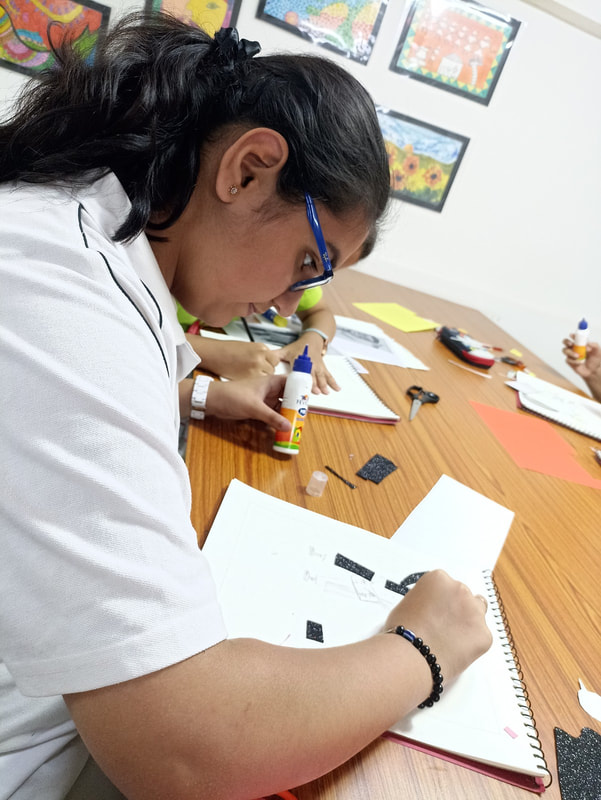
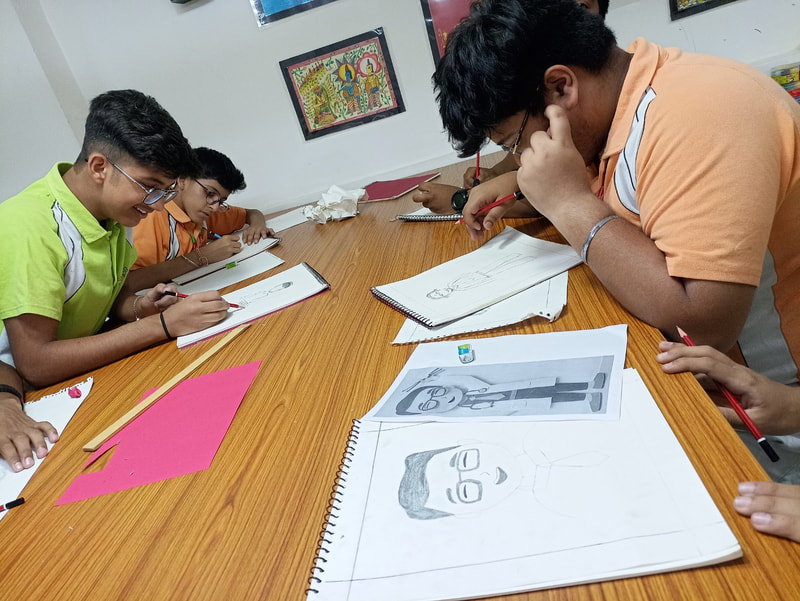
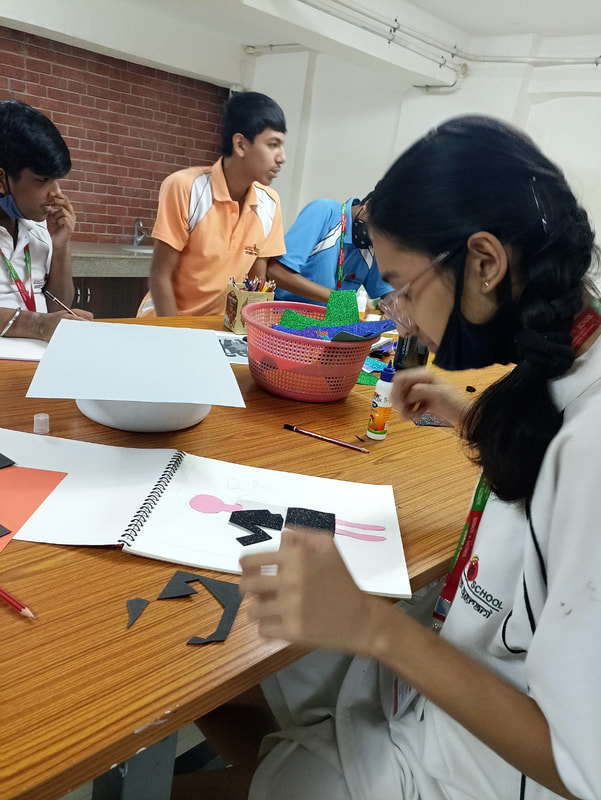
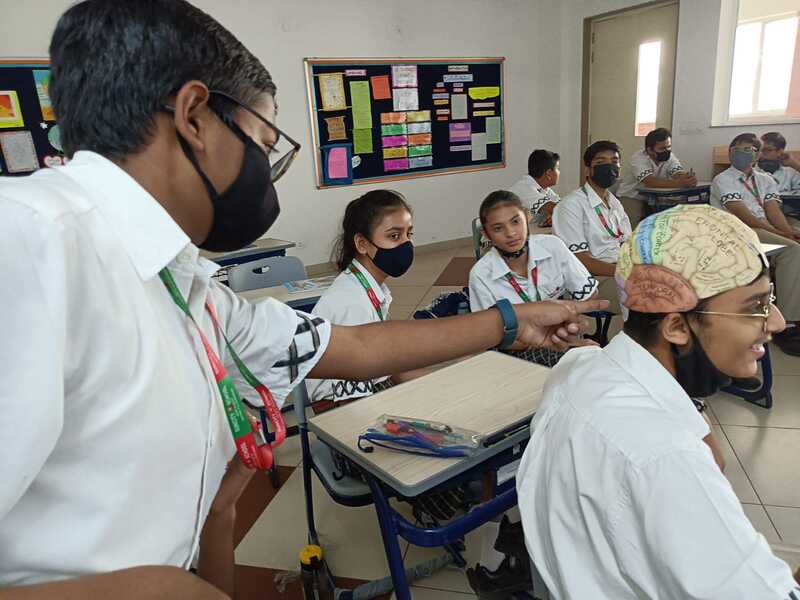
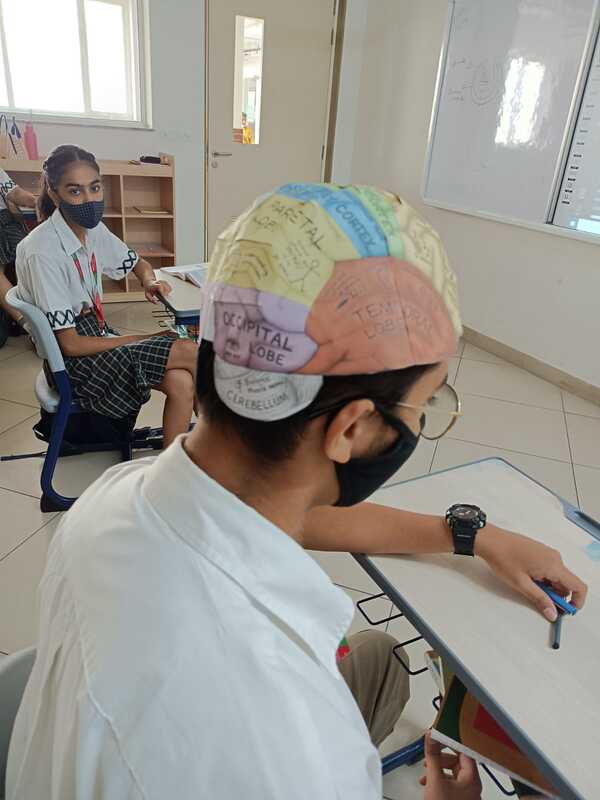
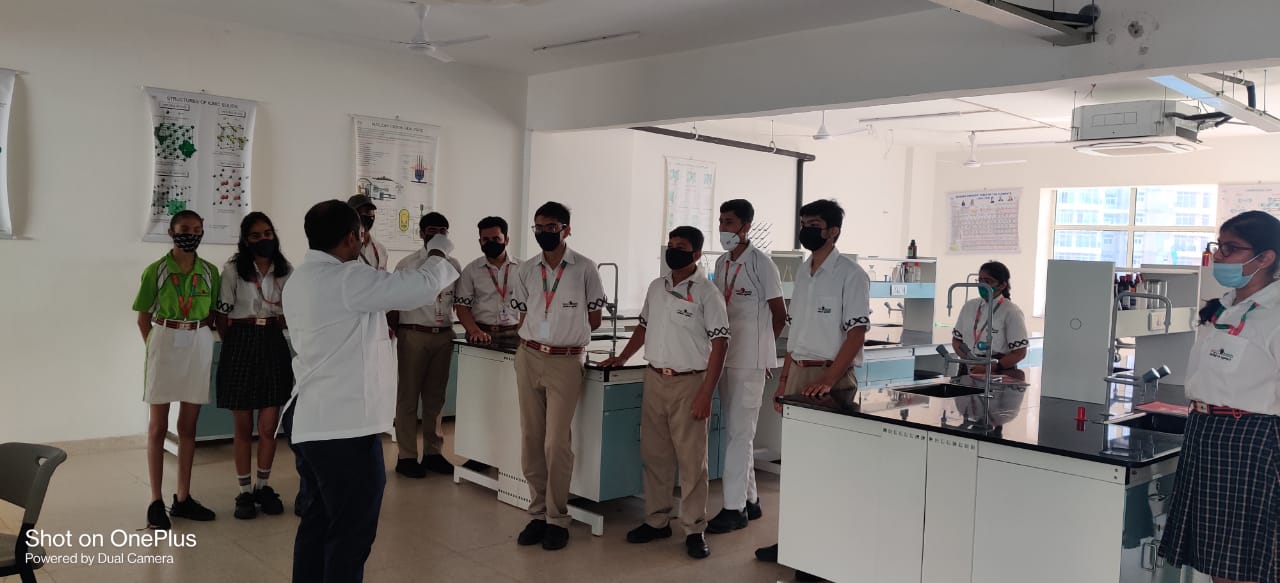
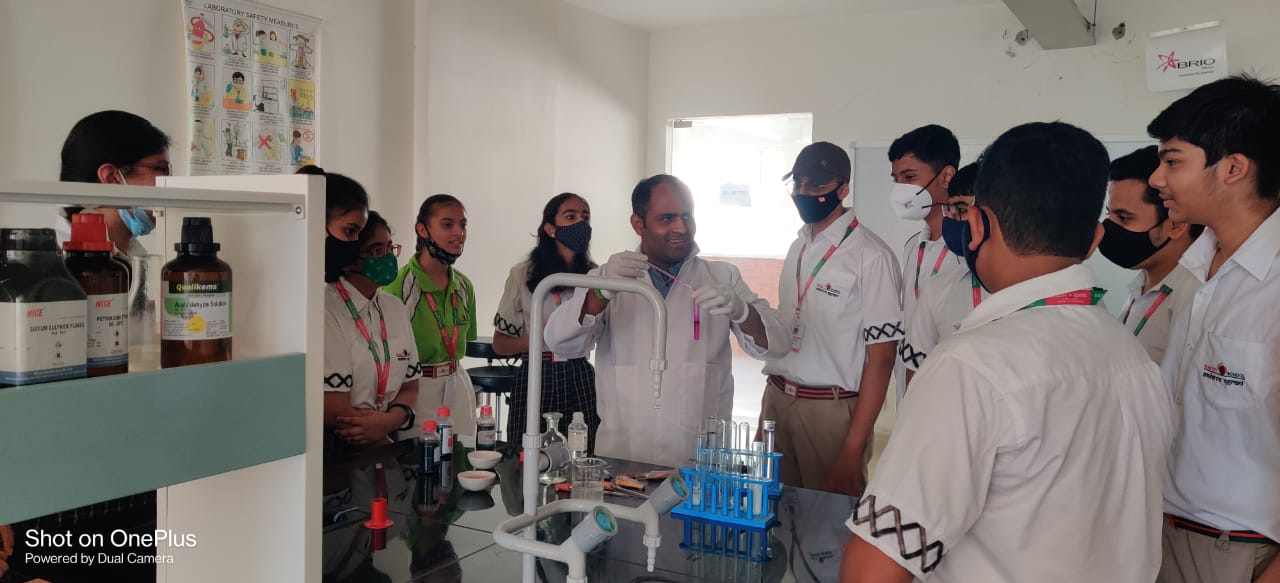
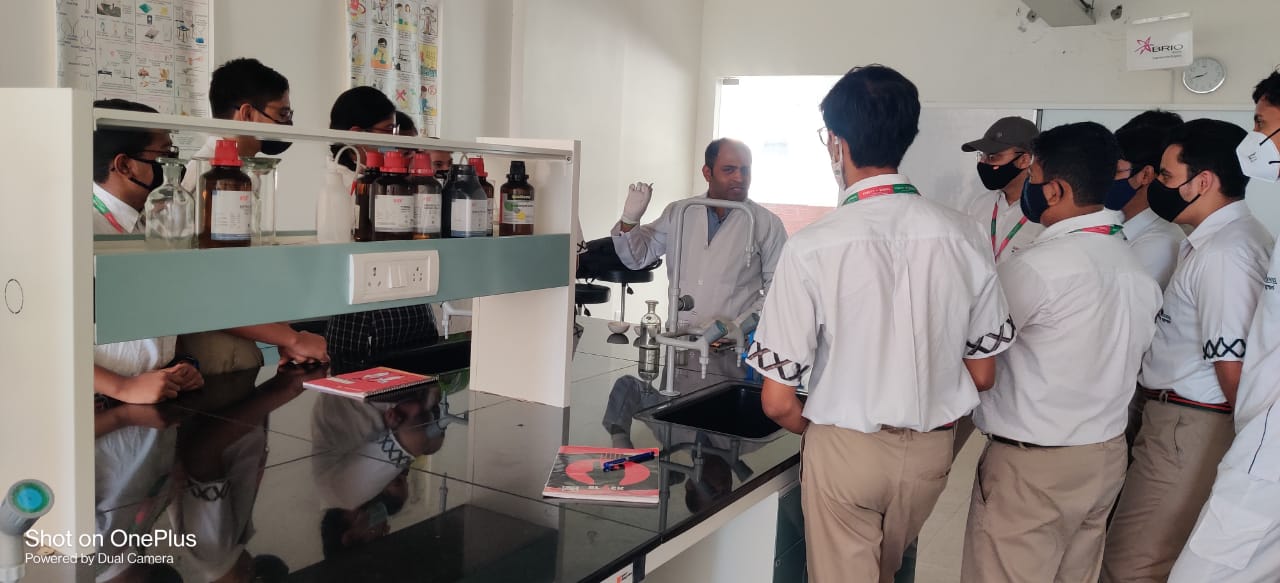
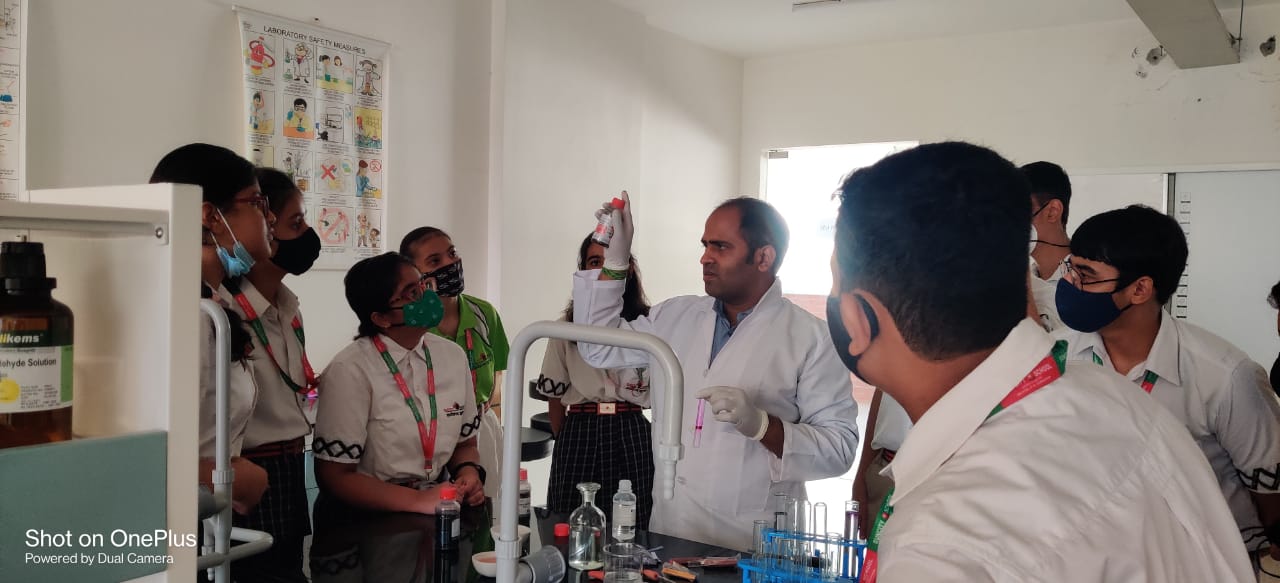
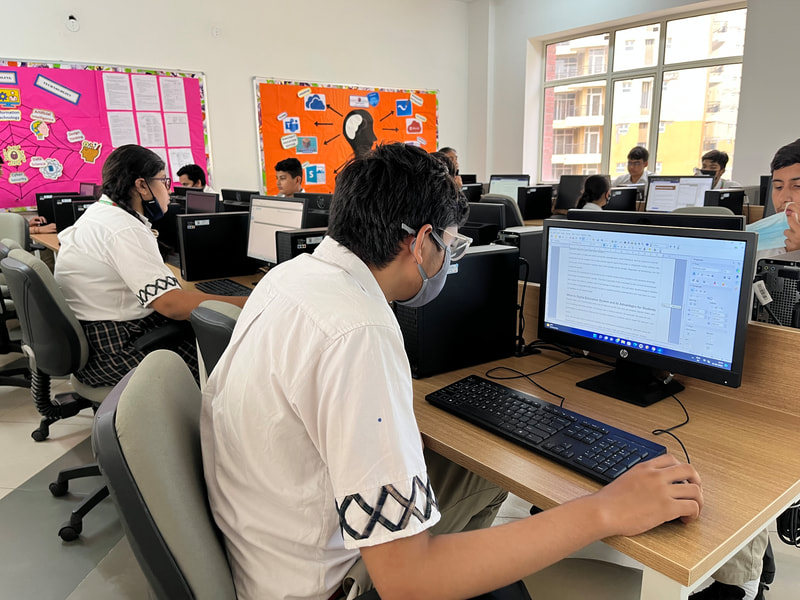
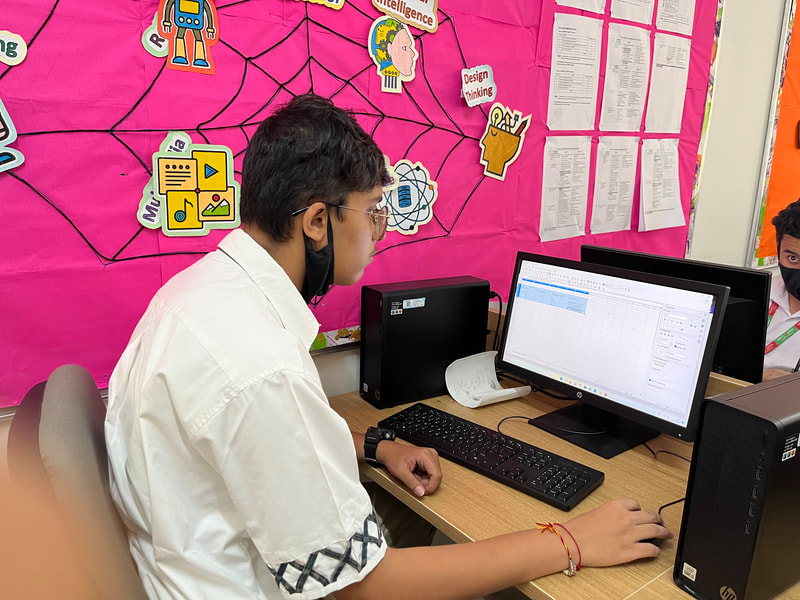
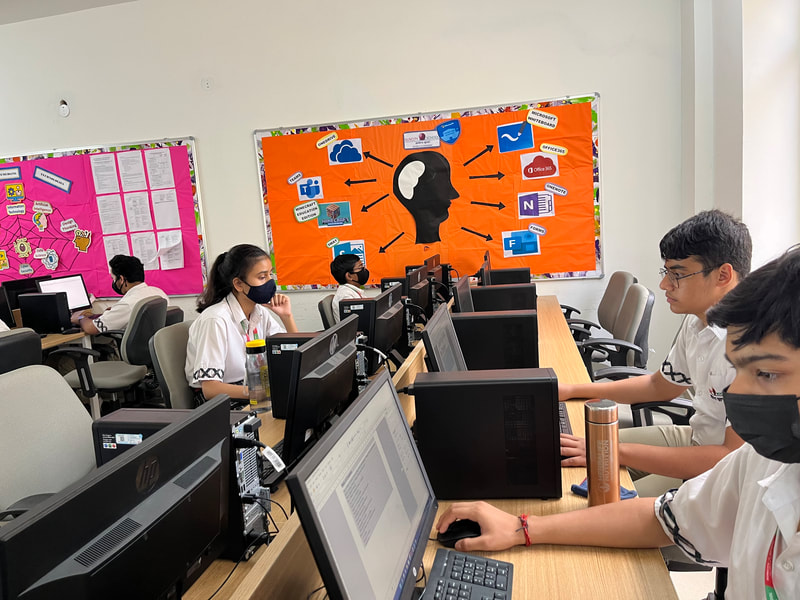
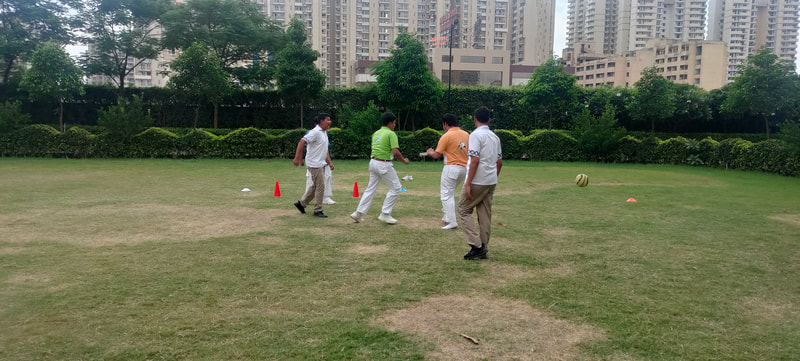
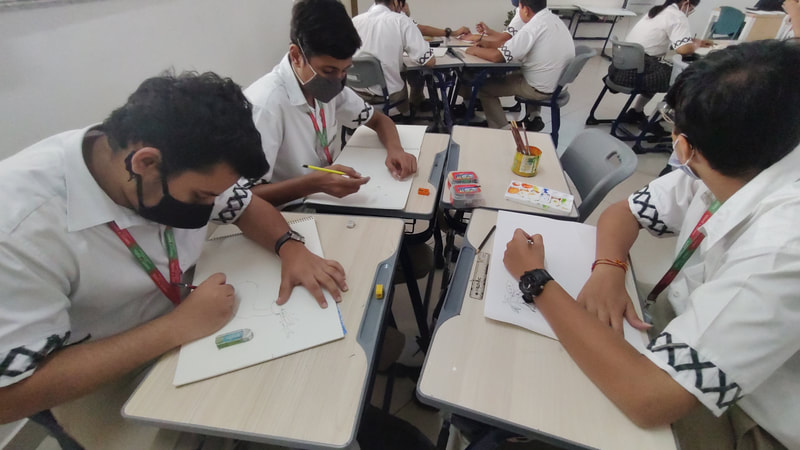
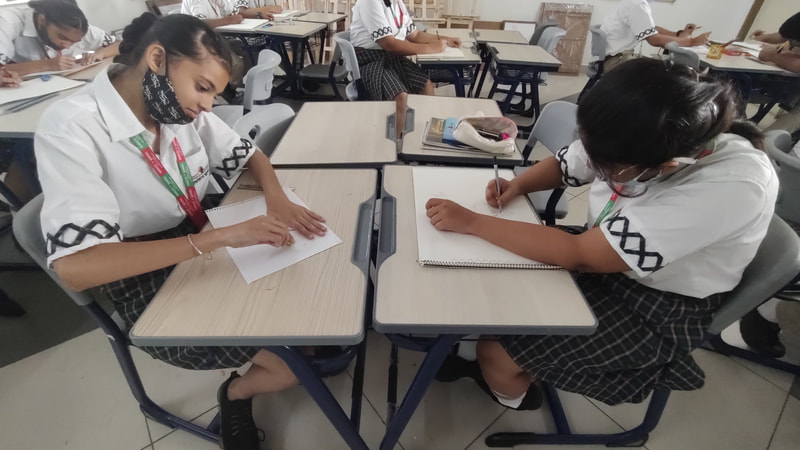
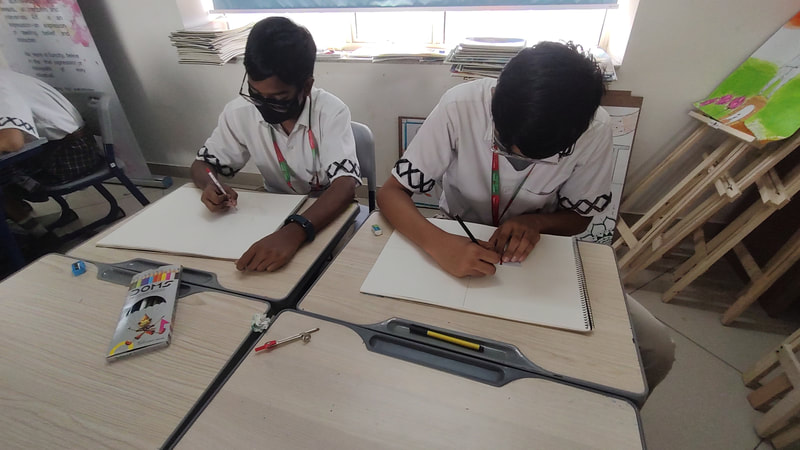
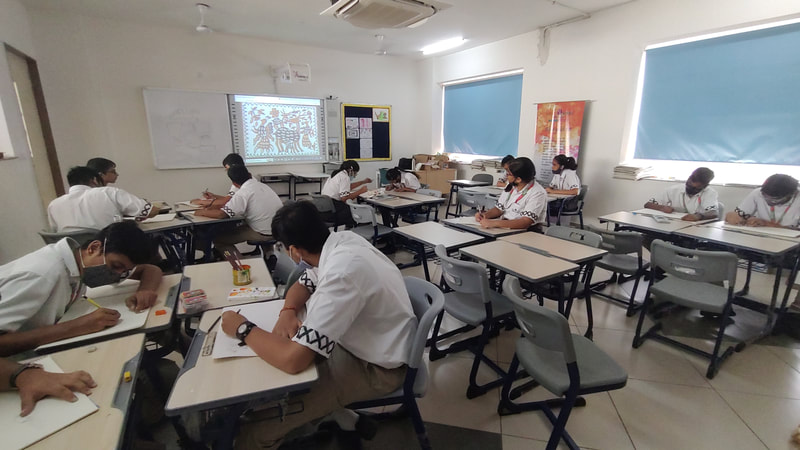
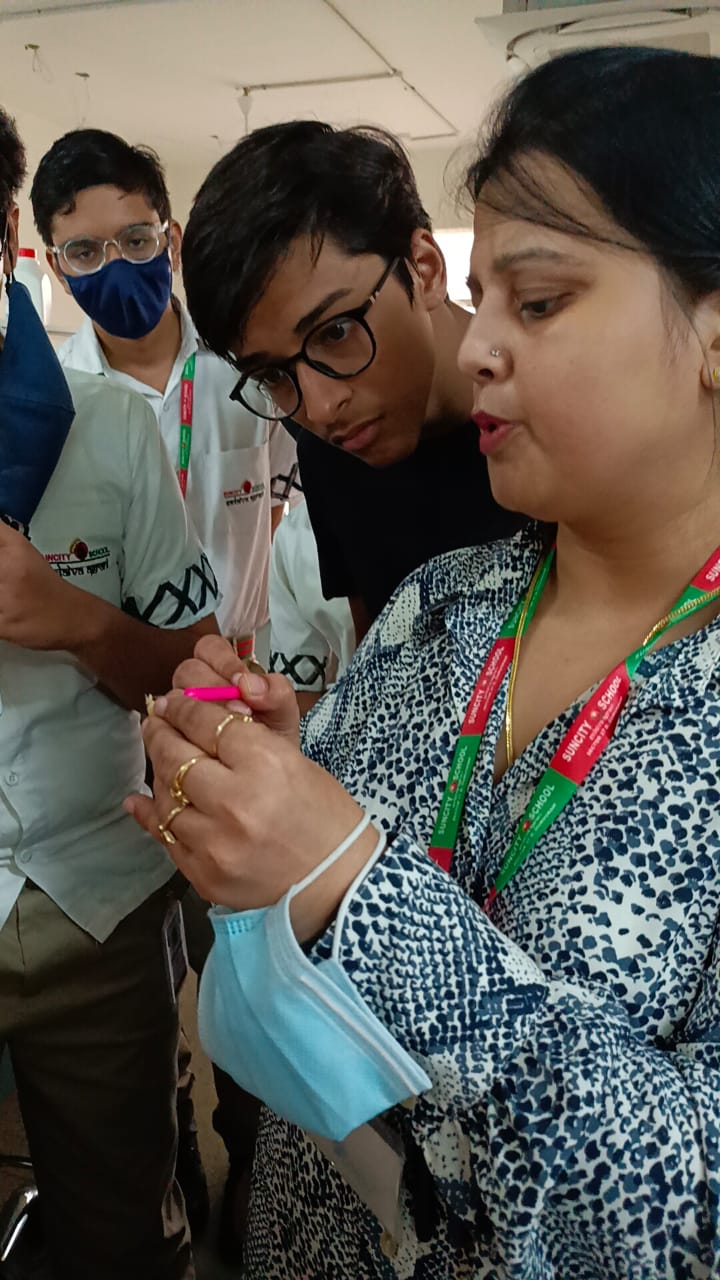
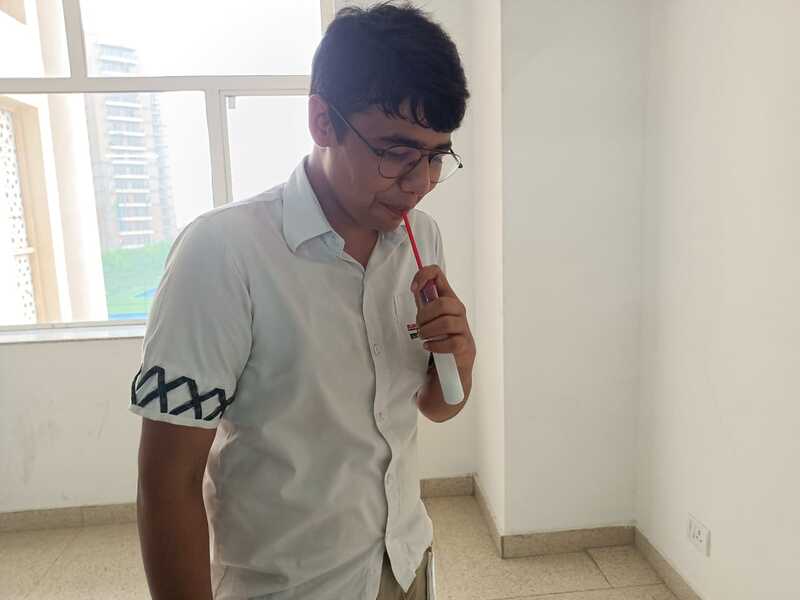

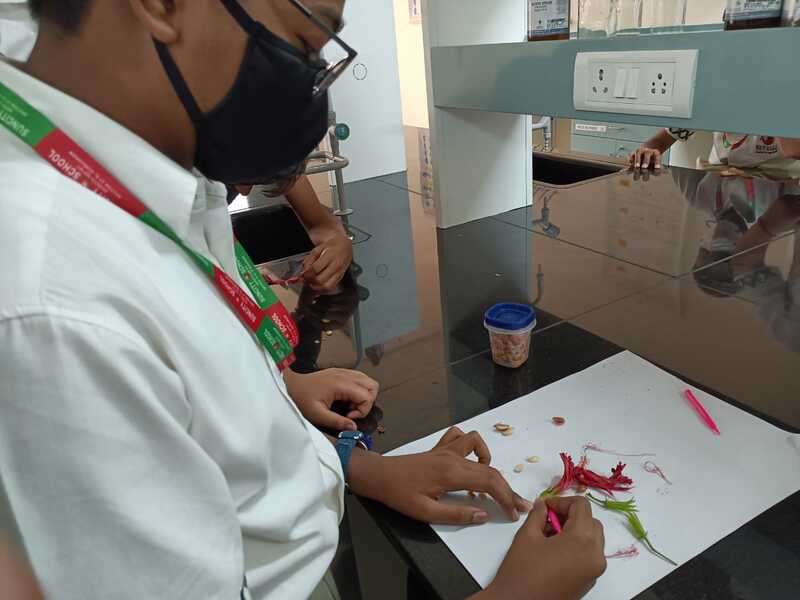
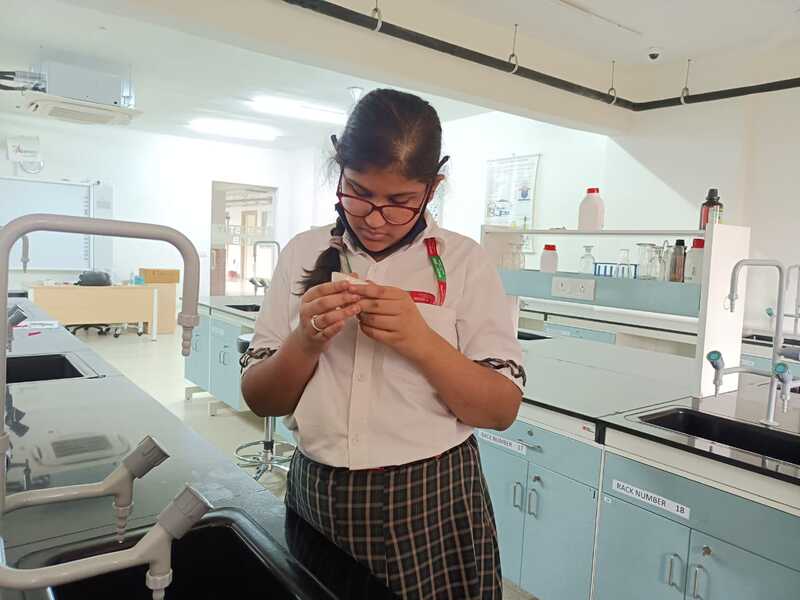
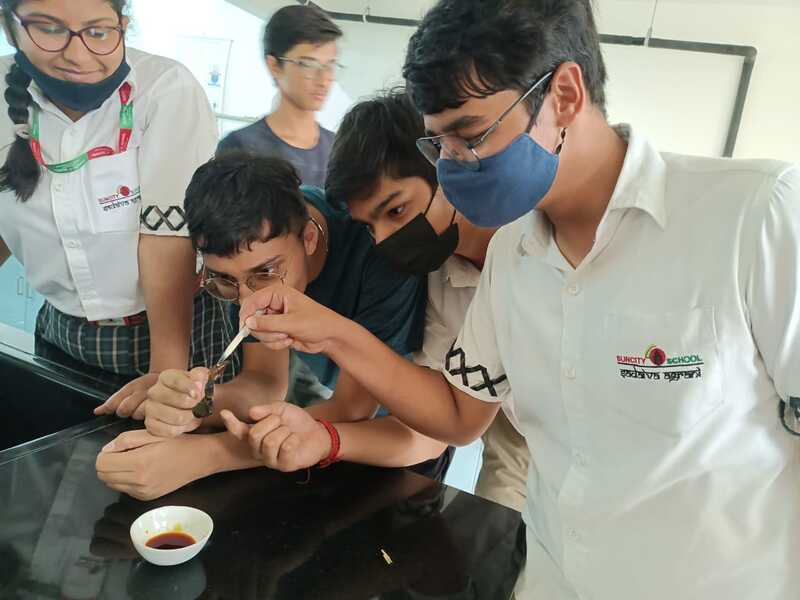
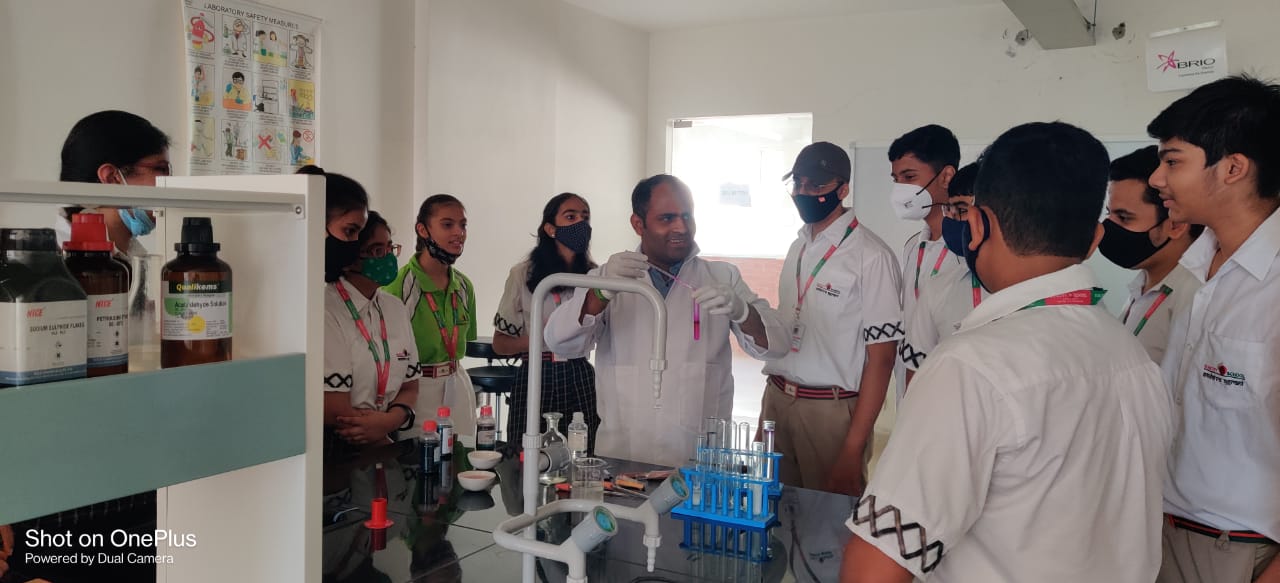
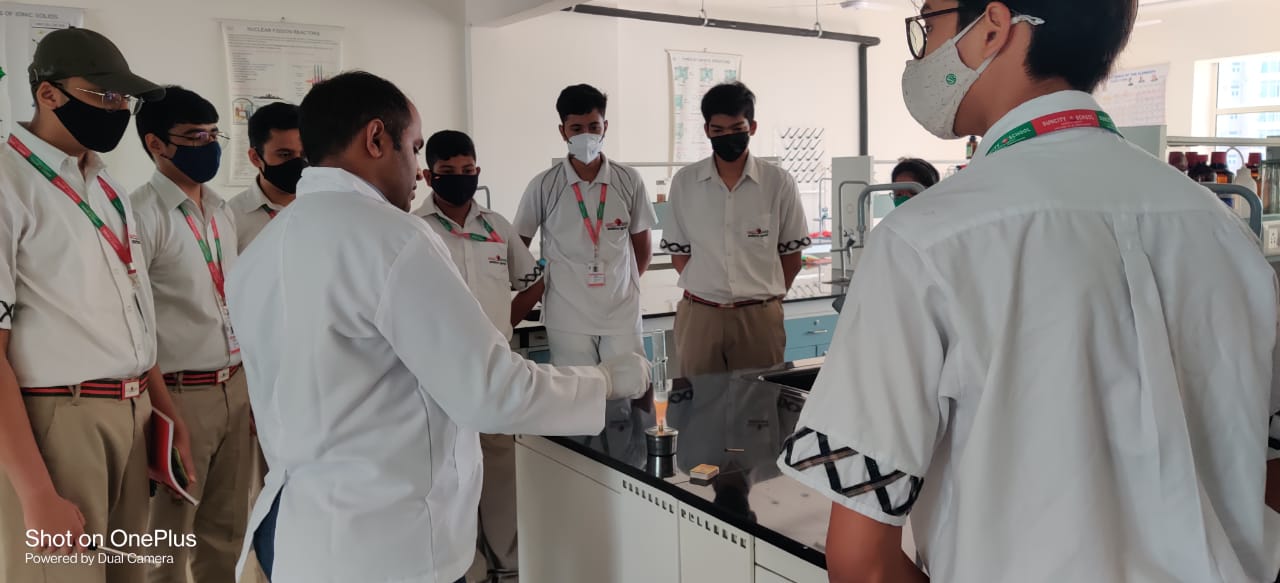
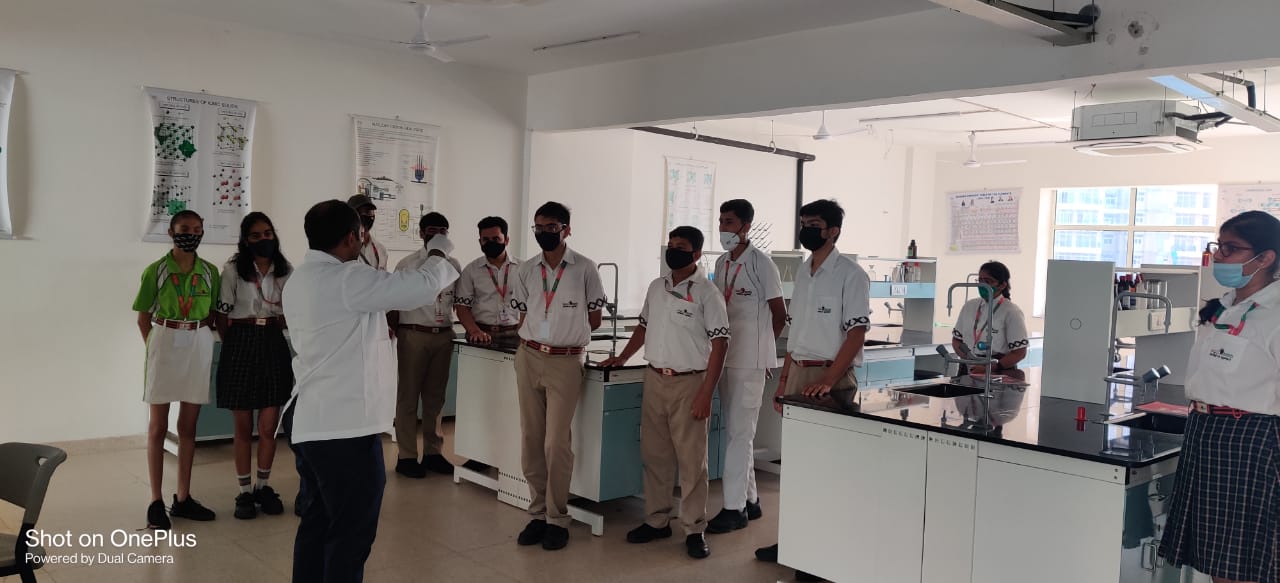
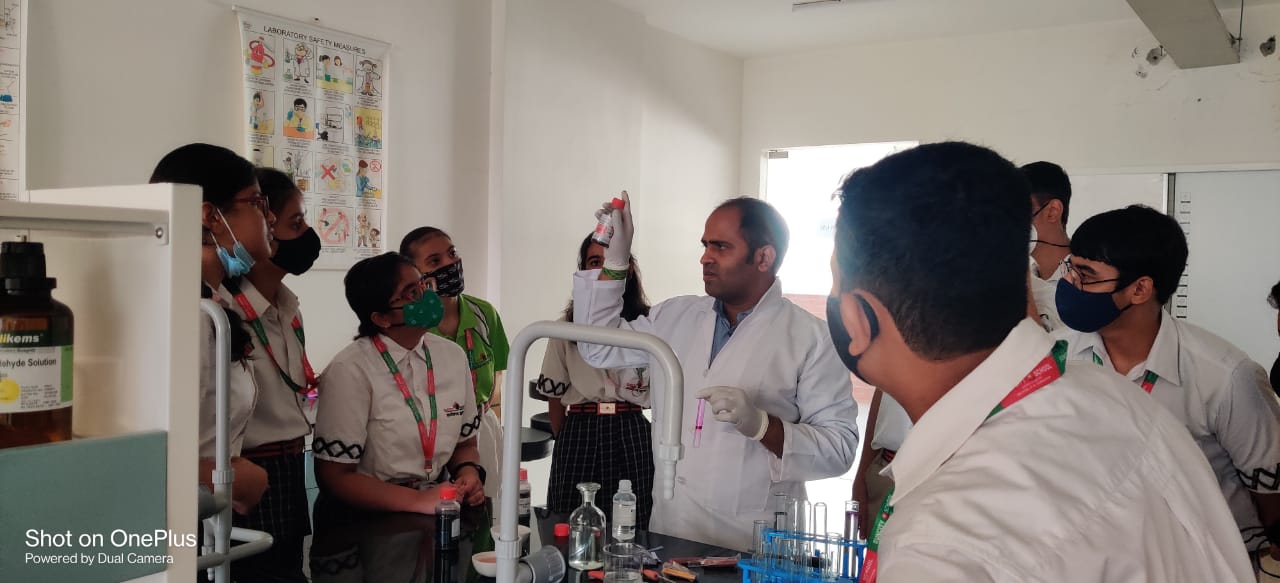
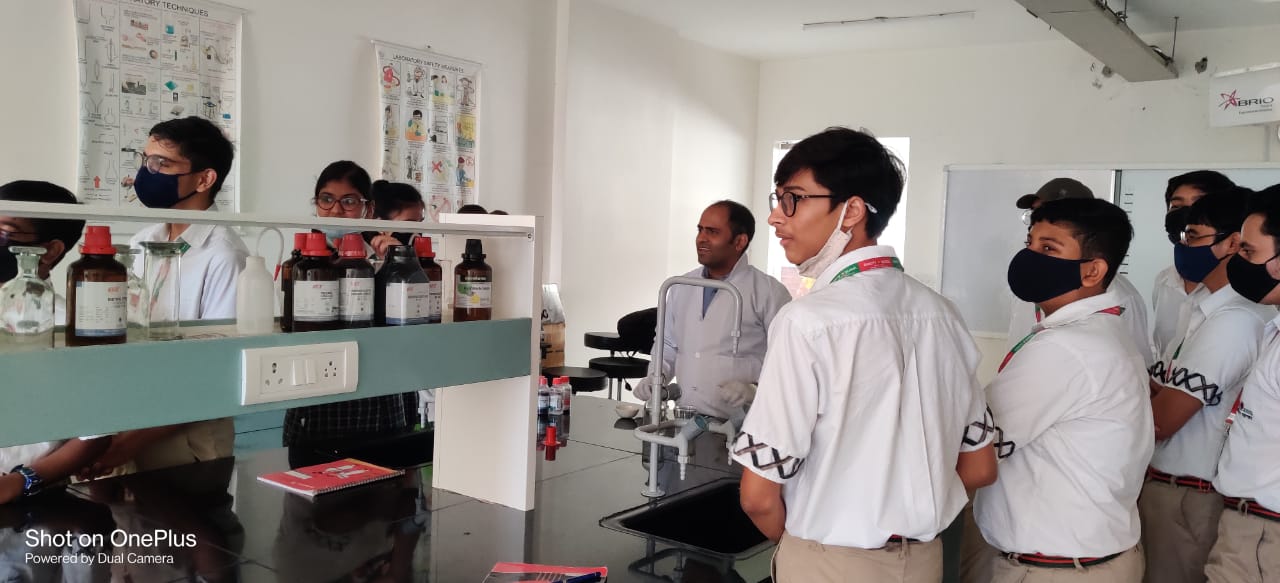
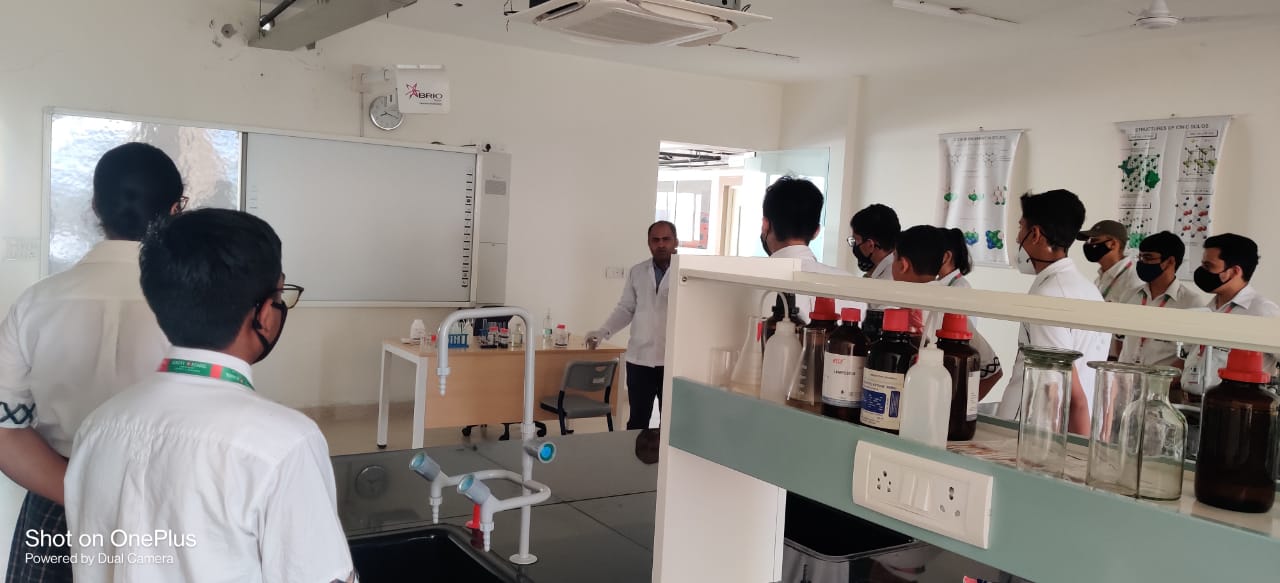




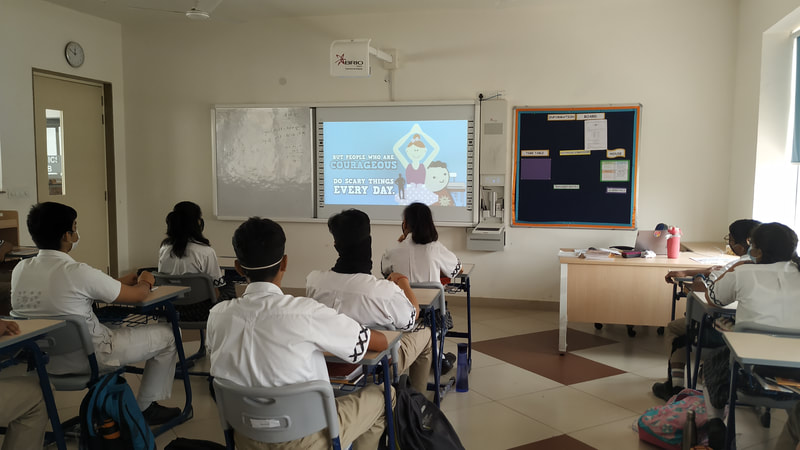
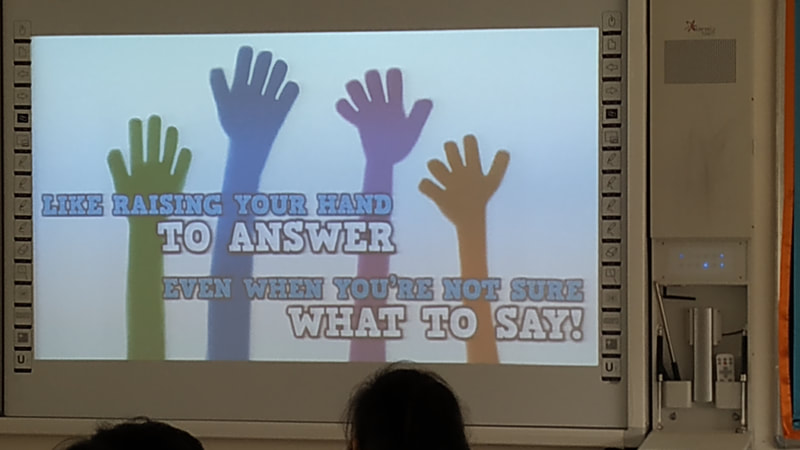

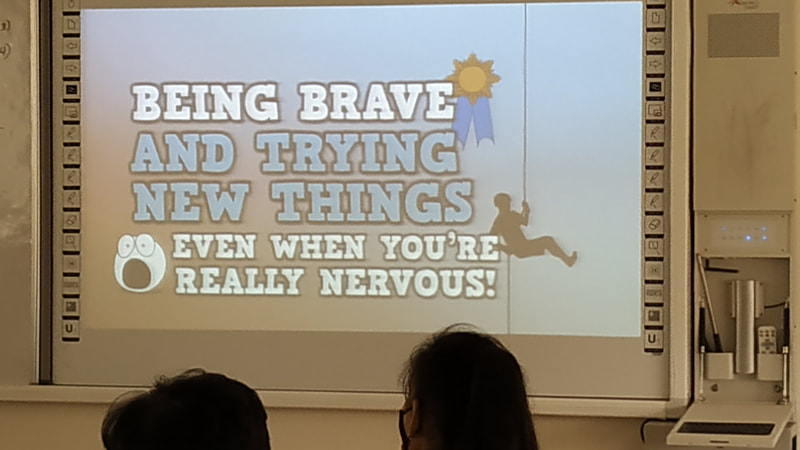
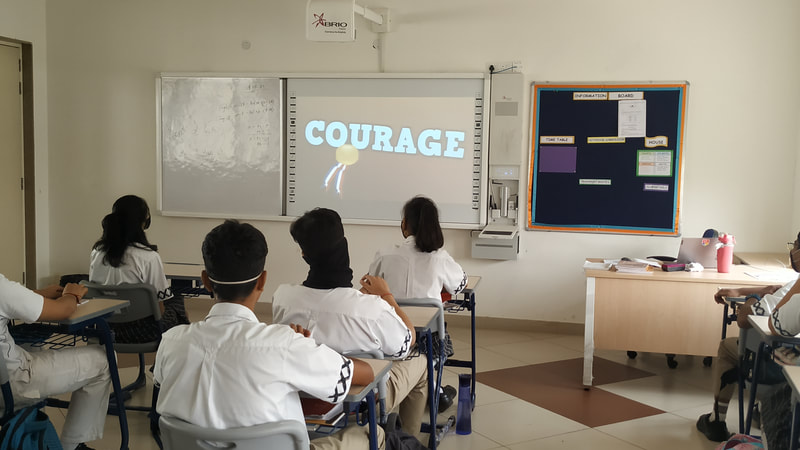
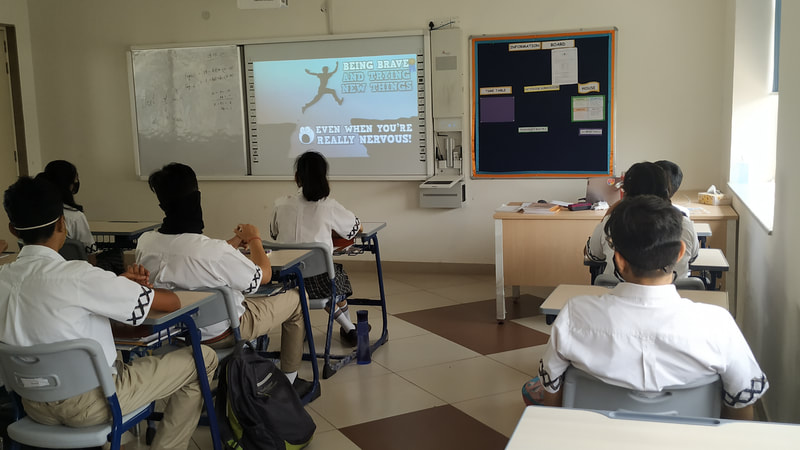
 RSS Feed
RSS Feed
